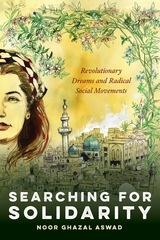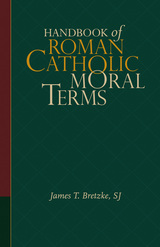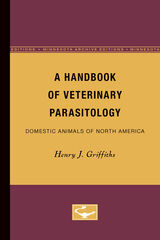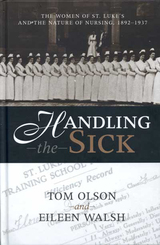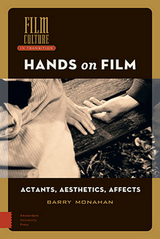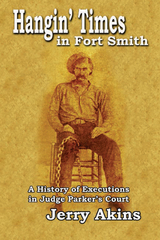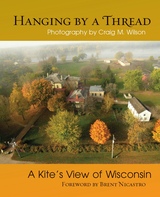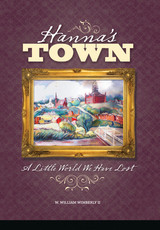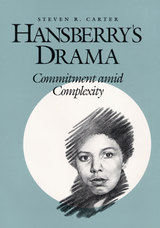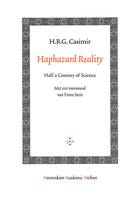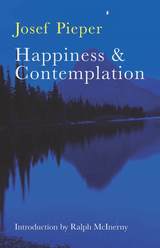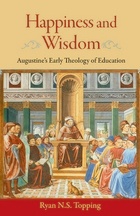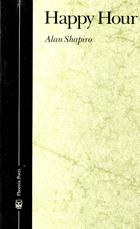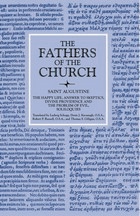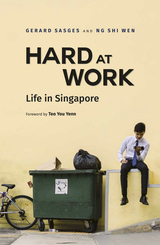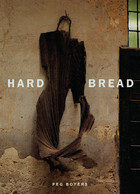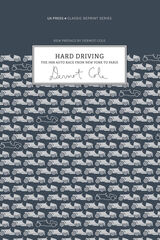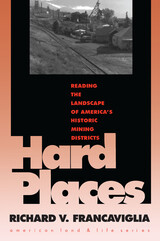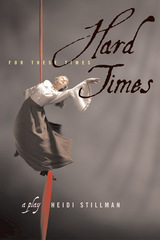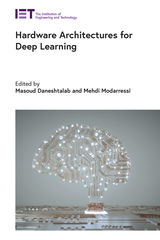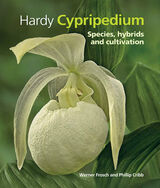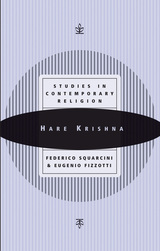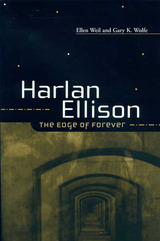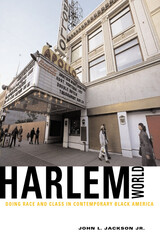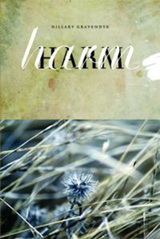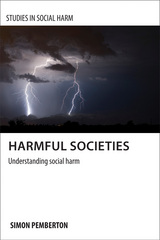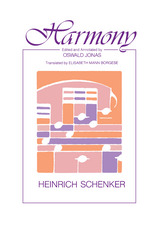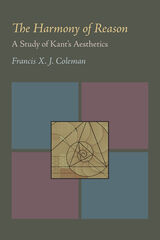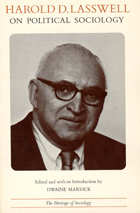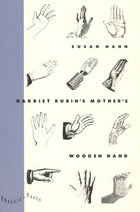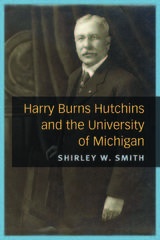Handbook of Roman Catholic Moral Terms
James T. Bretzke, SJ
Georgetown University Press, 2017 The Handbook of Roman Catholic Moral Terms contains more than 800 moral terms, offering concise definitions, historical context, and illustrations of how these terms are used in the Catholic tradition, including Church teaching and documents. James T. Bretzke, SJ, places Catholic tradition in a contemporary context in order to illuminate the continuities as well as discontinuities of Church teaching and key directions of Catholic thought. The author also provides extensive cross-referencing and bibliographic suggestions for further research. Designed to serve as a vital reference work for libraries, students and scholars of theology, priests and pastoral ministers, as well as all adults interested in theological enrichment or continuing education, the Handbook of Roman Catholic Moral Terms is the most comprehensive post–Vatican II work of its kind available in English.
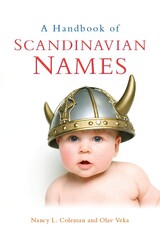 A Handbook of Scandinavian Names
Nancy L. Coleman
University of Wisconsin Press, 2010 Are you looking for
• A Scandinavian name for your baby?
• The names of Norse gods and heroes?
• The history and meaning of Scandinavian first names?
• Variations and alternate spellings for common Scandinavian names?
• Naming traditions and customs in Norway, Sweden, and Denmark?
A Handbook of Scandinavian Names includes a dictionary of more than fifteen hundred given names from Norway, Sweden, and Denmark, plus some from Iceland and Finland. Each entry provides a guide to pronunciation and the origin and meaning of the name. Many entries also include variations and usage in the Scandinavian countries and famous bearers of the name.
Adding engaging context to the dictionary section is an extensive comparative guide to naming practices. The authors discuss immigration to North America from Scandinavia and the ways given names and surnames were adapted in the New World. Also included in the book is a history of Scandinavian names, information on “Name Days,” and discussion of significant names from mythology and history, including naming traditions in royal families. Winner, Reference Book of the Year, Midwest Book Awards
Finalist, USA Best Books Award for Parenting/Family Reference
 Handbook of Speckle Filtering and Tracking in Cardiovascular Ultrasound Imaging and Video
Christos P. Loizou
The Institution of Engineering and Technology, 2018 Ultrasound imaging technology has experienced a dramatic change in the last 30 years. Because of its non-invasive nature and continuing improvements in image quality, ultrasound imaging is progressively achieving an important role in the assessment and characterization of cardiovascular imaging. Speckle is inherent in ultrasound imaging giving rise to a granular appearance instead of homogeneous, flat shades of gray, as is visible and as such, speckle can severely compromise interpretation of ultrasound images, particularly in discrimination of small structures. On the other hand, speckle can be used in the detection of time varying phenomena, or tracking tissue motion. The objective of this book is to provide a reference edited volume covering the whole spectrum of speckle phenomena, theoretical background and modelling, algorithms and selected applications in cardiovascular ultrasound imaging and video processing and analysis. The book is organized under the following four parts, Part I: Introduction to Speckle Noise; Part II: Speckle Filtering; Part III: Speckle Tracking; Part IV: Selected Applications in Cardiovascular Imaging.
 Handbook of Sport and Japan
Helen Macnaughtan
Amsterdam University Press, 2024 The Handbook of Sport and Japan presents a fascinating collection of established and new scholarship, a valuable text for readers who want to use sport as lens to look more closely into a nation. The handbook draws on a diversity of perspectives, disciplines and experiences all of which respond to the challenge of including sport in the study of Japan. The chapters in the handbook convey what taking part in sport feels and looks like, highlighting the sporting accomplishments of Japanese athletes and teams, while also reflecting how the sporting experience interacts with economics, diplomacy, media, culture, demographics, gender, ethnicity and identity. Contributions pose key questions about what conclusions can be made when sport is placed in the foreground of key events in Japanese history, including pre-war industrialisation and empire building, to the post-war economic boom, the 2011 Tohoku Disaster and the recent COVID-19 pandemic.
 Handbook of the Irish Revival: An Anthology of Irish Cultural and Political Writings 1891-1922
Declan Kiberd
University of Notre Dame Press, 2016 The Irish Revival of 1891 to 1922 was an extraordinary era of literary achievement and political ferment. This period generated not only a remarkable crop of poets and writers but also a range of innovative political thinkers and activists. The contributors to this period exchanged ideas and opinions about what Ireland was and could become, yet much of this discourse remains out of print, some of these voices almost forgotten. Handbook of the Irish Revival: An Anthology of Irish Cultural and Political Writings 1891–1922 collects for the first time many of the essays, articles, and letters by renowned figures such as James Joyce, Maud Gonne, W. B. Yeats, George Bernard Shaw, Sean O'Casey, and J. M. Synge, among others. The anthology also contains pieces by less well-known individuals such as Stopford A. Brooke, Mary Colum, and Helena Molony. Many of the lesser known texts contextualize the social, political, and cultural lives, values, and aspirations of those involved in and on the periphery of the Revivalist movement. The introduction and commentary by Declan Kiberd and P. J. Mathews convey the ideas of a brilliant generation that, in spite of difficulty and demoralization, audaciously shaped a modern Ireland. Divided into sixteen sections covering issues as diverse as literature, religion, drama, education, women’s rights, and the 1916 Rising, this is the ultimate reference book for anyone with an interest in Irish literature and history.
"My hope is that in reading these pieces readers will be encouraged to go on to engage with the writers involved in more depth. What the editors have done is to have saved for us the evidence of some of the most sensitive, idealistic, often combative people of an extraordinary set of decades that ended a century of devastation and began a new century that presented both a promise and a set of conflicts whose consequences would endure into our own times." —Michael D. Higgins, The President of Ireland, from the book
"This book is indispensable for an understanding of the cultural revolution that preceded and in key ways helped shape the political revolution in twentieth-century Ireland. For anyone interested in Irish culture, history, literature, and art, I can think of no better place to start than here. Highly recommended." —Christopher B. Fox, professor of English and director of the Keough-Naughton Institute for Irish Studies, University of Notre Dame
 Handbook of the Linguistic Atlas of the Middle and South Atlantic States
William A. Kretzschmar Jr., Virginia G. McDavid, Theodore K. Lerud, and Ellen Johnson
University of Chicago Press, 1993 Who uses "skeeter hawk," "snake doctor," and "dragonfly" to refer to the same insect? Who says "gum band" instead of "rubber band"? The answers can be found in the Linguistic Atlas of the Middle and South Atlantic States (LAMSAS), the largest single survey of regional and social differences in spoken American English. It covers the region from New York state to northern Florida and from the coastline to the borders of Ohio and Kentucky. Through interviews with nearly twelve hundred people conducted during the 1930s and 1940s, the LAMSAS mapped regional variations in vocabulary, grammar, and pronunciation at a time when population movements were more limited than they are today, thus providing a unique look at the correspondence of language and settlement patterns.
This handbook is an essential guide to the LAMSAS project, laying out its history and describing its scope and methodology. In addition, the handbook reveals biographical information about the informants and social histories of the communities in which they lived, including primary settlement areas of the original colonies. Dialectologists will rely on it for understanding the LAMSAS, and historians will find it valuable for its original historical research.
Since much of the LAMSAS questionnaire concerns rural terms, the data collected from the interviews can pinpoint such language differences as those between areas of plantation and small-farm agriculture. For example, LAMSAS reveals that two waves of settlement through the Appalachians created two distinct speech types. Settlers coming into Georgia and other parts of the Upper South through the Shenandoah Valley and on to the western side of the mountain range had a Pennsylvania-influenced dialect, and were typically small farmers. Those who settled the Deep South in the rich lowlands and plateaus tended to be plantation farmers from Virginia and the Carolinas who retained the vocabulary and speech patterns of coastal areas.
With these revealing findings, the LAMSAS represents a benchmark study of the English language, and this handbook is an indispensable guide to its riches.
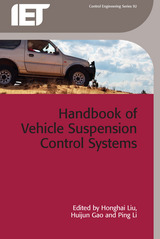 Handbook of Vehicle Suspension Control Systems
Honghai Liu
The Institution of Engineering and Technology, 2013 Handbook of Vehicle Suspension Control Systems surveys the state-of-the-art in advanced suspension control theory and applications. Topics covered include an overview of intelligent vehicle suspension control systems; intelligence-based vehicle active suspension adaptive control systems; robust active control of an integrated suspension system; an interval type-II fuzzy controller for vehicle active suspension systems; active control for actuator uncertain half-car suspension systems; active suspension control with finite frequency approach; fault-tolerant control for uncertain vehicle suspension systems via fuzzy control approach; h-infinity fuzzy control of suspension systems with actuator saturation; design of sliding mode controllers for semi-active suspension systems with magnetorheological dampers; joint design of controller and parameters for active vehicle suspension; an LMI approach to vibration control of vehicle engine-body systems with time delay; and frequency domain analysis and design of nonlinear vehicle suspension systems.
Handbook of Ventilation Technology for the Built Environment: Design, control and testing
Shi-Jie Cao
The Institution of Engineering and Technology, 2022 The general purpose of ventilation in buildings is to provide healthy air for breathing by both diluting the pollutants originating in the building and removing the pollutants from it. Building ventilation plays a strong role for the good health, comfort, security and productivity of inhabitants, workers and visitors. Many new challenges with energy and pollution implications have arisen, including the identification and control of contaminant sources, fast building design requirements, online demand, sustainability and climate change adaptation.
A Handbook of Veterinary Parasitology: Domestic Animals of North America
Henry Griffiths
University of Minnesota Press, 1978
A Handbook of Veterinary Parasitology was first published in 1978.Practitioners, teachers, and students of veterinary medicine and animal technicians will find this handbook extremely useful in their work. It provides a quick and easy reference for the identification and control of parasites and parasitic disease in the domestic animals of North America. The information given about each parasite includes habitat, distribution, life cycle, transmission, signs and pathogenicity, and control. Some of the commonly used laboratory techniques and diagnostic procedures are outlined, a host-parasite listing is provided, and there is additional information in the appendix about some of the parasiticides and chemotherapeutic agents which are mentioned in the text.
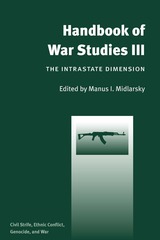 Handbook of War Studies III: The Intrastate Dimension
Manus I. Midlarsky, ed.
University of Michigan Press, 2009 "Midlarsky has done it again, another state-of-the art handbook on the most recent developments in the study of war. This volume is entirely new with a focus on internal war. It is a 'must-read' for scholars and students of conflict. Even the most knowledgeable will learn a great deal from the book."
---John A. Vasquez, Thomas B. Mackie Scholar in International Relations, University of
Illinois at Urbana-Champaign "Handbook of War Studies III is a tour de force. This is a compelling and comprehensive work of scholarship. Midlarsky, as with previous volumes, has assembled an 'all star' team from the interdisciplinary field of conflict processes. In response to trends in place over the last few decades, this third volume rightly focuses on the intrastate dimension of international conflict. The volume includes lucid presentations on rational choice and political psychology as alternative visions, along with convincing treatments of civil war, ethnic conflict, genocide, and related issues. This book will be required reading for anyone with an interest in conflict processes."
---Patrick James, Director, Center for International Studies, University of Southern California "This third volume of the Handbook is a very welcome addition with its focus on intrastate conflict. Scholarship on internal conflict has proliferated over the past decade, and therefore it is time to take stock of the work that has been done and to point out directions for future research. In this volume a team of leading scholars do just that as they provide trenchant assessments of what has been accomplished and what are the remaining big questions that require further research. This volume will be indispensable to students and scholars alike."
---Paul Huth, Editor, Journal of Conflict Resolution, and Professor of Government and Politics, University of Maryland, College Park Handbook of War Studies III is a follow-up to Handbook of War Studies I (1993) and II (2000). This new volume collects original work from leading international relations scholars on domestic strife, ethnic conflict, genocide, and other timely topics. Special attention is given to civil war, which has become one of the dominant forms---if not the dominant form---of conflict in the world today. Contributors: Bruce Bueno de Mesquita, New York University, and Hoover Institution, Stanford University
Nils Petter Gleditsch, International Peace Research Institute, Oslo (PRIO), and Norwegian University of Science and Technology (NTNU), Trondheim
Håvard Hegre, University of Oslo, and International Peace Research Institute, Oslo (PRIO)
Erin K. Jenne, Central European University, Budapest
Mark Irving Lichbach, University of Maryland
Roy Licklider, Rutgers University, New Brunswick
T. David Mason, University of North Texas
Rose McDermott, Cornell University
Stephen Saideman, McGill University
Håvard Strand, International Peace Research Institute, Oslo (PRIO)
Monica Duffy Toft, Harvard University Manus I. Midlarsky is the Moses and Annuta Back Professor of International Peace and Conflict Resolution at Rutgers University, New Brunswick. He is the founding past president of the Conflict Processes Section of the American Political Science Association and a past vice president of the International Studies Association. Cover photograph © Matthew Rambo / iStockphoto.com
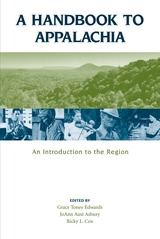 A Handbook to Appalachia: An Introduction to the Region
Grace Toney Edwards
University of Tennessee Press, 2006 Scholars who teach, write, or speak on the history and culture of the Appalachian region are frequently asked by students, administrators, or colleagues to recommend a relatively short, comprehensive book about Appalachia. Until now, there has been no interdisciplinary introductory text in Appalachian studies. A Handbook to Appalachia comprises a collection of concise, accessible overviews of the region written by top academics in a variety of fields, all directed at a general audience. Accompanied by dozens of inviting photographs, the essays offer information to those becoming acquainted with Appalachia for the first time as well as to more experienced observers of the region. The essays are arranged to show how various features of Appalachia are related. Each essay is followed by a list of suggested readings for further study. A Handbook to Appalachia provides a clear, concise first step toward understanding the expanding field of Appalachian studies, from the history of the area to its sometimes conflicted image, from its music and folklore to its outstanding literature.Chapters: History, The Peoples of Appalachia, Natural Resources and Environment, Economics, Politics of Change, Health Care, Education, Folklife, Literature, Religion, Visual Arts, and Appalachians Outside the Region.
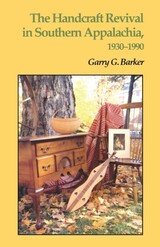 The Handcraft Revival in Southern Appalachia, 1930-1990
Garry G. Barker
University of Tennessee Press, 1991
Appalachians have always honored craft. Showoff quilts, complicated whittlings, "face jugs," intricate woven coverlets, and the work of famous basketmakers constituted the art of early Appalachia, the life and color of its remote mountain households. By the 1920s, however, the craft tradition was quickly vanishing. This lively, highly personal book recounts the "missionary" effort that preserved the traditional Appalachian craft culture and traces the organization, politics, and economics of later handcraft revival organizations in Southern Appalachia.
Deeply involved in many of the events he describes, Garry Barker has worked in the Appalachian crafts world since the early 1960s. He draws on memories of the leading craftspeople of a bygone era, LBJ's War on Poverty, mushrooming markets for craft products, and the rise of academic crafts training. The Handcraft Revival in Southern Appalachia represents the thoughtful winnowing of Barker's decades of serendipitous experience and disciplined observation, casual conversation and formal interviews, research and collecting, teaching and writing.
The book is the only history of the Appalachian craft movement between 1930 and 1990. As such it will become an essential resource for craftspeople, scholars, and all interested in the Southern Appalachian region. In addition, it constitutes a crucial chapter in the newly emerging history of American craft.
 Handel as Orpheus: Voice and Desire in the Chamber Cantatas
Ellen T. Harris
Harvard University Press, 2004 Handel wrote over 100 cantatas, compositions for voice and instruments that describe the joy and pain of love. In Handel as Orpheus, the first comprehensive study of the cantatas, Ellen Harris investigates their place in Handel's life as well as their extraordinary beauty.
The cantatas were written between 1706 and 1723--from the time Handel left his home in Germany, through the years he spent in Florence and Rome, and into the early part of his London career. In this period he lived as a guest in aristocratic homes, and composed these chamber works for his patrons and hosts, primarily for private entertainments. In both Italy and England his patrons moved in circles in which same-sex desire was commonplace--a fact that is not without significance, Harris reveals, for the cantatas exhibit a clear homosexual subtext.
Addressing questions about style and form, dating, the relation of music to text, rhythmic and tonal devices, and voicing, Handel as Orpheus is an invaluable resource for the study and enjoyment of the cantatas, which have too long been neglected. This innovative study brings greater understanding of Handel, especially his development as a composer, and new insight into the role of sexuality in artistic expression.
A Handful of Pleasant Delights (1584) by Clement Robinson and Divers Others
Hyder Edward Rollins
Harvard University Press Lovers of poetry as well as students of Tudor literature and of English balladry will welcome this new edition of “A Handful of Pleasant Delights,” a book which was a favorite of Shakespeare. Of modern reprints there have been three; not only are all practically unobtainable, but furthermore none treats the miscellany from the point of view of balladry, none has a wholly accurate text, and none has a discussion of the problem that gives vital interest to the book—the question of its date. In the present edition the texts are reprinted line for line, page for page, from the unique copy of the 1584 edition, now preserved at the British Museum. The editorial matter is unusually complete. The typography has been supervised by Bruce Rogers, so that the physical make-up of the book is worthy of the alluring poetry thus presented to a new generation.
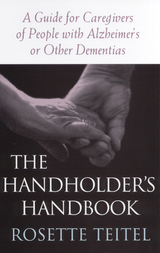 The Handholder's Handbook: A Guide for Caregivers of People with Alzheimer's or Other Dementias
Teitel, Rosette
Rutgers University Press, 2001 In a national survey, 19 million Americans said they have a family member with Alzheimer's, and 37 million said they knew someone who had it. But when Rosette Teitel found herself in the role of caregiver to her ailing husband, she could find no books that answered her practical needs: How do you give a 170-pound man a shower? How do you pick him up when he falls? What support networks are available? When is it time to consider a nursing home and how do you find one? While many books about Alzheimer's disease focus on the illness and the patient, Teitel draws on her own experience to tackle subjects rarely dealt with in other self-help books. She covers topics such as managing the expenses of long-term care through Medicaid, estate planning, and preparing for the patient's death and the loss of someone whose daily survival has been at the center of one's existence. The chapters contain information on diagnosis, treatment, and the progression of the disease; the physical and emotional changes involved with the day-to-day caregiving; support networks; nursing homes; finances; death of the patient; mourning, and life after the patient's death; and interviews with caring children of parents with Alzheimer's disease. In addition, Teitel provides a helpful list of frequently asked questions, scheduling and memory aids, and websites where readers can find resources.
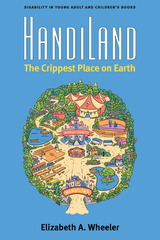 HandiLand: The Crippest Place on Earth
Elizabeth A. Wheeler
University of Michigan Press, 2019 HandiLand looks at young adult novels, fantasy series, graphic memoirs, and picture books of the last 25 years in which characters with disabilities take center stage for the first time. These books take what others regard as weaknesses—for instance, Harry Potter’s headaches or Hazel Lancaster’s oxygen tank—and redefine them as part of the hero’s journey. HandiLand places this movement from sidekick to hero in the political contexts of disability rights movements in the United States, the United Kingdom, and Ghana.
Elizabeth A. Wheeler invokes the fantasy of HandiLand, an ideal society ready for young people with disabilities before they get there, as a yardstick to measure how far we’ve come and how far we still need to go toward the goal of total inclusion. The book moves through the public spaces young people with disabilities have entered, including schools, nature, and online communities. As a disabled person and parent of children with disabilities, Wheeler offers an inside look into families who collude with their kids in shaping a better world. Moving, funny, and beautifully written, HandiLand: The Crippest Place on Earth is the definitive study of disability in contemporary literature for young readers.
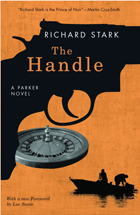 The Handle: A Parker Novel
Richard Stark
University of Chicago Press, 2009 An action-packed crime novel starring Parker, the heister starring in the forthcoming Shane Black film Play Dirty!
Richard Stark's Parker novels are the hardest of hard-boiled, classic crime novels where the heists are huge, the body counts are high, and the bad guys usually win.
The Parker novels have been a huge influence on countless writers and filmmakers, including Quentin Tarantino, Stephen King, George Pelecanos, Colson Whitehead, Lucy Sante, John Banville, and many more. Their stripped-down language and hard-as-nails amorality create an unforgettable world where the next score could be the big one, but your next mistake could also be your last. There's nothing else like them.
In The Handle, Parker is enlisted by the mob to knock off an island casino guarded by speedboats and heavies, forty miles from the Texas coast. Working with his trusted colleague Alan Grofield, but dealing with double-crosses and double-dealings by others from the word go, Parker knows the line between success and failure on this score would be exactly the length of the barrel of a .38.
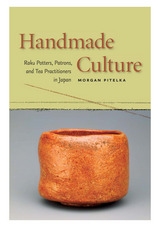 Handmade Culture: Raku Potters, Patrons, and Tea Practitioners in Japan
Morgan Pitelka
University of Hawaii Press, 2005 Handmade Culture is the first comprehensive and cohesive study in any language to examine Raku, one of Japan’s most famous arts and a pottery technique practiced around the world. More than a history of ceramics, this innovative work considers four centuries of cultural invention and reinvention during times of both political stasis and socioeconomic upheaval. It combines scholarly erudition with an accessible story through its lively and lucid prose and its generous illustrations. The author’s own experiences as the son of a professional potter and a historian inform his unique interdisciplinary approach, manifested particularly in his sensitivity to both technical ceramic issues and theoretical historical concerns.
Handmade Culture makes ample use of archaeological evidence, heirloom ceramics, tea diaries, letters, woodblock prints, and gazetteers and other publications to narrate the compelling history of Raku, a fresh approach that sheds light not only on an important traditional art from Japan, but on the study of cultural history itself.
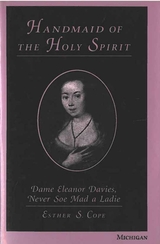 Handmaid of the Holy Spirit: Dame Eleanor Davies, Never Soe Mad a Ladie
Esther S. Cope
University of Michigan Press, 1993 On the morning of July 28, 1625, Dame Eleanor Davis (1590-1652) heard "a great voice from heaven" tell her "There is Nintene years and a halfe to the day of Judgement and you as the meek Virgin." She believed the message came from the prophet Daniel and began immediately to explain how the books of Daniel and Revelation applied to England's history. In the next twenty-seven years, she wrote more than sixty religious and political tracts addressed to the king, the Parliament, and the public. Filled with anagrams, puns, and carefully contrived literary imagery, these tracts offered a devastating critique of the patriarchal society in which Eleanor Davies lived. Handmaid of the Holy Spirit draws upon a rich array of primary documents and provides scholars of history, literature, and religion a basis for reevaluating their conclusions about seventeenth-century England. Nonspecialists will also find the dramatic story of the fascinating and eccentric Lady Eleanor Davies compelling reading.
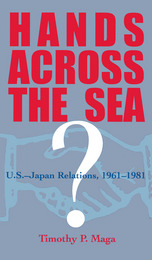 Hands Across the Sea?: U.S.-Japan Relations, 1961–1981
Timothy P. Maga
Ohio University Press, 1997 In 1961, the U.S. economy and military remained unassailable in the eyes of the world. Within twenty years, America faced defeat in Vietnam and its economy had been shaken. Japan was now considered the great economic superpower, while the U.S. and Japan reversed roles as surplus and debtor nations. Hands across the Sea? examines this reversal of roles, determining how and why America and Japan became the post-World War II era’s most argumentative allies. Through extensive research in a number of presidential libraries and author interviews with both American and Japanese policy-makers, Professor Maga finds a U.S.-Japan relationship forever troubled by cultural misunderstanding, America’s Cold War obsession, Japanese pride, and strangely conflicting goals in both trade and defense. Given the intensity of the arguments over some of these issues, it is remarkable that Washington and Tokyo continued a working dialogue during this critical time. Hands across the Sea? represents the first in-depth study of the modern U.S.-Japan relationship. It especially discovers how serious the U.S.-Japan disagreements over trade, defense, the direction of the Cold War, nuclear policy, and the environment had become. Whereas American observers of U.S.-Japan relations are quick to point out their fellow countrymen’s ignorance of other cultures and Japan’s brilliance in analyzing American policy and life, the evidence suggests otherwise. Steering far away from anyone’s political correctness, this book’s bottom line involves hard-hitting investigation and analysis.
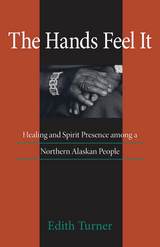 The Hands Feel It: Healing and Spirit Presence among a Northern Alaskan People
Edith Turner
Northern Illinois University Press, 1996
In a treeless land far north of the Arctic Circle, the Iñupiat live immensely practical lives, yet they have a profound belief in the spirit world. For them, everything—whether living being or inanimate object—has a spirit. This outlook reflects their sense of the connectedness of all life.
The Hands Feel It is the account of one person's experience among the Iñupiat. Anthropologist Edith Turner records occurrences of healing, spirit manifestation, and premonition in her narrative of a year in the life of an Eskimo community. Her diary captures for the reader sea ice, tundra, gravel beaches, and a determined and cheerful population. Sights, sounds, and even smells that Turner encounters provide context for a study in tune with the spiritual.
Accounts that ethnographers have often termed "myth" and "legend" Turner sees from a different point of view—not as mere stories but as real events the Iñupiat sincerely report to her. The value of Turner's work originates in her own connection to spirituality and in the growing receptiveness of the Iñupiat to her.
Hands on Film: Actants, Aesthetics, Affects
Barry Monahan
Amsterdam University Press, 2022 Hands on Film is a comprehensive study of the representations and on-screen uses of the human limb, spanning the history of the cinema from its birth to contemporary times. It examines how filmmakers have framed the hand for a variety of effects, from stylistic to thematic, and for the development of characterisation and narrative. The book offers insights into how films have created meaning by focusing on that part of the anatomy and, in turn, proposes a variety of ways in which its on-screen appearances might shed light on what it means to be sentient, cultured, and creative beings in the world.
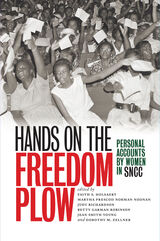 Hands on the Freedom Plow: Personal Accounts by Women in SNCC
Faith S. Holsaert
University of Illinois Press, 2012 In Hands on the Freedom Plow, fifty-two women--northern and southern, young and old, urban and rural, black, white, and Latina--share their courageous personal stories of working for the Student Nonviolent Coordinating Committee (SNCC) on the front lines of the Civil Rights Movement. The testimonies gathered here present a sweeping personal history of SNCC: early sit-ins, voter registration campaigns, and freedom rides; the 1963 March on Washington, the Mississippi Freedom Summer, and the movements in Alabama and Maryland; and Black Power and antiwar activism. Since the women spent time in the Deep South, many also describe risking their lives through beatings and arrests and witnessing unspeakable violence. These intense stories depict women, many very young, dealing with extreme fear and finding the remarkable strength to survive. The women in SNCC acquired new skills, experienced personal growth, sustained one another, and even had fun in the midst of serious struggle. Readers are privy to their analyses of the Movement, its tactics, strategies, and underlying philosophies. The contributors revisit central debates of the struggle including the role of nonviolence and self-defense, the role of white people in a black-led movement, and the role of women within the Movement and the society at large. Each story reveals how the struggle for social change was formed, supported, and maintained by the women who kept their "hands on the freedom plow." As the editors write in the introduction, "Though the voices are different, they all tell the same story--of women bursting out of constraints, leaving school, leaving their hometowns, meeting new people, talking into the night, laughing, going to jail, being afraid, teaching in Freedom Schools, working in the field, dancing at the Elks Hall, working the WATS line to relay horror story after horror story, telling the press, telling the story, telling the word. And making a difference in this world."
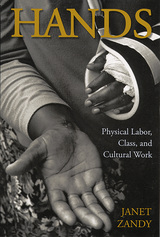 Hands: Physical Labor, Class, and Cultural Work
Zandy, Janet
Rutgers University Press, 2004 What are two hands worth?
In linking forms of cultural expression to labor, occupational injuries, and deaths, Hands: Physical Labor, Class, and Cultural Work centers what is usually decentered--the complex culture of working-class people. Janet Zandy begins by examining the literal loss of lives to unsafe jobs and occupational hazards. She asks critical and timely questions about worker representation--who speaks for employees when the mills, mines, factories, and even white-collar cubicles shut down? She presents the voices of working-class writers and artists, and discusses their contribution to knowledge and culture.
This innovative study reveals the flesh and bone beneath the abstractions of labor, class, and culture. It is an essential contribution to the emerging field of working-class studies, offering a hybrid model for bridging communities and non-academic workers to scholars and institutions of knowledge.
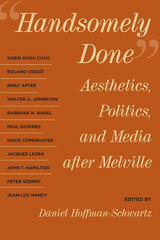 Handsomely Done: Aesthetics, Politics, and Media after Melville
Edited by Daniel Hoffman-Schwartz
Northwestern University Press, 2019 Handsomely Done: Aesthetics, Politics, and Media after Melville brings together leading and emerging scholars from comparative literature, critical theory, and media studies to examine Melville’s works in light of their ongoing afterlife and seemingly permanent contemporaneity. The volume explores the curious fact that the works of this most linguistically complex and seemingly most “untranslatable” of authors have yielded such compelling translations and adaptations as well as the related tendency of Melville’s writing to flash into relevance at every new historical-political conjuncture.
The volume thus engages not only Melville reception across media (Jorge Luis Borges, John Huston, Jean-Luc Godard, Led Zeppelin, Claire Denis) but also the Melvillean resonances and echoes of various political events and movements, such as the Attica uprising, the Red Army Faction, Occupy Wall Street, and Black Lives Matter. This consideration of Melville’s afterlife opens onto theorizations of intermediality, un/translatability, and material intensity even as it also continually faces the most concrete and pressing questions of history and politics.
 Hands-on Anatomy
Jacqueline Phillips
Temple University Press, 2024 Although palpation is a foundational skill for many healthcare disciplines, few resources provide comprehensive anatomical information and relate it to real-world clinical situations. With its detailed descriptions of musculoskeletal anatomy, instructions for palpating anatomical structures, depictions of basic injuries, and correlations with clinical practice, Hands-on Anatomy successfully bridges this gap.
Hands-on Anatomy targets undergraduate or graduate students who have completed an introductory anatomy course and are beginning to apply their anatomical knowledge to the human body, as well as healthcare professionals engaged in patient assessment and treatment. Organized by region of the body, chapters discuss skeletal landmarks, muscles, ligaments, and neurovascular structures, with a focus on how to palpate these structures. Additionally, guides on assessing the range of motion of joints are provided, along with descriptions of common clinical scenarios relating to each body area. The text is supplemented with images of skeletal landmarks and muscular anatomy, photos of surface landmarks and range of motion actives, and end-of-chapter review questions to ensure understanding and retention of what was described.
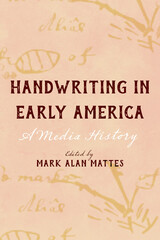 Handwriting in Early America: A Media History
Edited by Mark Alan Mattes, Foreword by Karen Sánchez-Eppler, Afterword by Christopher Hager
University of Massachusetts Press, 2023 As digital communication has become dominant, commentators have declared that handwriting is a thing of the past, a relic of an earlier age. This volume of original essays makes it clear that anxiety around handwriting has existed for centuries and explores writing practices from a variety of interdisciplinary fields, including manuscript studies, Native American studies, media history, African American studies, book history, bibliography, textual studies, and archive theory. By examining how a culturally diverse set of people grappled with handwriting in their own time and weathered shifting relationships to it, Handwriting in Early America uncovers perspectives that are multiethnic and multiracial, transatlantic and hemispheric, colonial and Indigenous, multilingual and illiterate. Essays describe a future of handwriting as envisioned by practitioners, teachers, and even government officials of this time, revealing the tension between the anxiety of loss and the need to allow for variations going forward. Contributors include James Berkey, Blake Bronson-Bartlett, John J. Garcia, Christopher Hager, Desirée Henderson, Frank Kelderman, Michelle Levy, Lisa Maruca, Christen Mucher, Alan Niles, Seth Perlow, Carla L. Peterson, Sarah Robbins, Patricia Jane Roylance, Karen Sánchez-Eppler, and Danielle Skeehan.
 Handwriting of the Twentieth Century
Rosemary Sassoon
Intellect Books, 2007 As letter-writing has fallen by the wayside, the art of lavish yet legible handwriting is no longer being taught to schoolchildren or employed in daily life—much to the dismay of those who receive hastily scrawled love notes or try to decipher a doctor’s prescription. In an age when script manuals for students are disappearing at a rapid rate and writing samples are ephemeral, Rosemary Sassoon’s Handwriting of the Twentieth Century provides the first historical record of teaching the skill of writing in the last 100 years.
In addition to illustrating the techniques used by handwriting instructors and documenting the ever-changing views of script stylists, this volume probes the development and manufacture of writing equipment as well as useful examples for today’s teachers of writing. Handwriting of the Twentieth Century is a delightful, comprehensive account of our constant quest for fluent and clear handwritten script.
“...excellent and comprehensive illustrated book—which takes us through not only what happened in the United Kingdom, but brings in information about other English speaking countries such as America and Australia as well as European scripts, providing samples and explanations that are valuable as a reference. . . . The book's well-written Epilogue merits a section being printed—It couldn't be put better by a graphologist!”—Elaine Quigley, Graphologist
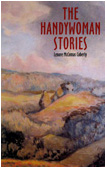 The Handywoman Stories
Lenore McComas Coberly
Ohio University Press, 2002 Sometimes it's possible to pick up a book and hear the words being spoken by the characters as if you were sitting across the table from them. This is the sensation you'll have as you read through The Handywoman Stories by Lenore McComas Coberly.
Whether the story describes the civil defense preparations of a small West Virginia town in World War II, the same town years later dealing with an influx of hippies, or the return of a woman to her roots after decades up north, the voices are convincing and true. “I nearly got kicked in the head by a cow before I learned that if you use your full strength pulling milk, you won’t get much milk,” says one. “To see Zevelda the way she was that Sunday is, well, not something you're very likely to see,” says another.
The Handywoman Stories themselves are driven by characters shaped by the place they have lived most all of their lives. They deal with economic depression, mine and war deaths, the arrogance of community leaders, and what might have been, but was not, a stultifying environment. Their tools are astonishing resourcefulness, steadfast friendship, and always humor.
Lenore McComas Coberly has woven together a bittersweet community of strong Appalachian women and men in this remarkable collection. Moving and joyful, these stories are made from the stuff of life.
Haneirot Halalu: These Lights Are Holy
Elyse D. Frishman
Central Conference of American Rabbis, 1989 The CCAR offers a complete compendium of liturgy and readings for home use at Chanuka. This simple and elegant retelling of the story builds nightly to an exciting conclusion. It includes poetic prayer readings, music selections, nightly blessing in Hebrew and English (with complete transliterations), instructions for the dreidel game and even a traditional recipe for latkes. Nine vibrant watercolors by the renowned artist Leonard Baskin infuse the story with warmth and rare beauty.
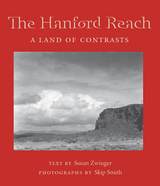 The Hanford Reach: A Land of Contrasts
Text by Susan Zwinger; Photographs by Skip Smith
University of Arizona Press, 2004 The desert country along the Columbia River is one of the West’s least-known desert places—one that most people don’t even drive through unless they are unusually curious travelers. The Hanford Reach is the last free stretch of the river between the McNary and Priest Rapids Dams, a place boasting a varied landscape of floodplains, wetlands, deserts, orchards—and nuclear reactors. This is not a place that people think to visit. Known primarily for hosting the country’s most toxic nuclear outpost, it is public land that barely exists in public consciousness. But because the Reach has been posted off-limits by the military since 1943, this book offers readers a little-seen glimpse into what the Pacific Northwest’s arid east was like before the postwar boom. Susan Zwinger has kayaked the Columbia through Hanford Reach with scientists and activists who are helping to restore it, and in this book she outlines the geographical extent of the Reach, reviews its history, and takes readers through the terrain by foot, on road, and on the river. Here is a land of dark lava flows and basalt cliffs interspersed throughout subtle, pale shrub-steppe, a table of aridity cut through by one of the country’s most prodigious rivers. Zwinger’s sparkling text, enhanced by Skip Smith’s striking photos, captures the subtleties of the contrasting vistas, just as it makes clear the depth of the radioactive poisoning within the soil and wildlife. We have only just begun to unfold the land’s treasures—petroglyphs, ancient village sites, new species, and geological wonders—and in 2000, President Clinton protected 560 square miles of land as the Hanford Reach National Monument. This book celebrates what is preserved in that buffer zone at the dawn of a new era of environmental responsibility.
Hangin' Times in Fort Smith: A History of Executions in Judge Parker’s Court
Jerry Akins
Butler Center for Arkansas Studies, 2012 For twenty-one years, Judge Isaac C. Parker ruled in the federal court at Fort Smith, Arkansas, the gateway to the wild and lawless Western frontier. Parker, however, was not the "hangin' judge" that casual legend portrays. In most cases, the guilt or innocence of those tried in his court really was not in question once their stories were told. These horrible crimes would have screamed out for justice in any circumstance. Author Jerry Akins has finally arrived at the real story about Parker and his court by comparing newspaper accounts of the trials and executions to what has been written and popularized in other books.
Hanging by a Thread: A Kite’s View of Wisconsin
Craig M. Wilson
University of Wisconsin Press, 2011 This full-color book of photographs records Wisconsin from an unusual viewpoint: a camera suspended from a kite and controlled by photographer Craig M. Wilson from the ground. Taken from fifty to a few hundred feet in the air, Wilson’s photos capture natural and man-made views that wouldn’t otherwise be possible. The result is a vibrant collection that captures Wisconsin in all its shifting beauty in landscapes and cityscapes, festivals, Door County’s lighthouses, Milwaukee’s neighborhoods, and the crowd at a Badger football game. Captions are provided in English, Spanish, German, and Mandarin Chinese.
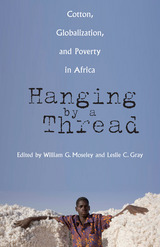 Hanging by a Thread: Cotton, Globalization, and Poverty in Africa
William G. Moseley
Ohio University Press, 2008 The textile industry was one of the first manufacturing activities to become organized globally, as mechanized production in Europe used cotton from the various colonies. Africa, the least developed of the world’s major regions, is now increasingly engaged in the production of this crop for the global market, and debates about the pros and cons of this trend have intensified.
Hanging by a Thread: Cotton, Globalization, and Poverty in Africa illuminates the connections between Africa and the global economy. The editors offer a compelling set of linked studies that detail one aspect of the globalization process in Africa, the cotton commodity chain.
From global policy debates, to impacts on the natural environment, to the economic and social implications of this process, Hanging by a Thread explores cotton production in the postcolonial period from different disciplinary perspectives and in a range of national contexts. This approach makes the globalization process palpable by detailing how changes at the macroeconomic level play out on the ground in the world’s poorest region. Hanging by a Thread offers new insights on the region in a global context and provides a critical perspective on current and future development policy for Africa.
Contributors: Thomas J. Bassett, Jim Bingen, Duncan Boughton, Brian M. Dowd, Marnus Gouse, Leslie C. Gray, Dolores Koenig, Scott M. Lacy, William G. Moseley, Colin Poulton, Bhavani Shankar, Corinne Siaens, Colin Thirtle, David Tschirley, and Quentin Wodon.
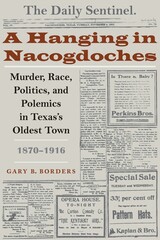 A Hanging in Nacogdoches: Murder, Race, Politics, and Polemics in Texas's Oldest Town, 1870-1916
By Gary B. Borders
University of Texas Press, 2006 On October 17, 1902, in Nacogdoches, Texas, a black man named James Buchanan was tried without representation, condemned, and executed for the murder of a white family—all in the course of three hours. Two white men played pivotal roles in these events: Bill Haltom, a leading local Democrat and the editor of the Nacogdoches Sentinel, who condemned lynching but defended lynch mobs, and A. J. Spradley, a Populist sheriff who, with the aid of hundreds of state militiamen, barely managed to keep the mob from burning Buchanan alive, only to escort him to the gallows following his abbreviated trial. Each man's story serves to illuminate a part of the path that led to the terrible parody of justice which lies at the heart of A Hanging in Nacogdoches. The turn of the twentieth century was a time of dramatic change for the people of East Texas. Frightened by the Populist Party's attempts to unite poor blacks and whites in a struggle for economic justice, white Democrats defended their power base by exploiting racial tensions in a battle that ultimately resulted in the complete disenfranchisement of the black population of East Texas. In telling the story of a single lynching, Gary Borders dramatically illustrates the way politics and race combined to bring horrific violence to small southern towns like Nacogdoches.
 The Hanging of Ephraim Wheeler: A Story of Rape, Incest, and Justice in Early America
Irene Quenzler Brown and Richard D. Brown
Harvard University Press, 2003 In 1806 an anxious crowd of thousands descended upon Lenox, Massachusetts, for the public hanging of Ephraim Wheeler, condemned for the rape of his thirteen-year-old daughter, Betsy. Not all witnesses believed justice had triumphed. The death penalty had become controversial; no one had been executed for rape in Massachusetts in more than a quarter century. Wheeler maintained his innocence. Over one hundred local citizens petitioned for his pardon--including, most remarkably, Betsy and her mother.
Impoverished, illiterate, a failed farmer who married into a mixed-race family and clashed routinely with his wife, Wheeler existed on the margins of society. Using the trial report to reconstruct the tragic crime and drawing on Wheeler's jailhouse autobiography to unravel his troubled family history, Irene Quenzler Brown and Richard D. Brown illuminate a rarely seen slice of early America. They imaginatively and sensitively explore issues of family violence, poverty, gender, race and class, religion, and capital punishment, revealing similarities between death penalty politics in America today and two hundred years ago.
Beautifully crafted, engagingly written, this unforgettable story probes deeply held beliefs about morality and about the nature of justice.
 Hanging Together: Cooperation and Conflict in the Seven-Power Summits
Robert Putnam
Harvard University Press, 1984 For nearly a decade the leaders of the seven major industrial countries—the United States, Japan, Germany, France, Britain, Italy, and Canada—have met annually to discuss international economic and political issues. Regular summitry of this sort is virtually unprecedented in modern diplomacy. Proponents see the Western summits as providing collective leadership that is vital in a turbulent world, while critics dismiss summitry as distracting and even damaging to political and economic stability.
Hanging Together charts the modern dilemma between economic interdependence and national sovereignty. It assesses the history, decisions, successes, and failures of the seven-power summits from Rambouillet in 1975 to the 1983 meeting at Williamsburg, and looks forward to the 1984 summit in London. The authors show how the growing importance of international commerce and finance has caused national and international politics to become entangled, and how national borders have become more permeable. Born in an era of waning American hegemony, the summits reveal the tension between American leadership and collective Western management of the world economy. The authors also trace the struggles of heads of state to balance the conflicting imperatives of personal authority and bureaucratic expertise. Because summits involve the power and prestige of each country's highest authorities, summitry reveals in concentrated form how these conflicts are expressed and managed.
As a blend of contemporary history and political economy, Hanging Together demonstrates that summits are not isolated annual encounters, but part of a continuous process of international and domestic negotiation about the most important and controversial issues facing all governments today.
 Hanging Together: Cooperation and Conflict in the Seven-Power Summits, Revised and Enlarged Edition
Robert Putnam and Nicholas Bayne
Harvard University Press, 1987 For nearly a decade the leaders of the seven major industrial countries—the United States, Japan, Germany, France, Britain, Italy, and Canada—have met annually to discuss international economic and political issues. Regular summitry of this sort is virtually unprecedented in modern diplomacy. Proponents see the Western summits as providing collective leadership that is vital in a turbulent world, while critics dismiss summitry as distracting and even damaging to political and economic stability.
Hanging Together charts the modern dilemma between economic interdependence and national sovereignty. It assesses the history, decisions, successes, and failures of the seven-power summits from Rambouillet in 1975 to the 1983 meeting at Williamsburg, and looks forward to the 1984 summit in London. The authors show how the growing importance of international commerce and finance has caused national and international politics to become entangled, and how national borders have become more permeable. Born in an era of waning American hegemony, the summits reveal the tension between American leadership and collective Western management of the world economy. The authors also trace the struggles of heads of state to balance the conflicting imperatives of personal authority and bureaucratic expertise. Because summits involve the power and prestige of each country's highest authorities, summitry reveals in concentrated form how these conflicts are expressed and managed.
As a blend of contemporary history and political economy, Hanging Together demonstrates that summits are not isolated annual encounters, but part of a continuous process of international and domestic negotiation about the most important and controversial issues facing all governments today.
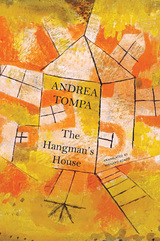 The Hangman's House
Andrea Tompa
Seagull Books, 2020 Set in the 1970s and ’80s, The Hangman’s House narrates the life and times of a Hungarian family in Romania. Those were extraordinary times of oppression, poverty and hopelessness, and Andrea Tompa’s latest novel depicts everyday life under the brutal communist dictatorship of Nicolae Ceaușescu, referred to by the narrator as an unnamed “one-eared hangman.” Ceaușescu is omnipresent throughout the story—in portraits in classrooms and schoolbooks, in the empty food stores, in TV programs, in obligatory Party demonstrations. Most insidiously, he is present in the dreams and nightmares of common people, who, in this cruel period of history, become cruel to one another, just like the dictator.
Our narrator, a teenage “Girl,” observes life through tangled, almost interminable sentences, trying to understand and process the many questions in her life: why her family is falling apart; why her mother has three jobs; why her father becomes an alcoholic; why her grandmother dreams of “Hungarian times”; and, most troubling, why there is persecution all around. Brutal though the times are, Girl’s narration is far from a mere indictment. It is suffused with love, tenderness and irony.
Written by a woman and featuring a young woman narrator, The Hangman's House focuses intently on how women play the principal roles in holding together the resilient fabric of society. Evocative of the celebrated wry humor that distinguishes the best of Hungarian literature, Tompa’s novel is a tour de force that will introduce a brilliant writer to English-language readers.
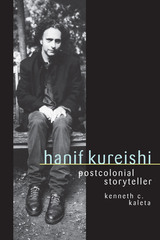 Hanif Kureishi: Postcolonial Storyteller
By Kenneth C. Kaleta
University of Texas Press, 1997 "Hanif Kureishi is a proper Englishman. Almost." So observes biographer Kenneth Kaleta. Well known for his films My Beautiful Laundrette and Sammy and Rosie Get Laid, the Anglo-Asian screenwriter, essayist, and novelist has become one of the leading portrayers of Britain's multicultural society. His work raises important questions of personal and national identity as it probes the experience of growing up in one culture with roots in another, very different one. This book is the first critical biography of Hanif Kureishi. Kenneth Kaleta interviewed Kureishi over several years and enjoyed unlimited access to all of his working papers, journals, and personal files. From this rich cache of material, he opens a fascinating window onto Kureishi's creative process, tracing such works as My Beautiful Laundrette, Sammy and Rosie Get Laid, The Buddha of Suburbia, London Kills Me, The Black Album, and Love in a Blue Time from their genesis to their public reception. Writing for Kureishi fans as well as film and cultural studies scholars, Kaleta pieces together a vivid mosaic of the postcolonial, hybrid British culture that has nourished Kureishi and his work.
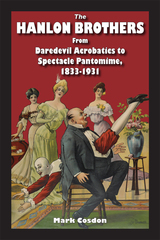 The Hanlon Brothers: From Daredevil Acrobatics to Spectacle Pantomime, 1833-1931
Mark Cosdon
Southern Illinois University Press, 2010 The Hanlons—a family of six brothers from Manchester, England—were one of the world’s premiere performing troupes in the mid-nineteenth and early twentieth centuries, yet their legacy has been mostly forgotten. In The Hanlon Brothers: From Daredevil Acrobatics to Spectacle Pantomime, 1833–1931, Mark Cosdon carefully documents the careers of this talented family and enumerates their many contributions to modern popular entertainment. As young men, the Hanlons stunned audiences all over the world with their daring acrobatic feats. After a tragic accident severely injured one brother (and indirectly led to his suicide in a manner achievable only by someone with considerable acrobatic talents), they moved into the safer arena of spectacle pantomime, where they became the rage of Parisian popular theatre. They achieved fame with their uproariously funny and technically astonishing production of Le Voyage en Suisse. After settling permanently in the northeastern United States, they developed two more full-length pantomimes, Fantasma and Superba. The three shows toured for more than thirty years, a testament to their popularity and to the Hanlons’ impressive business acumen. The book’s illustrations—including sketches of their performances, studio photographs of the Hanlons, and posters for all three of their major pantomimes—are essential to the understanding of their work. The Hanlon Brothers is painstakingly researched yet accessible and engaging. Cosdon has managed to provide a thorough and engrossing account of the Hanlons’ lives and careers, which will no doubt help to reestablish their legacy in the world of popular entertainment.
Hannah Arendt: A Critical Introduction
Finn Bowring
Pluto Press, 2011 Hannah Arendt is one of the most famous political theorists of the twentieth century, yet in the social sciences her work has rarely been given the attention it deserves. This careful and comprehensive study introduces Arendt to a wider audience.
Finn Bowring shows how Arendt's writings have engaged with and influenced prominent figures in the sociological canon, and how her ideas may shed light on some of the most pressing social and political problems of today. He explores her critique of Marx, her relationship to Weber, the influence of her work on Habermas and the parallels and discrepancies between her and Foucault. This is a clearly written and scholarly text which surveys the leading debates over Arendt’s work, including discussions of totalitarianism, the public sphere and the nature of political responsibility.
This book will bring new perspectives to students and lecturers in sociology and politics.
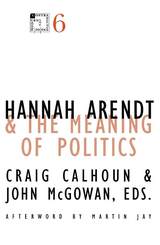 Hannah Arendt and the Meaning of Politics
Craig Calhoun
University of Minnesota Press, 1997 Eminent contributors consider what Hannah Arendt means in today’s public debates. Is politics really nothing more than power relations, competing interests and claims for recognition, conflicting assertions of “simple” truths? No thinker has argued more passionately against this narrow view than Hannah Arendt, and no one has more to say to those who bring questions of meaning, identity, value, and transcendence to our impoverished public life. This volume brings leading figures in philosophy, political theory, intellectual history, and literary theory into a dialogue about Arendt’s work and its significance for today’s fractious identity politics, public ethics, and civic life. For each essay—on the fate of politics in a postmodern, post-Marxist era; on the connection of nonfoundationalist ethics and epistemology to democracy; on the conditions conducive to a vital public sphere; on the recalcitrant problems of violence and evil—the volume includes extended responses, and a concluding essay by Martin Jay responding to all the others. Ranging from feminism to aesthetics to the discourse of democracy, the essays explore how an encounter with Arendt reconfigures, disrupts, and revitalizes what passes for public debate in our day. Together they forcefully demonstrate the power of Arendt’s work as a splendid provocation and a living resource.Contributors: Richard Bernstein, New School; Anthony Cascardi, U of California, Berkeley; Susan Bickford, U of North Carolina; Kim Curtis, Duke U; Lisa Disch, U of Minnesota; Nancy Fraser, New School; Martin Jay; U of California, Berkeley, Steven Leonard, U of North Carolina; Kirstie McClure, Johns Hopkins U; Dana Villa, Amherst College; and Eli Zaretsky, U of Missouri.
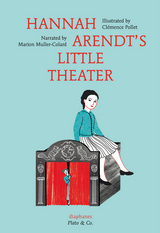 Hannah Arendt's Little Theater
Marion Muller-Colard
Diaphanes, 2016 At its most basic, philosophy is about learning how to think about the world around us. It should come as no surprise, then, that children make excellent philosophers! Plato & Co. introduces children—and curious grown-ups—to the lives and work of famous philosophers, from Socrates to Descartes, Einstein, Marx, and Wittgenstein. Each book in the series features an engaging—and often funny—story that presents basic tenets of philosophical thought alongside vibrant color illustrations.
In Hannah Arendt’s Little Theater, the philosopher Hannah Arendt is about to finish her last book, but she is sure something is missing. As she puzzles over her words, she is visited by a friend from the past—none other than her nine-year-old self! Reluctantly, she accepts young Hannah’s helping hand, joining the small blue-cardiganed girl on an adventure through the streets of New York City to a tiny theater where they watch a frightening play about a town terrorized by an evil wolf and his pack of puppets. But, even in the blackest moments, when evil seems sure to prevail, it is always possible to turn things around. Could the same be said of the “theater” of the real world, in which real people come together to create change?
Plato & Co.’s clear approach and charming illustrations make this series the perfect addition to any little library.
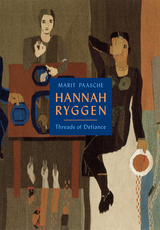 Hannah Ryggen: Threads of Defiance
Marit Paasche
University of Chicago Press, 2019 Hannah Ryggen (1894–1970) was a Swedish-Norwegian modern artist who began her career as a painter before switching to creating political art in the form of monumental tapestries. Combining the decorative and the political, Ryggen was ahead of her time with her turn to “political weaving.” She was also a feminist with strong communist sympathies involved in the international workers’ movement. Her dramatic, beautiful tapestries were shown at both the Paris and Brussels World’s Fairs, but she was largely forgotten by the international art world in the decades after her death. In recent years, however, as interest in both fiber arts and pioneering women artists has grown, Ryggen’s work has returned to the public eye, with major international exhibitions and fresh attention from curators, collectors, and critics.
A widely recognized authority on Ryggen, Marit Paasche brings this important Scandinavian artist to the foreground in this biography, the first published on Ryggen in English. Paasche looks at Ryggen within the social, political, and cultural contexts of her time and explores how these issues informed her work, from her anti-fascist tapestry that depicted a spear piercing Mussolini’s head to one protesting the war in Vietnam. Published to correspond with a major retrospective in Frankfurt, of which Paasche is one of the curators, Hannah Ryggen is a foundational book that will provide a crucial introduction of this artist to a broader audience.
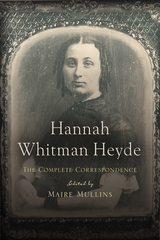 Hannah Whitman Heyde: The Complete Correspondence
Maire Mullins
Bucknell University Press, 2022 The correspondence of Hannah Whitman Heyde (1823-1908), younger sister of poet Walt Whitman, provides a rare glimpse into the life of a nineteenth-century woman. Married to well-known Vermont landscape artist Charles Louis Heyde (1820-1892), Hannah documented in letters to her mother, Louisa Van Velsor Whitman (1795-1873), and other family members, her lived experience of ongoing physical and emotional abuse at the hands of her husband. Hannah has long been characterized in biographical and scholarly studies of Whitman’s family as a neurotic and a hypochondriac—a narrative promulgated by Heyde himself—but Walt Whitman carefully preserved his sister’s letters, telling his literary biographer that his intention was to document her plight. Hannah’s complete letters, gathered here for the first time and painstakingly edited and annotated by Maire Mullins, provide an important counternarrative, allowing readers insight into the life of a real nineteenth-century woman, sister, and wife to famous men, who endured and eventually survived domestic violence.
Hanna's Town: A Little World We Have Lost
W. William Wimberly II
Indiana Historical Society Press, 2010 In late autumn 1902 a macabre scene unfolded at the original burial ground of Wabash, which had been called both the Old Cemetery and Hanna's Cemetery. The task at hand was the disinterment of four bodies. The newest of the four graves held whatever might be left of the corpse of Colonel Hugh Hanna who, more than any other single citizen, was the founding father and civic icon of the prosperous and picturesque community. This book tells the story of a town that rose from the wilderness, one with a bustling economy, a sense of community, civic pride, broad economic connections, architectural achievements, and various other cultural pretensions.
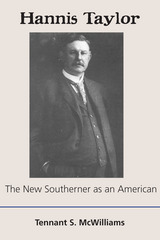 Hannis Taylor: The New Southerner as an American
Tennant McWilliams
University of Alabama Press, 1978 How a proponent of the New South creed could move easily to advocate the nationalistic foreign and domestic policies often associated with Theodore Roosevelt
During the late nineteenth and early twentieth centuries, American life took on contradictions that were later to surface with considerable poignancy. While many publicists and politicians foresaw an America of harmony and great opportunity, they also clung tenaciously to such doctrines as Anglo-Saxon racial superiority and the righteousness of liberal capitalism-notions that worked to defeat the progress they espoused. Here is a study of one of those persons, Hannis Taylor.
For a number of reasons Taylor’s life is uniquely useful for the historian interested in the paradoxes of American life at the turn of the century. Unlike many others of the era who have been examined through biography, Taylor pursued the multifaceted career of practicing attorney, constitutional historian, journalist, diplomat, and ever-aspiring politician. Hence he had occasion to write and speak on almost every intellectual and popular issue of the period. His record serves as a microcosm of many of the contradictions spanning American thought during that time. Further, Taylor was a Southerner. Before moving to Washington, D.C. in 1902, Taylor had grown up in a North Carolina torn by the Civil War and had taken an active role in Alabama affairs during the three decades following Reconstruction. His life shows how a proponent of the New South creed could move easily to advocate the nationalistic foreign and domestic policies often associated with Theodore Roosevelt. Finally, from a humanistic standpoint Taylor's life permits a study in human strivings for achievement. American historiography gravitates to the successful; here is an account of a more common stereotype, the man who worked relentlessly at becoming a noted American by supporting popular causes and who failed tragically.
Hanoi Jane
Lembcke Jerry
University of Massachusetts Press, 2010
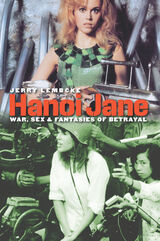 Hanoi Jane: War, Sex, and Fantasies of Betrayal
Jerry Lembcke
University of Massachusetts Press, 2010 From Aristophanes' Lysistrata to the notorious Mata Hari and the legendary Tokyo Rose, stories of female betrayal during wartime have recurred throughout human history. The myth of Hanoi Jane, Jerry Lembcke argues, is simply the latest variation on this enduring theme. Like most of the iconic femmes fatales who came before, it is based on a real person, Jane Fonda. And also like its predecessors, it combines traces of fact with heavy doses of fiction to create a potent symbol of feminine perfidy—part erotic warrior-woman Barbarella, part savvy antiwar activist, and part powerful entrepreneur.
Hanoi Jane, the book, deconstructs Hanoi Jane, the myth, to locate its origins in the need of Americans to explain defeat in Vietnam through fantasies of home-front betrayal and the emasculation of the national will-to-war. Lembcke shows that the expression "Hanoi Jane" did not reach the eyes and ears of most Americans until five or six years after the end of the war in Vietnam. By then, anxieties about America's declining global status and deteriorating economy were fueling a populist reaction that pointed to the loss of the war as the taproot of those problems. Blaming the antiwar movement for undermining the military's resolve, many found in the imaginary Hanoi Jane the personification of their stab-in-the- back theories.
Ground zero of the myth was the city of Hanoi itself, which Jane Fonda had visited as a peace activist in July 1972. Rumors surrounding Fonda's visits with U.S. POWs and radio broadcasts to troops combined to conjure allegations of treason that had cost American lives. That such tales were more imagined than real did not prevent them from insinuating themselves into public memory, where they have continued to infect American politics and culture.
Hanoi Jane is a book about the making of Hanoi Jane by those who saw a formidable threat in the Jane Fonda who supported soldiers and veterans opposed to the war they fought, in the postcolonial struggle of the Vietnamese people to make their own future, and in the movements of women everywhere for gender equality.
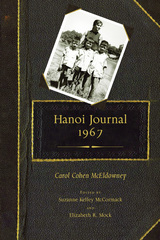 Hanoi Journal, 1967
Carol McEldowney
University of Massachusetts Press, 2007 In the fall of 1967, Carol McEldowney, a twenty-four-year-old community organizer living in Cleveland, embarked on a remarkable journey. In a climate of growing domestic unrest and international turmoil, she traveled illegally to North Vietnam with fellow members of Students for a Democratic Society (SDS) to meet the enemy face-to-face. She was determined to understand the foe that had troubled America's leaders in Washington since the end of World War II. With an eye toward history and a recognition of the significance of her journey, McEldowney documented her experiences in the journal reproduced in this book. Through her words we bear witness to a political ideology that saw a connection between the struggles of the poor in America and the tragedy of war-torn Vietnam.
McEldowney first gained the respect of her fellow activists as a student organizer at the University of Michigan. High regard for her intelligence, skill, and hard work with SDS's Economic Recovery Action Program during the years following her graduation in 1964 earned her an invitation to attend an international conference in Czechoslovakia and an offer to continue on to North Vietnam. Though her journal displays only traces of the feminist consciousness that would mark her later political activism, she recorded her observations of North Vietnam clearly aware that she was an outsider—a woman not subject to the military draft, not married to a soldier, and without the heartache of a brother or even a close friend serving in the war.
McEldowney searched for glimpses of everyday life that would help her to better relate to women in Hanoi and the hardships they faced during wartime. As she traveled in North Vietnam, she sought a deeper understanding of the events of her time. Her journal provides readers with a unique lens through which to study those events and gain a new perspective on the Vietnam War era.
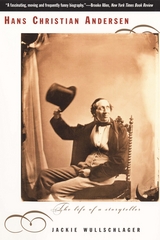 Hans Christian Andersen: The Life of a Storyteller
Jackie Wullschlager
University of Chicago Press, 2002 Beloved by generations of children and adults around the world for tales such as "The Ugly Duckling" and "The Emperor's New Clothes," Hans Christian Andersen (1805-1875) revolutionized children's literature. Although others before him had collected and retold folk stories and fairy tales, Andersen was the first to create the stories himself, instilling a previously stilted genre with new humor, wisdom, and pathos.
Drawing on letters, diaries, and other original sources (many never before translated from the Danish), Wullschlager shows in this compelling, extensively researched biography how Andersen's writings—darker and more diverse than previously recognized—reflected the complexities of his life, a far cry from the "happily ever after" of a fairy tale. As we follow in his footsteps from Golden Age Copenhagen to the princely courts of Germany and the villas of southern Italy, Andersen becomes a figure every bit as fascinating as a character from one of his stories—a gawky, self-pitying, and desperate man, but also one of the most gifted storytellers the world has ever known.
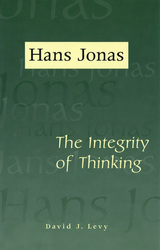 Hans Jonas: The Integrity of Thinking
David J. Levy
University of Missouri Press, 2002
Hans Jonas: The Integrity of Thinking provides the first overall account of the work of Hans Jonas. While Jonas is not the best-known thinker of the twentieth century, David J. Levy shows that he is one of the most important. Levy covers the philosopher’s life and his contributions to the history of religion, philosophical biology, philosophical anthropology, ethics, and theology. Jonas’s work is situated in relationship to that of his first intellectual mentor, Martin Heidegger, as well as that of such related thinkers among his contemporaries as Eric Voegelin.
Setting Jonas’s work in the historical and philosophical context of his life and times, Levy summarizes Jonas’s original achievements in fields as apparently diverse as the history of ancient Gnosticism, the philosophical significance of biology, the problems of ethics in a technological age, and the mysteries of theology, while demonstrating the notable unity of theme and purpose that guided his various fields of inquiry.
Jonas’s work will become increasingly significant in the years ahead as we face the problems produced by current developments in technology such as biological engineering. Such issues were of particular interest for him, and he was unique among his philosophical contemporaries in devoting attention to them. His eloquent writings on these themes bring wisdom and common sense anchored in Jonas’s own historical and biographical experience of the fragility of human life and the common good. Having begun his academic life in Germany between the world wars, he later served in the British army throughout the struggle against Hitler and lost his mother at Auschwitz.
Unlike the scattered works, anthologies, and essays that are currently available, Hans Jonas: The Integrity of Thinking provides a much-needed single, coherent overview of the various fields to which Jonas’s attention was drawn, bringing out the unified, systematic quality of Jonas’s philosophical approach.
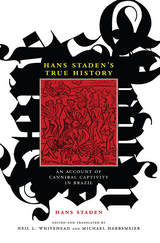 Hans Staden's True History: An Account of Cannibal Captivity in Brazil
Hans Staden
Duke University Press, 2008 In 1550 the German adventurer Hans Staden was serving as a gunner in a Portuguese fort on the Brazilian coast. While out hunting, he was captured by the Tupinambá, an indigenous people who had a reputation for engaging in ritual cannibalism and who, as allies of the French, were hostile to the Portuguese. Staden’s True History, first published in Germany in 1557, tells the story of his nine months among the Tupi Indians. It is a dramatic first-person account of his capture, captivity, and eventual escape. Staden’s narrative is a foundational text in the history and European “discovery” of Brazil, the earliest European account of the Tupi Indians, and a touchstone in the debates on cannibalism. Yet the last English-language edition of Staden’s True History was published in 1929. This new critical edition features a new translation from the sixteenth-century German along with annotations and an extensive introduction. It restores to the text the fifty-six woodcut illustrations of Staden’s adventures and final escape that appeared in the original 1557 edition. In the introduction, Neil L. Whitehead discusses the circumstances surrounding the production of Staden’s narrative and its ethnological significance, paying particular attention to contemporary debates about cannibalism. Whitehead illuminates the value of Staden’s True History as an eyewitness account of Tupi society on the eve before its collapse, of ritual war and sacrifice among Native peoples, and of colonial rivalries in the region of Rio de Janeiro. He chronicles the history of the various editions of Staden’s narrative and their reception from 1557 until the present. Staden’s work continues to engage a wide range of readers, not least within Brazil, where it has recently been the subject of two films and a graphic novel.
 Hans Urs von Balthasar and the Critical Appropriation of Russian Religious Thought
Jennifer Newsome Martin
University of Notre Dame Press, 2015 In Hans Urs von Balthasar and the Critical Appropriation of Russian Religious Thought, Jennifer Newsome Martin offers the first systematic treatment and evaluation of the Swiss Catholic theologian’s complex relation to modern speculative Russian religious philosophy. Her constructive analysis proceeds through Balthasar’s critical reception of Vladimir Soloviev, Nicholai Berdyaev, and Sergei Bulgakov with respect to theological aesthetics, myth, eschatology, and Trinitarian discourse and examines how Balthasar adjudicates both the possibilities and the limits of theological appropriation, especially considering the degree to which these Russian thinkers have been influenced by German Idealism and Romanticism.
Martin argues that Balthasar’s creative reception and modulation of the thought of these Russian philosophers is indicative of a broad speculative tendency in his work that deserves further attention. In this respect, Martin consciously challenges the prevailing view of Balthasar as a fundamentally conservative or nostalgic thinker. In her discussion of the relation between tradition and theological speculation, Martin also draws upon the understudied relation between Balthasar and F. W. J. Schelling, especially as Schelling's form of Idealism was passed down through the Russian thinkers. In doing so, she persuasively recasts Balthasar as an ecumenical, creatively anti-nostalgic theologian hospitable to the richness of contributions from extra-magisterial and non-Catholic sources.
“With her Hans Urs von Balthasar and the Critical Appropriation of Russian Religious Thought, Jennifer Newsome Martin has produced an accomplished, literate, and original contribution that is much needed in Balthasar scholarship. To my knowledge, this is the only text on Balthasar and three important Russian Orthodox thinkers—Soloviev, Berdyaev, and Bulgakov—who engaged ancient Christianity with modern philosophical currents. Additionally, Martin brings to light aspects of Balthasar’s theological method that go beyond Balthasar’s own importance to broader issues in theology.” —Anthony C. Sciglitano, Seton Hall University
"This sophisticated introduction to Hans Urs von Balthasar's work shows readers who might be puzzled by some of his seemingly strange claims on infinite distance in the Trinity or the Urkenosis where these claims come from and why they get incorporated into his theology. Jennifer Newsome Martin situates Balthasar's work so that some of the more superficial criticisms are revealed as superficial. She shows the origins of some of the revisionist theories in theology proper and why Balthasar opposed rather than affirmed them." —D. Stephen Long, Cary M. Maguire University Professor in Ethics at Southern Methodist University
"In this book, Jennifer Newsome Martin explores a dimension of Balthasar’s work that has received little attention thus far, namely, his engagement with Schelling and the great Russian theologians of the modern era. In doing so, she casts a new light, not only on the content of Balthasar’s theology, but perhaps even more so on his 'theological style,' and offers a compelling response to the Swiss thinker’s critics, who accuse him of speculating too freely about the mysteries of the faith from a 'God’s-eye' perspective." —D. C. Schindler, Pontifical John Paul II Institute
 Hans Urs Von Balthasars Theological Aest
Dickens
University of Notre Dame Press, 2003 Although Hans Urs von Balthasar is one of the most important twentieth-century theologians, little attention has been paid to his views and uses of the Bible. W.T. Dickens critically assesses Balthasar's interpretation of scripture in his seven-volume The Glory of the Lord: A Theological Aesthetics. Dickens demonstrates the extent to which Balthasar's approach to scripture, while remaining conversant with historical criticism, abides by certain pre-modern interpretive conventions that helped to nourish the once widespread capacity of Christians to understand themselves and the world in terms of the images, stories, and conceptual patterns of the Bible. To the extent that the sensus fidelium was traditionally supported by such readings of the Bible, a contemporary version of this approach that retains the correctives provided by modernity's hermeneutics of suspicion may help to counteract its current disintegration.
In the course of analysis, Dickens summarizes the principal hermeneutical implications of the analogies Balthasar developed between God's glory and earthly beauty and gauges the consistency with which Balthasar followed them in his exegesis. Dickens describes Balthasar's view of the proper roles and limitations of historical criticism and analyzes his actual uses of it when exegeting the Bible. In addition, Dickens evaluates Balthasar's reading of the Old Testament when defending a trinitarian view of the Bible's unity and identifies the principal ways in which the Bible functions authoritatively in the Theological Aesthetics.
Innovative in both subject and approach, Dickens's work will be welcomed by theologians and biblical scholars.
W.T. DICKENS is visiting assistant professor at Cornell University.
Reviews
"This book fills a major gap in studies of Balthasar and also contributes significantly to the retrieval of premodern biblical interpretation. It strengthens Balthasar's innovative efforts to recover aspects of classical scriptural reading without losing the lessons of modern scholarship, and it does this in ways consistent with his hermeneutical principles. The scope and rigor of the argument will appeal to biblical scholars and to theologians, but its ultimate effects may be widespread. I know of no book more likely to persuade both Protestants and Catholics that they have much to learn from premoderns about how to nourish in our day the biblical literacy and imagination which has at times infused Christian communities in the past but is now almost everywhere in disastrously short supply." --George Lindbeck, Yale University
"[Dickens] treats, at one and the same time, a crucially important aspect of Balthasar's theology that has essentially gone unexplored, and an important topic in contemporary theology. The text is integrated, well written, extraordinarily comprehensive in its treatment of issues, subtle in its exegesis of Balthasar, and intellectually sophisticated." --Cyril O'Regan, University of Notre Dame
Hansberry's Drama: COMMITMENT AMID COMPLEXITY
Steven R. Carter
University of Illinois Press, 1991 "Carter's thoughtful and lucid examination makes us recognize the importance not only of 'A Raisin in the Sun,' but also of Lorraine Hansberry as a playwright with a significant body of work, a seemingly limitless vision and the artistry to match." -- New York Times Book Review
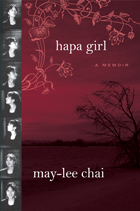 Hapa Girl: A Memoir
May-lee Chai
Temple University Press, 2008 In the mid-1960s, Winberg Chai, a young academic and the son of Chinese immigrants, married an Irish-American artist. In Hapa Girl ("hapa" is Hawaiian for "mixed") their daughter tells the story of this loving family as they moved from Southern California to New York to a South Dakota farm by the 1980s. In their new Midwestern home, the family finds itself the object of unwelcome attention, which swiftly escalates to violence. The Chais are suddenly socially isolated and barely able to cope with the tension that arises from daily incidents of racial animosity, including random acts of cruelty. May-lee Chai's memoir ends in China, where she arrives just in time to witness a riot and demonstrations. Here she realizes that the rural Americans' "fears of change, of economic uncertainty, of racial anxiety, of the unknowable future compared to the known past were the same as China's. And I realized finally that it had not been my fault."
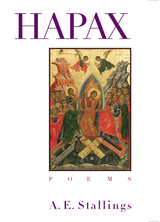 Hapax: Poems
A.E. Stallings
Northwestern University Press, 2006 Recipient of the 2008 Poet’s Prize
Recipient of the 2008 Benjamin H. Danks Award
Hapax is ancient Greek for "once, once only, once and for all," and "onceness" pervades this second book of poems by American expatriate poet A. E. Stallings. Opening with the jolt of "Aftershocks," this book explores what does and does not survive its "gone moment"-childhood ("The Dollhouse"), ancient artifacts ("Implements from the Grave of the Poet"), a marriage's lost moments of happiness ("Lovejoy Street"). The poems also often compare the ancient world with the modern Greece where Stallings has lived for several years. Her musical lyrics cover a range of subjects from love and family to characters and themes derived from classical Greek sources ("Actaeon" and "Sisyphus").
Employing sonnets, couplets, blank verse, haiku, Sapphics, even a sequence of limericks, Stallings displays a seemingly effortless mastery of form. She makes these diverse forms seem new and relevant as modes for expressing intelligent thought as well as charged emotions and a sense of humor. The unique sensibility and linguistic freshness of her work has already marked her as an important, young poet coming into her own.
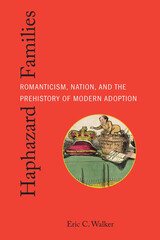 Haphazard Families: Romanticism, Nation, and the Prehistory of Modern Adoption
Eric C. Walker
Ohio State University Press, 2024 There are no provisions for adoption in English common law, and adoption wasn't legally formalized in England and Wales until 1926. But a century earlier, untimely adoptions navigated the new exceptionalism of childhood in Romanticism. In Haphazard Families, Eric C. Walker explores the history of the adopted child in Romantic-era England. Taking up the stories of both fictional and historical adoptees, he demonstrates how these children, diminished to nonpersons, shouldered the burden of social constructs of nation, family, gender, and class. Walker further demonstrates how Rousseau’s infamous failure to follow his own ideals of parenthood shaped British reactions in famous texts such as Frankenstein and Emma. Incorporating perspectives from Romantic scholarship and critical adoption studies and examining the stories of adopted children associated with Queen Caroline, Anna Letitia Barbauld, Jane Austen, the Wordsworth siblings, Mary Shelley, Charles and Mary Lamb, Letitia Landon, and others, Haphazard Families considers how Romantic constructions of childhood supply foundational structures of modern adoptee subjectivity.
 Happening Pedagogy: Allan Kaprow's Experiments in Instruction
Emily Ruth Capper
University of Chicago Press How Allan Kaprow’s happenings fused modernist pedagogy with an emerging college culture.
In Happening Pedagogy, art historian Emily Ruth Capper argues that Allan Kaprow’s famed invention of the happening brought together experimental traditions of modernist pedagogy with emerging forms of American undergraduate student culture—from hazing rituals to campus protests. Capper traces Kaprow’s trajectory from 1948 to 1968, following him through the classrooms of three of his professors who were prominent figures in postwar American art—painter Hans Hofmann, art historian Meyer Schapiro, and composer John Cage—and across institutions including Rutgers, Stony Brook, Cornell, CalArts, and UC San Diego. Although Kaprow’s teachers were educated in the distinct disciplines of studio art, art history, and music, all three designed their classrooms to cultivate student creativity and critical reflection through forms of social exchange.
Capper shows that Kaprow transformed these modernist classrooms into new pedagogical environments that worked within the novel context of the suburban state university. Drawing on archival sources, she describes how Kaprow engaged the culture and creative work of middle-class college students, whose rituals he took seriously as an avant-garde vernacular. In this way, Kaprow’s happenings represent a critical extension of modernism as a social practice of sensory attunement, experimentation, and philosophical critique. Through Kaprow’s work, modernist pedagogy became an artistic medium in itself, and his participation-based creative practices helped define the broad resurgence of the American neo-avant-garde after 1960.
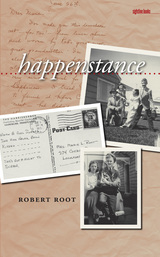 Happenstance
Robert Root
University of Iowa Press, 2013 Reflecting on how a student’s parents met because of a fly ball to center field in a summer softball game, author Robert Root wondered how the lives of that student’s parents and of the student himself would have changed had the batter bunted or struck out. Haunted by this pure example of happenstance, he began to ponder his own existence, dependent in part on geology (the Niagara Escarpment) and history (the Erie Canal). He wondered how happenstance had influenced the course of his parents’ lives, in particular their marriages (they married and divorced each other twice), and consequently the shaping of his identity. Happenstance investigates the effects of that phenomenon and choice on one man’s life.
Root explores this theme in interwoven strands of narrative, interpretation, and reflection. One strand, “The Hundred Days,” follows his attempt to write one hundred journal entries, each about a different day in his life, to recover memories of specific moments or collections of moments. In the strand headed “Album,” he examines and interprets old family photographs in light of the way he reads them in the present, as someone now privy to a family secret that directed his and his siblings’ lives without their knowledge. Interspersed among these brief interpretations and narratives are reflections on happenstance and choice, a sequence contemplating their effect on his life and perhaps on all our lives. Through juxtaposition and accumulation, the book’s incremental unraveling of meaning imitates the process of unexpected epiphanies and gradual self-discovery in anyone’s life.
By revisiting individual days, giving voice to photographs that mutely preserve family moments, and reflecting on the way happenstance and choice determine the directions lives take, Robert Root generates a meditation on identity anchored in an album in words and images of a mid-twentieth-century life.
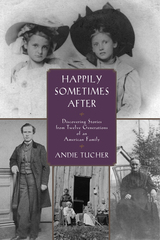 Happily Sometimes After: Discovering Stories from Twelve Generations of an American Family
Andie Tucher
University of Massachusetts Press, 2014 For more than four hundred years, members of the author's family have been telling stories about their American lives. They have told of impassioned elopements and heart-breaking kidnaps, of hairbreadth escapes and shocking murders, of bigamists, changelings, patriots, Indians, fires, floods, and how the great-grandmother of Chief Justice John Marshall married the pirate Blackbeard by mistake.
In this beautifully written work, Andie Tucher considers family stories as another way to look at history, neither from the top down nor the bottom up but from the inside out. She explores not just what happened—everywhere from Jamestown to Boonesborough, from the bloody field at Chickamauga to the metropolis of the Gilded Age—but also what the storytellers thought or wished or hoped or feared happened. She offers insights into what they valued, what they lost, how they judged their own lives and found meaning in them. The narrative touches on sorrow, recompense, love, pain, and the persistent tension between hope and disappointment in a nation that by making the pursuit of happiness thinkable also made unhappiness regrettable.
Based on extensive research in archives, local history societies, and family-history sources as well as conversations and correspondence, Happily Sometimes After offers an intimate and unusual perspective on how ordinary people used stories to imagine the world they wished for, and what those stories reveal about their relationships with the world they actually had.
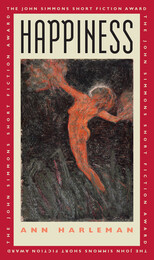 Happiness
Ann Harleman
University of Iowa Press, 1994 In Ann Harleman's remarkable debut collection, men and women of extraordinary passions look for and sometimes find the hidden heart of ordinary life. Testing themselves and each other, they search for ways to connect. "Understanding," says the troubled voyeur-narrator of "Imaginary Colors," "is the booby prize"; these characters go for experience. Reckless explorers of inner space, they try the limits of their lives. A gravely ill woman seeks forgiveness from her grown-up daughters for an adulterous past which she does not really regret. A boy watches anxiously—and enviously—while his brother flaunts an interracial love affair in front of their dangerous father. In strike-torn Warsaw during the rise of Solidarity, an American professor and his Polish housekeeper reach toward each other from their respective cages of loneliness. A girl's determined pursuit of her first sexual experience brings her more, and less, than she bargained for. Harleman combines a clear eye with a generous heart, revealing her characters-misguided, selfish, loving, brave—through a compassionate, often humorous probing of their inner and outer worlds. In "It Was Humdrum" a system analyst hires a detective to find the mother who left him as an infant, while his young wife leaves him daily for afternoon trysts with her Puerto Rican lover. A woman assaulted by a teenage gang escapes physically unharmed but forever changed. The past overtakes a woman who has married for love, not of her husband, but of his small daughter. A greeting card poet pursued by stereotyped images of happiness flees from the woman he loves and the brother he never knew he had. The supple language of these twelve stories—wise, funny, delighting in the sensuous—makes us feel the beauty and terror of a fully lived life. Harleman's characters, whether they succeed or fail, show us the way to a deeper exploration of our own lives.
Happiness and Contemplation
Josef Pieper
St. Augustine's Press, 1998 “The ultimate of human happiness is to be found in contemplation.” In offering this proposition of Thomas Aquinas to our thought, Josef Pieper uses traditional wisdom in order to throw light on present-day reality and present-day psychological problems. What, in fact, does one pursue in pursuing happiness? What, in the consensus of the wisdom of the early Greeks, of Plato and Aristotle, of the New Testament, of Augustine and Aquinas, is that condition of perfect bliss toward which all life and effort tend by nature? In this profound and illuminating inquiry, Pieper considers the nature of contemplation, and the meaning and goal of life.
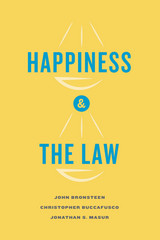 Happiness and the Law
John Bronsteen, Christopher Buccafusco, and Jonathan S. Masur
University of Chicago Press, 2014 Happiness and the law. At first glance, these two concepts seem to have little to do with each other. To some, they may even seem diametrically opposed. Yet one of the things the law strives for is to improve people’s quality of life. To do this, it must first predict what will make people happy. Yet happiness research shows that, time and time again, people err in predicting what will make them happy, overestimating the import of money and mistaking the circumstances to which they can and cannot adapt.
Drawing on new research in psychology, neuroscience, and economics, the authors of Happiness and the Law assess how the law affects people’s quality of life—and how it can do so in a better way. Taking readers through some of the common questions about and objections to the use of happiness research in law and policy, they consider two areas in depth: criminal punishment and civil lawsuits. More broadly, the book proposes a comprehensive approach to assessing human welfare—well-being analysis—that is a valuable alternative to the strictly economically based cost-benefit analyses currently dominating how we evaluate public policy. The study of happiness is the next step in the evolution from traditional economic analysis of the law to a behavioral approach. Happiness and the Law will serve as the definitive, yet accessible, guide to understanding this new paradigm.
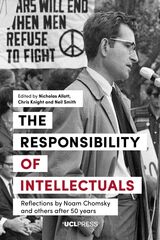 Happiness and Utility: Essays Presented to Frederick Rosen
Edited by Georgios Varouxakis and Mark Philp
University College London, 2019 Happiness and Utility brings together experts on utilitarianism to explore the concept of happiness within the utilitarian tradition, situating it alongside earlier eighteenth-century thinkers and working through some of its developments at the end of the nineteenth and beginning of the twentieth centuries. Drawing on a range of philosophical and historical approaches to the study of the central idea of utilitarianism, the chapters provide a rich set of insights into a founding component of ethics and modern political and economic thought, as well as political and economic practice. In doing so, the chapters examine the multiple dimensions of utilitarianism and the contested interpretations of this standard for judgment in morality and public policy.
The chapters are written in celebration of the career of Professor Fredrick Rosen. They follow his work by concentrating on Bentham and the two Mills, and by the subtleties and sophistication of their understanding of one of the most alluring but elusive ideas of modern times. The volume will be of interest not only to admirers of Rosen but to academics and postgraduate students in disciplines such as philosophy, political theory, the history of political thought, legal theory and legal history.
Happiness and Wisdom: Augustine's Early Theology of Education
Ryan N. S. Topping
Catholic University of America Press, 2012 Happiness and Wisdom contributes to ongoing debates about the nature of Augustine's early development, and argues that Augustine's vision of the soul's ascent through the liberal arts is an attractive and basically coherent view of learning, which, while not wholly novel, surpasses both classical and earlier patristic renderings of the aims of education.
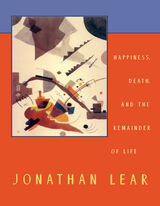 Happiness, Death, and the Remainder of Life
Jonathan Lear
Harvard University Press, 2002 Separated by millennia, Aristotle and Sigmund Freud gave us disparate but compelling pictures of the human condition. But if, with Jonathan Lear, we scrutinize these thinkers’ attempts to explain human behavior in terms of a higher principle—whether happiness or death—the pictures fall apart.Aristotle attempted to ground ethical life in human striving for happiness, yet he didn’t understand what happiness is any better than we do. Happiness became an enigmatic, always unattainable, means of seducing humankind into living an ethical life. Freud fared no better when he tried to ground human striving, aggression, and destructiveness in the death drive, like Aristotle attributing purpose where none exists. Neither overarching principle can guide or govern “the remainder of life,” in which our inherently disruptive unconscious moves in breaks and swerves to affect who and how we are. Lear exposes this tendency to self-disruption for what it is: an opening, an opportunity for new possibilities. His insights have profound consequences not only for analysis but for our understanding of civilization and its discontent.
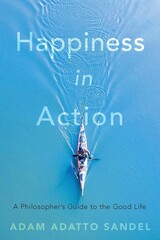 Happiness in Action: A Philosopher’s Guide to the Good Life
Adam Adatto Sandel
Harvard University Press, 2022 “Here, at last, is a book about what happiness really means, and why it often eludes us in our stressed-out, always-on lives.”
—Arianna Huffington, Founder and CEO, Thrive
A young philosopher and Guinness World Record holder in pull-ups argues that the key to happiness is not goal-driven striving but forging a life that integrates self-possession, friendship, and engagement with nature.
What is the meaning of the good life? In this strikingly original book, Adam Adatto Sandel draws on ancient and modern thinkers and on two seemingly disparate pursuits of his own, philosophy and fitness, to offer a surprising answer to this age-old human question.
Sandel argues that finding fulfillment is not about attaining happiness, conceived as a state of mind, or even about accomplishing one’s greatest goals. Instead, true happiness comes from immersing oneself in activity that is intrinsically rewarding. The source of meaning, he suggests, derives from the integrity or “wholeness” of self that we forge throughout the journey of life.
At the heart of Sandel’s account of life as a journey are three virtues that get displaced and distorted by our goal-oriented striving: self-possession, friendship, and engagement with nature. Sandel offers illuminating and counterintuitive accounts of these virtues, revealing how they are essential to a happiness that lasts.
To illustrate the struggle of living up to these virtues, Sandel looks to literature, film, and television, and also to his own commitments and adventures. A focal point of his personal narrative is a passion that, at first glance, is as narrow a goal-oriented pursuit as one can imagine: training to set the Guinness World Record for Most Pull-Ups in One Minute. Drawing on his own experiences, Sandel makes philosophy accessible for readers who, in their own infinitely various ways, struggle with the tension between goal-oriented striving and the embrace of life as a journey.
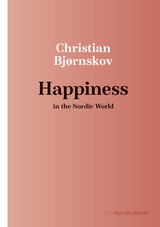 Happiness in the Nordic World
Christian Bjørnskov
University of Wisconsin Press, 2021 Denmark is consistently among the countries with the happiest and most satisfied populations, and it regularly places at the very top with the rest of the Nordic countries in international surveys. Why do the Nordic countries as a whole constitute the happiest region in the world?
Many experts attribute the region's high levels of happiness to factors such as greater relative national wealth and well-functioning institutions. Yet, a number of other countries in Europe and parts of Asia share those qualities and rank far lower in life satisfaction. Others credit the region's high levels of happiness to its welfare state model, but these have changed considerably over time—and Iceland does not share this feature.
Instead, economist Christian Bjørnskov argues that the most important factor to come out of international comparisons is the importance of social trust—the ability to trust other people one does not know personally. The populations in three of the five countries are also characterized by a very strong sense of personal freedom. These two key factors contribute to a fuller and richer life. Bjørnskov ends by discussing to what extent these factors can be exported to other parts of the world.
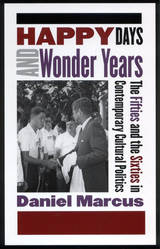 Happy Days and Wonder Years: The Fifties and the Sixties in Contemporary Cultural Politics
Marcus, Daniel
Rutgers University Press, 2004 In the twenty-first century, why do we keep talking about the Fifties and the Sixties? The stark contrast between these decades, their concurrence with the childhood and youth of the baby boomers, and the emergence of television and rock and roll help to explain their symbolic power. In Happy Days and Wonder Years, Daniel Marcus reveals how interpretations of these decades have figured in the cultural politics of the United States since 1970.
From Ronald Reagan's image as a Fifties Cold Warrior to Bill Clinton's fandom for Elvis Presley and John F. Kennedy, politicians have invoked the Fifties and the Sixties to connect to their public. Marcus shows how films, television, music, and memoirs have responded to the political nostalgia of today, and why our entertainment remains immersed in reruns, revivals, and references to earlier times. This book offers a new understanding of how politics and popular culture have influenced our notions of the past, and how events from long ago continue to shape our understanding of the present day.
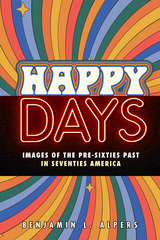 Happy Days: Images of the Pre-Sixties Past in Seventies America
Benjamin L. Alpers
Rutgers University Press, 2024 After the techno-futurism of the 1950s and the utopian 1960s vision of a “great society,” the 1970s saw Americans turning to the past as a source for both nostalgic escapism and serious reflection on the nation’s history. While some popular works like Grease presented the relatively recent past as a more innocent time, far away from the nation’s post-Vietnam, post-Watergate malaise, others like Roots used America’s bicentennial as an occasion for deep soul-searching.
Happy Days investigates how 1970s popular culture was obsessed with America’s past but often offered radically different interpretations of the same historical events and icons. Even the figure of the greaser, once an icon of juvenile delinquency, was made family-friendly by Henry Winkler’s Fonzie at the same time that he was being appropriated in more threatening ways by punk and gay subcultures. The cultural historian Benjamin Alpers discovers similar levels of ambivalence toward the past in 1970s neo-noir films, representations of America’s founding, and neo-slave narratives by Alex Haley and Octavia Butler. By exploring how Americans used the 1970s to construct divergent representations of their shared history, he identifies it as a pivotal moment in the nation’s ideological fracturing.
Happy Hour
Alan Shapiro
University of Chicago Press, 1987 "Within his deliberately narrowed range Mr. Shapiro has cultivated a new generosity of detail and insight. This is especially important in the longer poems here, narratives of considerable power. They may seem more like versified short stories than poems, but their skill and force are moving."—J. D. McClatchy, New York Times Book Review
"Happy Hour is one of the best collections I have recently read. Mr. Shapiro writes with apparently equal ease in free verse and more nearly traditional forms, and he brings his formidable technical skills to bear upon matters of great urgency: our need to love and be loved, and the often perverse ways in which we maintain our connections to those closest to us."—Henry Taylor, Washington Times
"This is a haunting, mature collection that should attract a larger audience for Shapiro's fine poems."—Thomas Swiss, Chicago Tribune
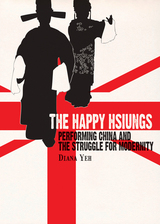 The Happy Hsiungs: Performing China and the Struggle for Modernity
Diana Yeh
Hong Kong University Press, 2014 “Try Something Different. Something Really Chinese” The Happy Hsiungs recovers the lost histories of Shih-I and Dymia Hsiung, two once highly visible, but now largely forgotten Chinese writers in Britain, who sought to represent China and Chineseness to the rest of the world. Shih-I shot to worldwide fame with his play Lady Precious Stream in the 1930s and became known as the first Chinese director to work in the West End and on Broadway. Dymia was the first Chinese woman in Britain to publish a fictional autobiography in English. Diana Yeh traces the Hsiungs’ lives from their childhood in Qing dynasty China and youth amid the radical May Fourth era to Britain and the USA, where they rubbed shoulders with George Bernard Shaw, James M. Barrie, H. G. Wells, Pearl Buck, Lin Yutang, Anna May Wong and Paul Robeson. In recounting the Hsiungs’ rise to fame, Yeh focuses on the challenges they faced in becoming accepted as modern subjects, as knowledge of China and the Chinese was persistently framed by colonial legacies and Orientalist discourses, which often determined how their works were shaped and understood. She also shows how Shih-I and Dymia, in negotiating acceptance, “performed” not only specific forms of Chineseness but identities that conformed to modern ideals of class, gender and sexuality, defined by the heteronormative nuclear family. Though fêted as ‘The Happy Hsiungs’, their lives ultimately highlight a bitter struggle in attempts to become modern.
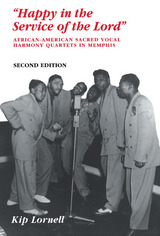 Happy In the Service Of the Lord: African-American Sacred Vocal Harmony
Kip Lornell
University of Tennessee Press, 1995 "Happy in the Service of the Lord" provides an in-depth look at the development of the African-American gospel quartet. Focusing argely on Memphis - long famous for its blues, jazz, and soul music - Kip Lornell reveals the special contributions that quartet members have made to the cultural and musical identity of the city.
The author traces the evolution of such groups as the I. C. Glee Club Quartet, the Spirit of Memphis, the Sunset Travelers, and the Southern Wonders from the early 1920s to the late 1980s. Drawing on extensive interviews and field research, Lornell describes a unique world of radio personalities, quartet unions, fans, promoters, and singing teachers. What emerges is a fascinating picture of the complex, multilayered relationships within these communities, enhanced by a probing analysis of the gospel quartets' place within the larger contexts of popular culture and African-American history.
"Happy in the Service of the Lord" was first published in 1988. For this second edition, Lornell has added a new chapter on the role of gospel composers and the importance of spirituality in quartet performances. The first chapter, a survey of the history of quartet singing across the United States from Reconstruction to the present, has been completely rewritten to reflect the most recent scholarship. Lornell has also updated and expanded the book's audiography and bibliography.
Happy Like This
Ashley Wurzbacher
University of Iowa Press, 2019 The characters in Happy Like This are smart girls and professional women—social scientists, linguists, speech therapists, plant physiologists, dancers—who search for happiness in roles and relationships that are often unscripted or unconventional. In the midst of their ambivalence about marriage, monogamy, and motherhood and their struggles to accept and love their bodies, they look to other women for solidarity, stability, and validation. Sometimes they find it; sometimes they don’t. Spanning a wide range of distinct perspectives, voices, styles, and settings, the ten shimmering stories in Happy Like This offer deeply felt, often humorous meditations on the complexity of choice and the ambiguity of happiness.
 Happy Tails Across New Jersey: Things to See and Do with Your Dog in the Garden State
Goodspeed, Diane
Rutgers University Press, 2006 Are you among the thousands of dog owners in the Garden State who would like to spend more time with your four-footed companion? Now you can!
In this first-of-its-kind guidebook, Diane Goodspeed brings the encouraging news to pet lovers that their furry friends are welcome to many of New Jersey's beaches, trails, parks, swim holes, and even stores. Whether you are hiking in the Kittatinny Mountains, going for a run on the beach, or playing fetch along the Delaware River, you and your dog can explore New Jersey together. From transportation and equipment to basic obedience and fitness conditioning, this guide contains all the information you need to get your dog out the door for exciting adventures in every season.
Organized by county for easy reference, you will find information about county, state, and national parks that will welcome your canine companion. The book also functions as a convenient handbook for shops, covering everything from high-end pet stores and large chains to independently run dog bakeries. Goodspeed identifies training facilities, the most reputable and well-established dog trainers, as well as shelters, rescue centers, and every dog park across the state. Whether you are a long-time dog owner, or new to the canine scene, you will be surprised by how many dog-friendly events, including walk-a-thons, fairs, canine sporting competitions, town festivals, dog parades, and fundraising events for rescue groups occur annually throughout New Jersey.
Finally, with your leash in one hand and this indispensable and all-inclusive guide in the other, you can enjoy the exciting recreational opportunities available in the Garden State with your favorite four-legged friend.
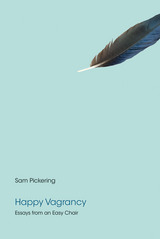 Happy Vagrancy: Essays from an Easy Chair
Sam Pickering
University of Tennessee Press, 2015 The essays in Sam Pickering’s new collection sing with thoughtful observations on life, death, love, and literature. Whether attending a reunion at Sewanee, cruising the Caribbean, wandering the streets of Storrs, Connecticut, or rambling through Nova Scotia, Pickering is able to work a quotation, insight, or reminiscence into almost every page. His collection sparks with copious observations from other writers and books that he’s devoured through the years. One of the many joys in Happy Vagrancy is finding a new author or essay hiding in the deep foliage of Pickering’s prose. He delivers his insights with humor, wit, and a keen eye for the ordinary wonders that surround us.
Many of the essays touch on death and the dying, and nothing escapes description and fascination whether profound or seemingly less so: the death of a dear friend or two fledgling cardinals blown from a nest in the back yard and now covered with “periwinkle at the corner of the yard.” During a walk down a country lane, the names of flowers, birds, and bugs fill the page. Even in a meadow buzzing with life, there are reminders of our mortality and brief light too soon gone—and they remind us to read, think, and live with gusto and love.
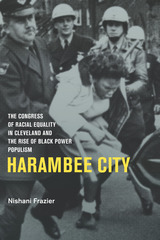 Harambee City: The Congress of Racial Equality in Cleveland and the Rise of Black Power Populism
Nishani Frazier
University of Arkansas Press, 2017 BLACK POWER! It was a phrase that consumed the American imagination in the 1960s and 70s and inspired a new agenda for black freedom. Dynamic and transformational, the black power movement embodied more than media stereotypes of gun-toting, dashiki-wearing black radicals; the movement opened new paths to equality through political and economic empowerment. In Harambee City, Nishani Frazier chronicles the rise and fall of black power within the Congress of Racial Equality (CORE) by exploring the powerful influence of the Cleveland CORE chapter. Frazier explores the ways that black Clevelanders began to espouse black power ideals including black institution building, self-help, and self-defense. These ideals challenged CORE’s philosophy of interracial brotherhood and nonviolent direct action, spawning ideological ambiguities in the Cleveland chapter. Later, as Cleveland CORE members rose to national prominence in the organization, they advocated an open embrace of black power and encouraged national CORE to develop a notion of black community uplift that emphasized economic populism over political engagement. Not surprisingly, these new empowerment strategies found acceptance in Cleveland. By providing an understanding of the tensions between black power and the mainstream civil rights movement as they manifested themselves as both local and national forces, Harambee City sheds new light on how CORE became one of the most dynamic civil rights organizations in the black power era.
 Harbin and Manchuria: Place, Space, and Identity, Volume 99
Thomas Lahusen, ed.
Duke University Press This special issue of South Atlantic Quarterly focuses on the layered cultures of the northeast China city of Harbin and the region formerly known as Manchuria. During the first half of the twentieth-century, Harbin—a by-product of the construction of the Chinese Eastern Railway at the turn of the century—and the rest of Manchuria became the site of conflicting and competing Russian, Western, Japanese, and Chinese colonialisms. Home to émigrés from the famine-ridden Shandong province, impoverished Japanese settlers, Jews fleeing the pogroms of Russia, White Russians escaping the civil war, and Koreans caught between Japanese expansionism and Chinese nationalism, Harbin was a colonial place like no other, one that eventually comprised more than fifty nationalities speaking forty-five languages. Crossing the boundaries of their specializations, contributors respond to the complexity of this history while considering the concrete concept of place and its relation to the more abstract idea of space. A rare encounter between scholars of East Asian and Slavic studies, this well-illustrated collections includes discussions of history, politics, economics, anthropology, sociology, cinema, and cultural studies. An eclectic and comprehensive exploration of memory and its reconstruction in the Harbin-Manchuria diaspora, Harbin and Manchuria provides the first full treatment of this colonial encounter. Contributors. Olga Bakich, Sabine Breuillard, James Carter, Elena Chernolutskaya, Prasenjit Duara, Thomas Lahusen, Hyun-Ok Park, Andre Schmid, Mariko Asano Tamanoi, David Wolff
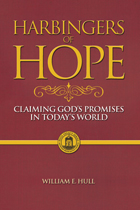 Harbingers of Hope
William E. Hull
University of Alabama Press, 2007 In a world filled with disappointments and frustrations, here is a book that points to sources of enduring hope. Centuries ago, harbingers were trailblazers who went ahead of an army or royal party to find secure places where the group could camp and to announce their impending arrival. Dr. Hull uses scripture as a guide to the future that God is preparing for those who want the divine promises to be fulfilled in their lives.
The journey to which this book beckons has five stages. At the outset we meet a restless God of surprises who is never satisfied with things as they are. This encounter discloses the necessity of making transforming changes in our lives if we are to keep pace with the divine dynamic. Our reorientation toward an attitude of expectancy is not an end itself but provides the impetus for a lifelong process of growth toward maturity. Because this quest takes place in a world resistant to changes that challenge the status quo, there will be opposition, setbacks, even defeats that God endures with us as the cost of building a new tomorrow. In that struggle our task is not to flee or to fight but to bear a winsome witness in the confidence that God’s purposes will finally prevail over the human predicament.
Just as the crowing cock is a harbinger of dawn and the robin on the lawn is a harbinger of spring, these 27 messages become harbingers of a steadfast hope, as they help us to anticipate the new future that God is seeking to create for his weary world and as they invite us to actualize that future in the here and now.
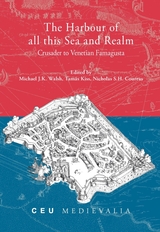 The Harbour of all this Sea and Realm: Crusader to Venetian Famagusta
Michael J.K. Walsh
Central European University Press, 2014 The Harbour of All This Sea and Realm offers an overview of the Lusignan, Genoese and Venetian history of the main port city of Cyprus, a Mediterranean crossroads. The essays contribute to the understanding of Famagusta's social and administrative structure, as well as the influences on its architectural, artisan, and art historical heritage from the thirteenth to sixteenth centuries. We read of crusader bishops from central France, metalworkers from Asia Minor, mercenaries from Genoa, refugees from Acre, and traders from Venice. The themes of the city's diasporas and cultural hybridity permeate and unify the essays in this collaborative effort. Some of the studies use archival sources to reconstruct the early stages of appearances of various buildings. Such research is of vital importance, given the threat to Famagusta's medieval and early modern heritage by its use as a military base since 1974.
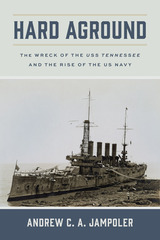 Hard Aground: The Wreck of the USS Tennessee and the Rise of the US Navy
Andrew C. A. Jampoler
University of Alabama Press, 2023 Three intertwined stories that reveal the challenges faced by the US Navy in its evolution between the Civil War and the First World War Hard Aground brings together three intertwined stories documenting the US Navy’s strategic and matériel evolution from the end of Civil War through the First World War. These incidents had lasting consequences for how the navy would modernize itself throughout the rest of the twentieth century. The first story focuses on the reconstruction of the US Navy following the swift and near-total dismantling of the Union Navy infrastructure after the Civil War. This reconstruction began with barely enough time for the navy’s campaigns in the Spanish-American War, and for its role in the First World War. Jampoler argues that the federal government discovered that the fleet requested by the navy, and paid for by Congress, was the wrong fleet. Focus was on battleships and cruisers rather than destroyers and other small combat vessels needed to hunt submarines and serve as convoy escorts. The second story relates the short, tragic life of the USS Tennessee (later renamed Memphis), one of the steel-hulled ships of the new Armored Cruiser Squadron that was a centerpiece of the navy’s modernization effort. The USS Tennessee was ordered on two unusual missions in the early months of the First World War, long before the United States formally entered the war. These little-known missions and the ship's shocking destruction in a storm surge in the Caribbean serve as the centerpiece of the story. Threaded through the narrative are biographical sketches of the principal players in the drama that unfolded following the ship’s demise, including two of Tennessee’s commanding officers: Vice Admiral Sims, who commanded the US Navy squadrons deployed to Europe in support of the Royal Navy; Rear Admiral William Caperton, who commanded the Caribbean squadron before the Memphis (formerly the Tennessee) was lost; Charles Pond, squadron commander during the wreck; and the American ambassador to the Ottoman court, President Wilson’s enthusiastic supporter, Henry Morgenthau.
Jampoler rounds out this fascinating account with the story of how the USS Tennessee’s destruction prompted fierce deliberations about the US Navy’s operations and chains of command for the remainder of the First World War and the high-level political wrangling inside the Department of the Navy immediately after the war, as civilian appointees and senior officers wrestled to reshape the department in their image.
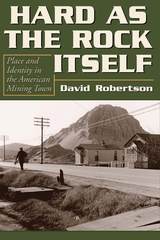 Hard as the Rock Itself: Place and Identity in the American Mining Town
David Robertson
University Press of Colorado, 2006 The first intensive analysis of sense of place in American mining towns, Hard as the Rock Itself: Place and Identity in the American Mining Town provides rare insight into the struggles and rewards of life in these communities. David Robertson contends that these communities - often characterized in scholarly and literary works as derelict, as sources of debasing moral influence, and as scenes of environmental decay - have a strong and enduring sense of place and have even embraced some of the signs of so-called dereliction.
Robertson documents the history of Toluca, Illinois; Cokedale, Colorado; and Picher, Oklahoma, from the mineral discovery phase through mine closure, telling for the first time how these century-old mining towns have survived and how sense of place has played a vital role.
Acknowledging the hardships that mining's social, environmental, and economic legacies have created for current residents, Robertson argues that the industry's influences also have contributed to the creation of strong, cohesive communities in which residents have always identified with the severe landscape and challenging, but rewarding way of life.
Robertson contends that the tough, unpretentious appearance of mining landscapes mirrors qualities that residents value in themselves, confirming that a strong sense of place in mining regions, as elsewhere, is not necessarily wedded to an attractive aesthetic or even to a thriving economy.
Mining historians, geographers, and other students of place in the American landscape will find fascinating material in Hard As the Rock Itself.
Hard at Work: Life in Singapore
Gerard Sasges and Ng Shi Wen
National University of Singapore Press, 2019 For most of us, work is a basic daily fact of life. But that simple fact encompasses an incredibly wide range of experiences. Hard at Work takes readers into the day-to-day work experiences of more than fifty working people in Singapore who hold jobs that run from the ordinary to the unusual: from ice cream vendors, baristas, police officers and funeral directors to academic ghostwriters, temple flower sellers, and Thai disco girl agents.
Through first-person narratives based on detailed interviews, vividly augmented with color photographs, Hard at Work reminds us of the everyday labor that continually goes on around us, and that every job can reveal something interesting if we just look closely enough. It shows us too the ways inequalities of status and income are felt and internalized in this highly globalized society.
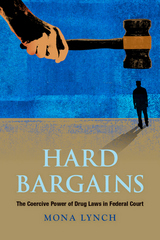 Hard Bargains: The Coercive Power of Drug Laws in Federal Court
Mona Lynch
Russell Sage Foundation, 2016 The convergence of tough-on-crime politics, stiffer sentencing laws, and jurisdictional expansion in the 1970s and 1980s increased the powers of federal prosecutors in unprecedented ways. In Hard Bargains, social psychologist Mona Lynch investigates the increased power of these prosecutors in our age of mass incarceration. Lynch documents how prosecutors use punitive federal drug laws to coerce guilty pleas and obtain long prison sentences for defendants—particularly those who are African American— and exposes deep injustices in the federal courts.
As a result of the War on Drugs, the number of drug cases prosecuted each year in federal courts has increased fivefold since 1980. Lynch goes behind the scenes in three federal court districts and finds that federal prosecutors have considerable discretion in adjudicating these cases. Federal drug laws are wielded differently in each district, but with such force to overwhelm defendants’ ability to assert their rights. For drug defendants with prior convictions, the stakes are even higher since prosecutors can file charges that incur lengthy prison sentences—including life in prison without parole. Through extensive field research, Lynch finds that prosecutors frequently use the threat of extremely severe sentences to compel defendants to plead guilty rather than go to trial and risk much harsher punishment. Lynch also shows that the highly discretionary ways in which federal prosecutors work with law enforcement have led to significant racial disparities in federal courts. For instance, most federal charges for crack cocaine offenses are brought against African Americans even though whites are more likely to use crack. In addition, Latinos are increasingly entering the federal system as a result of aggressive immigration crackdowns that also target illicit drugs.
Hard Bargains provides an incisive and revealing look at how legal reforms over the last five decades have shifted excessive authority to federal prosecutors, resulting in the erosion of defendants’ rights and extreme sentences for those convicted. Lynch proposes a broad overhaul of the federal criminal justice system to restore the balance of power and retreat from the punitive indulgences of the War on Drugs.
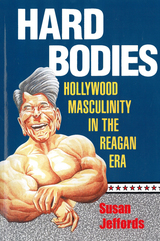 Hard Bodies: Hollywood Masculinity in the Reagan Era
Susan Jeffords
Rutgers University Press, 1993 Hard Bodies is about Ronald Reagan, Robert Bly, "America," Rambo, Dirty Harry, national identity, and individual manhood. By linking blockbuster Hollywood films of the 1980s to Ronald Reagan and his image, Susan Jeffords explores the links between masculinity and U.S. identity and how their images changed during that decade. Her book powerfully defines a distinctly ideological period in the renegotiation of masculinity in the post-Vietnam era. As Jeffords perceptively notes, Reagan was most effective at constructing and promoting his own image. His election in 1980 and his landslide re-election in 1984 offered politicians and the film industry some insight into "what audiences want to see." Audiences--and constituencies--were looking for characters who stood up for individualism, liberty, anti-governmentalism, militarism, and who embodied a kind of mythic heroism. The administration in Washington and Hollywood filmmakers sensed and tried to fill that need. Jeffords describes how movies meshed inextricably with Reagan's life as he cast himself as a hero and influenced the country to believe the same script. Invoking Clint Eastwood in his speeches and treating scenes from movies as if they were real, Reagan played on his image in order to link popular and national narratives. Hollywood returned the compliment. Through her illuminating and detailed analyses of both the Reagan presidency and many blockbuster movies, Jeffords provides a scenario within which the successes of the New Right and the Reagan presidency can begin to be understood: she both encourages an understanding of how this complicity functioned and provides a framework within which to respond to the New Right's methods and arguments. Rambo, Lethal Weapon, Die Hard, Robocop, Back to the Future, Star Wars, the Indiana Jones series, Mississippi Burning, Rain Man, Batman, and Unforgiven are among the films she discusses. In her closing chapter, she suggests the direction that masculinity is taking in the 1990s.
Hard Bread
Peg Boyers
University of Chicago Press, 2002 The poems in Peg Boyers's Hard Bread are "spoken" in the imagined voice of the Italian writer, Natalia Ginzburg (1916-91). While much of the book is based on Ginzburg's life—her upbringing in Turin; her brief marriage to the resistance activist, Leone Ginzburg; her experience of Fascism and war; her work as novelist, playwright, editor, and newspaper columnist; her embattled friendships with writers like Primo Levi, Pier Paolo Pasolini, Ernest Hemingway, and Cesare Pavese—much is invented. The result is a book by turns melancholy and acerbic, mournful and satiric, contemplative and combative.
 Hard Choices: An "Iowa Review" Reader
DAVID HAMILTON
University of Iowa Press, 1996 For twenty-five years, the Iowa Review has published many of America's finest writers, often helping them become established in their careers. From Tillie Olsen and William Stafford in the first volume to James Galvin and Pattiann Rogers in the twenty-fourth, the names and voices are recognizable and respected or soon will be. As editor David Hamilton notes in his introduction to this eclectic anniversary volume of nearly eighty poems and stories, "To a considerable extent we have defined ourselves by them; thus Hard Choices, a generous sampling of the best and most interesting writing from the Iowa Review's first years, defines the past and the future of American literature." The Iowa Review is one of a small group of dedicated literary magazines that have defined American literary culture in the past quarter century. The adventurous, stimulating pieces in Hard Choices will encourage readers to look forward to the next quarter century.
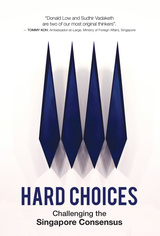 Hard Choices: Challenging the Singapore Consensus
Edited by Sudhir Thomas Vadaketh and Donald Low
National University of Singapore Press, 2014 Singapore is changing. The consensus that the PAP government has constructed and maintained over five decades is fraying. The assumptions that underpin Singaporean exceptionalism are no longer accepted as easily and readily as before. Among these are the ideas that the country is uniquely vulnerable, that this vulnerability limits its policy and political options, that good governance demands a degree of political consensus that ordinary democratic arrangements cannot produce, and that the country’s success requires a competitive meritocracy accompanied by relatively little income or wealth redistribution.
But the policy and political conundrums that Singapore faces today are complex and defy easy answers. Confronted with a political landscape that is likely to become more contested, how should the government respond? What reforms should it pursue? This collection of essays suggests that a far-reaching and radical rethinking of the country's policies and institutions is necessary, even if it weakens the very consensus that enabled Singapore to succeed in its first fifty years.
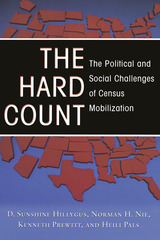 The Hard Count: The Political and Social Challenges of Census Mobilization
D. Sunshine Hillygus
Russell Sage Foundation, 2006 American democracy relies on an accurate census to fairly allocate political representation and billions of dollars in federal funds. Declining participation in previous censuses and a general waning of civic engagement in society raised the possibility that the 2000 count would miss many Americans—disproportionately ethnic and racial minorities—depriving them of their share of influence in American society and yielding an unfair distribution of federal resources. Faced with this possibility, the Census Bureau launched a massive mobilization campaign to encourage Americans to complete and return their census forms. In The Hard Count, former Census Bureau director Kenneth Prewitt, D. Sunshine Hillygus, Norman H. Nie, and Heili Pals present a rigorous evaluation of this campaign. Can a busy, mobile, disengaged public be motivatived to participate in this civic activity? Using a rich set of data and drawing on theories of civic mobilization, political persuasion, and media effects, the authors assess the factors that influenced participation in the 2000 census.. The Hard Count profiles a watershed moment in the history of the American census. As the mobilization campaign was underway, political opposition to the census sprang up, citing privacy issues and seeking to limit the kind of data the census could collect. Hillygus, Nie, Prewitt, and Pals analyze the competing effects of the mobilization campaign and the privacy controversy on public attitudes and cooperation with the census. Using an internet based survey, the authors tracked a representative sample of Americans over time to gauge changes in census attitudes, privacy concerns, and their eventual decision whether or not to return their census form. The study uniquely captures the public's exposure to census advertising, community mobilization, and news stories, and was designed so people could view video clips and photos of actual campaign advertisements on their sets in their homes. The authors find that the Census Bureau campaign did in fact raise awareness of the census and census participation. The mobilization campaign was especially effective at increasing participation among groups historically undercounted by the census. They also find that census participation would have been higher if not for the privacy controversy, which discouraged many people from cooperating with the census and led others to omit information from their census form. The findings of The Hard Count have important policy implications for future census counts and offer theoretical insights regarding the influence of mobilization campaigns on civic participation. The goal of full and equal cooperation with the decennial census and other government surveys is an important national priority. The Hard Count shows that a mobilization campaign can dramatically increase voluntary participation in the decennial headcount and identifies emerging social and political challenges that may threaten future census counts and contribute to the growing fragility of our national statistical system.. A Volume in the Russell Sage Foundation Census Series
Hard Driving: The 1908 Auto Race From New York to Paris
Dermot Cole
University of Alaska Press, 2020 In the winter of 1908, six cars left Times Square bound for Paris. They were embarking on a remarkable motor race across the world that would capture everyone’s imagination. In this book, Dermot Cole weaves a thrilling account of the improbable journey west from New York to Paris, the varied characters, and the nascent automobile industry. Drawing from the drivers’ journals and extensive newspaper reports, Cole details the many hardships, triangulations, and physical extremes encountered along the route as the drivers attempted to race from coast to coast, cross the Bering Strait to Russia, traverse Siberia, and onward.
Hard Driving delves beyond the riveting headlines to explore the race’s implications for global politics and diplomacy and how the automobile became a viable mode of transportation.
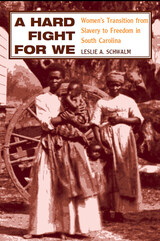 A Hard Fight for We: Women's Transition from Slavery to Freedom in South Carolina
Leslie A. Schwalm
University of Illinois Press, 1997 African-American women fought for their freedom with courage and vigor during and after the Civil War. Leslie Schwalm explores the vital roles of enslaved and formerly enslaved women on the rice plantations of lowcountry South Carolina, both in antebellum plantation life and in the wartime collapse of slavery. From there, she chronicles their efforts as freedwomen to recover from the impact of the war while redefining their lives and labor. Freedwomen asserted their own ideas of what freedom meant and insisted on important changes in the work they performed both for white employers and in their own homes. As Schwalm shows, these women rejected the most unpleasant or demeaning tasks, guarded the prerogatives they gained under the South's slave economy, and defended their hard-won freedoms against unwanted intervention by Northern whites and the efforts of former owners to restore slavery's social and economic relations during Reconstruction. A bold challenge to entrenched notions, A Hard Fight for We places African American women at the center of the South's transition from a slave society.
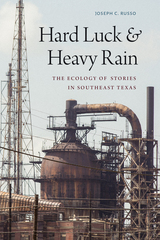 Hard Luck and Heavy Rain: The Ecology of Stories in Southeast Texas
Joseph C. Russo
Duke University Press, 2023 In Hard Luck and Heavy Rain Joseph C. Russo takes readers into the everyday lives of the rural residents of Southeast Texas. He encounters the region as a kind of world enveloped in on itself, existing under a pall of poverty, illness, and oil refinery smoke. His informants’ stories cover a wide swath of experiences, from histories of LGBTQ+ life and the local petrochemical industries to religiosity among health food store employees and the suffering of cancer patients living in the Refinery Belt. Russo frames their hard-luck stories as forms of verbal art and poetic narrative that render the region a mythopoetic landscape that epitomizes the impasse of American late capitalism. He shows that in this severe world, questions of politics and history are not cut and dry, and its denizens are not simply backward victims of circumstances. Russo demonstrates that by challenging classist stereotypes of rural Americans as passive, ignorant, and uneducated, his interlocutors offer significant insight into the contemporary United States.
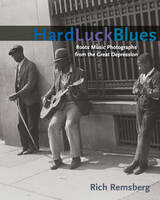 Hard Luck Blues: Roots Music Photographs from the Great Depression
Rich Remsberg
University of Illinois Press, 2010 Showcasing American music and music making during the Great Depression, Hard Luck Blues presents more than two hundred photographs created by the New Deal's Farm Security Administration photography program. With an appreciation for the amateur and the local, FSA photographers depicted a range of musicians sharing the regular music of everyday life, from informal songs in migrant work camps, farmers' homes, barn dances, and on street corners to organized performances at church revivals, dance halls, and community festivals. Captured across the nation from the northeast to the southwest, the images document the last generation of musicians who learned to play without the influence of recorded sound, as well as some of the pioneers of Chicago's R & B scene and the first years of amplified instruments. The best visual representation of American roots music performance during the Depression era, Hard Luck Blues features photographs by Jack Delano, Dorothea Lange, Russell Lee, Arthur Rothstein, Ben Shahn, Marion Post Wolcott, and others. Photographer and image researcher Rich Remsberg breathes life into the images by providing contextual details about the persons and events captured, in some cases drawing on interviews with the photographers' subjects. Also included are a foreword by author Nicholas Dawidoff and an afterword by music historian Henry Sapoznik. Published in association with the Library of Congress.
Hard Places: Reading the Landscape of America's Historic Mining Districts
Richard V. Francaviglia
University of Iowa Press, 1997 Working with the premise that there are much meaning and value in the "repelling beauty" of mining landscapes, Richard Francaviglia identifies the visual clues that indicate an area has been mined and tells us how to read them, showing the interconnections among all of America's major mining districts. With a style as bold as the landscape he reads and with photographs to match, he interprets the major forces that have shaped the architecture, design, and topography of mining areas. Covering many different types of mining and mining locations, he concludes that mining landscapes have come to symbolize the turmoil between what our society elects to view as two opposing forces: culture and nature.
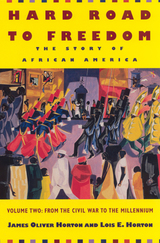 Hard Road to Freedom: The Story of African America, The Civil War to the Millennium
Horton, Lois E
Rutgers University Press, 2002
Hard Road to Freedom tells the story of African America from its African roots to the political and social upheavals at the end of the twentieth century. It interweaves the experiences of individual black Americans with an analysis of the nation's pursuit of its fundamental principles, of freedom, and civil rights. The book begins with African cultures and the African people who withstood the horrors of the slave trade and slavery to help shape a new multiracial society in North America. The American Revolution brought freedom to some, but most remained in the grip of slavery. African Americans and their allies continually raised the cry for freedom, building determined black communities and dedicated antislavery organizations that contributed to the abolition of slavery. The precarious freedom after the Civil War brought new opportunities, but also new dangers and the limitations of Jim Crow. The wars and the depression in the early twentieth century found black Americans forging new alliances, creating a cultural renaissance, and fighting for democracy and freedom abroad. At home, they struggled against the denials of freedom and citizenship that still barred their full participation and that tarnished America's standing in the eyes of the international community. Throughout the social and political turmoil of the 1960s and 1970s and the political and cultural backlash that followed, African Americans continued to raise their voices in often eloquent and always insistent appeals that the nation live up to the promise of its principles. This book tells of America's unsteady advance along the road to freedom, the triumphs and hope, as well as the failures and despair, from the vantage point of the African Americans who resolutely played a critical role in that story.
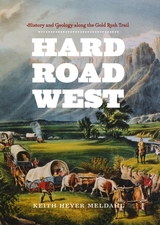 Hard Road West: History and Geology along the Gold Rush Trail
Keith Heyer Meldahl
University of Chicago Press, 2007 In 1848 news of the discovery of gold in California triggered an enormous wave of emigration toward the Pacific. Lured by the promise of riches, thousands of settlers left behind the forests, rain, and fertile soil of the eastern United States in favor of the rough-hewn lands of the American West. The dramatic terrain they struggled to cross is so familiar to us now that it is hard to imagine how frightening—even godforsaken—its sheer rock faces and barren deserts seemed to our forebears.
Hard Road West brings their perspective vividly to life, weaving together the epic overland journey of the covered wagon trains and the compelling story of the landscape they encountered. Taking readers along the 2,000-mile California Trail, Keith Meldahl uses the diaries and letters of the settlers themselves—as well as the countless hours he has spent following the trail—to reveal how the geology and geography of the West directly affected our nation’s westward expansion. He guides us through a corrugated landscape of sawtooth mountains, following the meager streams that served as lifelines through an arid land, all the way to California itself, where colliding tectonic plates created breathtaking scenery and planted the gold that lured travelers west in the first place.
“Alternates seamlessly between vivid accounts of the 19th-century journey and lucid explanations of the geological events that shaped the landscape traveled. . . . The reader comes away with both an appreciation for the arduous cross-continental wagon journey and an understanding of the events that created such a vast and difficult landscape.”—Library Journal “[Meldahl] draws on his professional knowledge to explain the geology of the West, showing how centuries of geological activity had a direct effect on the routes taken by the travelers. . . . Meldahl provides a novel account of the largest overland migration since the Crusades.”—Science News
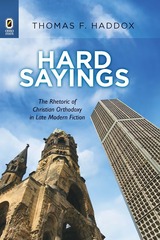 Hard Sayings: The Rhetoric of Christian Orthodoxy in Late Modern Fiction
Thomas F. Haddox
Ohio State University Press, 2013 Hard Sayings: The Rhetoric of Christian Orthodoxy in Late Modern Fiction by Thomas F. Haddox examines the work of six avowedly Christian writers of fiction in the period from World War II to the present. This period is often characterized in western societies by such catchphrases as “postmodernism” and “secularization,” with the frequent implication that orthodox belief in the dogmas of Christianity has become untenable among educated readers. How, then, do we account for the continued existence of writers of self-consciously literary fiction who attempt to persuade readers of the truth, desirability, and utility of the dogmas of Christianity? Is it possible to take these writers’ efforts on their own terms and to understand and evaluate the rhetorical strategies that this kind of persuasion might entail?
Informed by the school of rhetorical narratology that includes such critics as Wayne Booth, James Phelan, and Richard Walsh, Hard Sayings offers fresh new readings of fictive works by Flannery O’Connor, Muriel Spark, John Updike, Walker Percy, Mary Gordon, and Marilynne Robinson. In its argument that orthodox Christianity, as represented in fiction, still has the power to persuade and to trouble, it contributes to ongoing debates about the nature and scope of modernity, postmodernity, and secularization.
 Hard Science Fiction
George E Slusser
Southern Illinois University Press, 1986
These 16 essays from the fifth annual J.Lloyd Eaton Conference at the University of California, Riverside, seek to come to grips with science fiction’s core, the core at which “science must ultimately seem to outweigh the fiction.”
Never before has hard SF been the topic of such extended discussion by such qualified people. The dialogue constitutes new (and potentially shocking to a traditional literary critic) modes of literary criticism, modes that take into account the impact of scientific speculation and method on our culture and on the ways our culture invents stories and myths.
Essayists include writer/scientist professors Robert L. Forward, David Brin, and Gregory Benford. Noted critics and writers with scientific backgrounds or interests include: James Gunn, Frank McConnell, George Guffey, John Huntington, Paul Carter, Patricia Warrick, Paul Alkon, Robert M. Philmus, David Clayton, Eric S. Rabkin, Herbert Sussman, Michael Collings, and George E. Slusser.
 Hard Science, Hard Choices: Facts, Ethics, and Policies Guiding Brain Science Today
Sandra Ackerman
Dana Press, 2006 Advances in neuroscience research are rapidly bringing new and complex issues to the forefront of medical and social ethics, and scholars from diverse fields have been coming together to debate the issues at stake. Acclaimed science writer Sandra Ackerman witnessed one such gathering, and here she skillfully synthesizes those proceedings into a concise presentation of the challenges that neuroscience and neuroethics currently face.
Top scholars and scientists in neuroscience and ethics convened at the Library of Congress in Washington, D.C., in May 2005. They included Michael Gazzaniga, director of the Center for Cognitive Neuroscience at Dartmouth College; Marcus Raichle of the Washington University School of Medicine in St. Louis; Harvard University provost Steven Hyman; Judy Illes, cofounder of the Stanford Brain Research Center; University of Virginia bioethicist Jonathan Moreno; Stacey Tovino of the Health Law and Policy Institute at the University of Houston Law Center; and Stanford law professor Hank Greely.
Ackerman weaves the invigorating arguments and discussions among these and other prominent scholars into a seamless and dynamic narrative. She reveals the wide array of issues that have emerged from recent research, including brain imaging, free will and personal responsibility, disease diagnosis and prediction, brain enhancement, and the potential social, political, and legal ramifications of new discoveries. Translating these complex arguments into an engrossing account of neuroethics, she offers a rare view of science—and ethics—in the making.
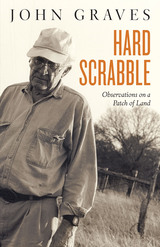 Hard Scrabble: Observations on a Patch of Land
By John Graves
Introduction by Rick Bass
University of Texas Press, 2016 “A kind of homemade book—imperfect like a handmade thing, a prize. It’s a galloping, spontaneous book, on occasion within whooping distance of that greatest and sweetest of country books, Ivan Turgenev’s A Sportsman’s Notebook.” —Edward Hoagland, New York Times Book Review “His subjects are trees and brush, hired help, fences, soil, armadillos and other wildlife, flood and drought, local history, sheep and goats . . . and they come to us reshaped and reenlivened by his agreeably individual (and sometimes cranky) notions.” —New Yorker “If Goodbye to a River was in some sense Graves’s Odyssey, this book is his [version of Hesiod’s] Works and Days. It is partly a book about work, partly a book about nature, but mostly a book about belonging. In the end John Graves has learned to belong to his patch of land so thoroughly that at moments he can sense in himself a unity with medieval peasants and Sumerian farmers, working with their fields by the Tigris.” —Larry McMurtry, Washington Post Book World “Hard Scrabble is hard pastoral of the kind we have learned to recognize in Wordsworth, Frost, Hemingway, and Faulkner. It celebrates life in accommodation with a piece of the ‘given’ creation, a recalcitrant four hundred or so acres of Texas cedar brake, old field, and creek bottom, which will require of any genuine resident all the character he can muster.” —Southwest Review
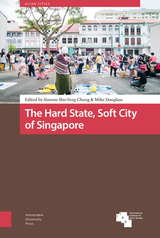 The Hard State, Soft City of Singapore
Simone Shu-Yeng Chung
Amsterdam University Press, 2020 With Singapore serving as the subject of exploration, The Hard State, Soft City of Singapore explores the purview of imaginative representations of the city. Alongside the physical structures and associated practices that make up our lived environment, and conceptualized space engineered into material form by bureaucrats, experts and commercial interests, a perceptual layer of space is conjured out of people’s everyday life experiences. While such imaginative projections may not be as tangible as its functional designations, they are nonetheless equally vital and palpable. The richness of its inhabitants’ memories, aspirations and meaningful interpretations challenges the reduction of Singapore as a Generic City. Taking the imaginative field as the point of departure, the forms and modes of intellectual and creative articulations of Singapore’s urban condition probe the resilience of cities and the people who reside in them, through the images they convey or evoke as a means for collective expressions of human agency in placemaking.
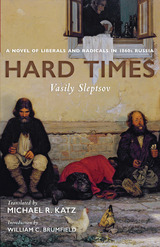 Hard Times: A Novel of Liberals and Radicals in 1860s Russia
Vasily Sleptsov
University of Pittsburgh Press, 2016 Vasily Sleptsov was a Russian social activist and writer during the politically charged 1860s, known as the “era of great reforms,” and marked by Alexander II’s emancipation of the serfs and the relaxation lifting of censorship. Popular in his day, Sleptsov’s contemporaries Leo Tolstoy and Anton Chekhov praised his writing:, with Chekhov once remarkeding, “Sleptsov taught me, better than most, to understand the Russian intelligent, and my own self as well.”
The novella Hard Times is considered Sleptsov’s most important work. It focused popular attention on the radical and liberal movements through its fictional setting, where the characters contend with constantly evolving political and social dilemmas. Hard Times was immediately recognized as a vibrant and compelling depiction of prerevolutionary Russian intellectual society, full of lively debates about the possibilities of liberal reform or radical revolution that questioned the viability of a political system facing massive social problems.
This is the first English-language version of Hard Times, expertly and fluidly translated by Michael Katz. Highly readable, it provides important historical insights on the political and social climate of a volatile and transformative period in Russia history.
Hard Times: For These Times
Heidi Stillman
Northwestern University Press, 2003 The highly acclaimed adaptation of Dickens's classic novel—a 2001 Jeff Award Winner!
The citizens of Charles Dickens's Coketown have moved readers for over a century. Now, Heidi Stillman's stunning adaptation brings these iconic characters to life on the stage, revealing the universality of their hopes and suffering in their times and in ours. The world premiere of Hard Times was presented by the Lookingglass Theatre Company of Chicago in 2001. The Play won five Joseph Jefferson Awards, for best production of a play, best director, best adaptation, best choreography, and best lighting design.
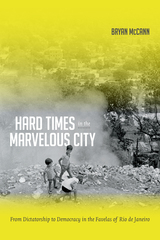 Hard Times in the Marvelous City: From Dictatorship to Democracy in the Favelas of Rio de Janeiro
Bryan McCann
Duke University Press, 2013 Beginning in the late 1970s, activists from the favelas of Rio de Janeiro challenged the conditions—such as limited access to security, sanitation, public education, and formal employment—that separated favela residents from Rio's other citizens. The activists built a movement that helped to push the nation toward redemocratization. They joined with political allies in an effort to institute an ambitious slate of municipal reforms. Those measures ultimately fell short of aspirations, and soon the reformers were struggling to hold together a fraying coalition. Rio was bankrupted by natural disasters and hyperinflation and ravaged by drug wars. Well-armed drug traffickers had become the new lords of the favelas, protecting their turf through violence and patronage. By the early 1990s, the promise of the favela residents' mobilization of the late 1970s and early 1980s seemed out of reach. Yet the aspirations that fueled that mobilization have endured, and its legacy continues to shape favela politics in Rio de Janeiro.
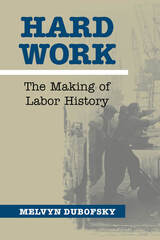 Hard Work: The Making of Labor History
Melvyn Dubofsky
University of Illinois Press, 2000 A career-spanning collection of writings by the legendary labor historian One of American labor history's most prominent scholars, Melvyn Dubofsky curated an accessible style and historical reach that have long marked his work as required reading for students and scholars. This collection juxtaposes Dubofsky's early writings with scholarship from the 1990s. Selections include work on western working-class radicalism, U.S. labor history in transnational and comparative settings, and the impact of technological change on American worker’s movements. Throughout, the writings provide an invaluable eyewitness perspective on the academic and political climate of the 1960s and 1970s while tracing the development of labor history as a discipline. An exploration of important themes in labor history, Hard Work combines essential scholarship with the story of how past and present interact in the work of historians.
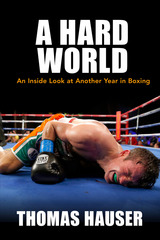 A Hard World: An Inside Look at Another Year in Boxing
Thomas Hauser
University of Arkansas Press, 2016 In 2015, Booklist observed, “the arrival of Hauser’s annual boxing review is akin to Christmas morning for fight fans. Nobody knows a sport any better than Hauser knows boxing.” Each year, readers, writers, and critics alike look forward to Thomas Hauser’s annual collection of articles about the contemporary boxing scene. He’s one of the last real champions of boxing and one of the very best who has ever written about the sport. A Hard World continues this tradition of excellence with dressing-room reports from big fights like Canelo Alvarez vs. Miguel Cotto, a behind-the-scenes look at Floyd Mayweather vs. Manny Pacquiao, and a foray into the world of mixed martial arts for a compelling portrait of Ronda Rousey. Most importantly, this new collection contains Hauser’s groundbreaking two-part investigative report on the relationship between the United States Anti-Doping Agency and boxing, a report that shook the industry and raised fundamental questions regarding the integrity of USADA’s drug-testing procedures as applied to boxing.
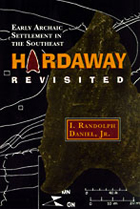 Hardaway Revisited: Early Archaic Settlement in the Southeast
I. Randolph Daniel
University of Alabama Press, 1998 A provocative reanalysis of one of the most famous Early Archaic archaeological sites in the southeastern United States Since the early 1970s, southeastern archaeologists have focused their attention on identifying the function of prehistoric sites and settlement practices during the Early Archaic period (ca. 9,000-10,500 B.P.). The Hardaway site in the North Carolina Piedmont, one of the most importantarchaeological sites in eastern North America, has not yet figured notably in this research. Daniel's reanalysis of the Hardaway artifacts provides a broad range of evidence—including stone tool morphology, intrasite distributions of artifacts, and regional distributions of stoneraw material types—that suggests that Hardaway played a unique role in Early Archaic settlement. The Hardaway site functioned as a base camp where hunting and gathering groups lived for extended periods. From this camp they exploited nearby stone outcrops in the Uwharrie Mountains to replenish expended toolkits. Based on the results of this study, Daniel's new model proposes that settlement was conditioned less by the availability of food resources than by the limited distribution of high-quality knappable stone in the region. These results challenge the prevalent view of Early Archaic settlement that group movement was largely confined by the availability of food resources within major southeastern river valleys.
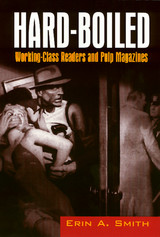 Hard-Boiled
Erin A. Smith
Temple University Press, 2000 In the 1920s a distinctively American detective fiction emerged from the pages of pulp magazines. The “hard-boiled” stories published in Black Mask, Dime Detective, Detective Fiction Weekly, and Clues featured a new kind of hero and soon challenged the popularity of the British mysteries that held readers in thrall on both sides of the Atlantic. In Hard-Boiled Erin A. Smith examines the culture that produced and supported this form of detective story through the 1940s.
Relying on pulp magazine advertising, the memoirs of writers and publishers, Depression-era studies of adult reading habits, social and labor history, Smith offers an innovative account of how these popular stories were generated and read. She shows that although the work of pulp fiction authors like Dashiell Hammett, Raymond Chandler, and Erle Stanley Gardner have become “classics” of popular culture, the hard-boiled genre was dominated by hack writers paid by the word, not self-styled artists. Pulp magazine editors and writers emphasized a gritty realism in the new genre. Unlike the highly rational and respectable British protagonists (Miss Marple and Hercule Poirot, for instance), tough-talking American private eyes relied as much on their fists as their brains as they made their way through tangled plotlines.
Casting working-class readers of pulp fiction as “poachers,” Smith argues that they understood these stories as parables about Taylorism, work, and manhood; as guides to navigating consumer culture; as sites for managing anxieties about working women. Engaged in re-creating white, male privilege for the modern, heterosocial world, pulp detective fiction shaped readers into consumers by selling them what they wanted to hear – stories about manly artisan-heroes who resisted encroaching commodity culture and the female consumers who came with it. Commenting on the genre’s staying power, Smith considers contemporary detective fiction by women, minority, and gay and lesbian writers.
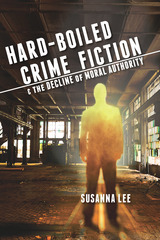 Hard-Boiled Crime Fiction and the Decline of Moral Authority
Susanna Lee
Ohio State University Press, 2016 The cynical but kind-hearted detective is the soul of the classic hard-boiled story, that chronicle of world-weary urban pessimism. In Hard-Boiled Crime Fiction and the Decline of Moral Authority, Susanna Lee argues that this fiction functions as a measure for individual responsibility in the modern world and that it demonstrates the enduring status of individual conscience across a variety of cultural crises. In this major rethinking of the hard-boiled genre, Lee suggests that, whether in Los Angeles, New York, or Paris, the hard-boiled detective is the guardian of individual moral authority and the embodiment of ideals in a corrupt environment.
Lee traces the history of the hard-boiled detective through the twentieth century and on both sides of the Atlantic (France and the United States), tying the idea of morality to the character model in nuanced, multifaceted ways. When the heroic model devolves, the very conceptual validity of individual moral authority can seem to devolve as well. Hard-Boiled Crime Fiction and the Decline of Moral Authority charts the evolution of that character model of the hard-boiled hero, the mid-century deterioration of his exemplarity, and twenty-first-century endeavors to resuscitate the accountable hero. The history of hard-boiled crime fiction tells nothing less than the story of individual autonomy and accountability in modern Western culture.
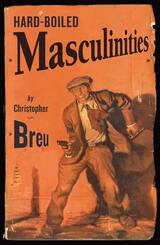 Hard-Boiled Masculinities
Christopher Breu
University of Minnesota Press, 2005 The persona of the American male in the period between the two world wars was characterized by physical strength, emotional detachment, aggressive behavior, and an amoral worldview. This ideal of a hard-boiled masculinity can be seen in the pages and, even more vividly, on the covers of magazines such as Black Mask, which shifted from Victorian-influenced depictions of men in top hats and mustaches in the early 1920s to the portrayal of much more overtly violent and muscular men.
Looking closely at this transformation, Christopher Breu offers a complex account of how and why hard-boiled masculinity emerged during an unsettled time of increased urbanization and tenuous peace and traces the changes in its cultural conception as it moved back and forth across the divide between high and low culture as well as the color line that bifurcated American society.
Examining the work of Ernest Hemingway, Dashiell Hammett, Chester Himes, and William Faulkner, as well as many lesser-known writers for the hypermasculine pulp magazines of the 1920s and 1930s, Breu illustrates how the tough male was a product of cultural fantasy, one that shored up gender and racial stereotypes as a way of lashing out at the destabilizing effects of capitalism and social transformation.
Christopher Breu is assistant professor of English at Illinois State University.
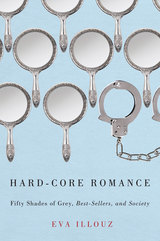 Hard-Core Romance: "Fifty Shades of Grey," Best-Sellers, and Society
Eva Illouz
University of Chicago Press, 2014 From its beginnings in Twilight fan-fiction to its record-breaking sales as an e-book and paperback, the story of the erotic romance novel Fifty Shades of Grey and its two sequels is both unusual and fascinating. Having sold over seventy million copies worldwide since 2011, E. L. James’s lurid series about a sexual ingénue and the powerful young entrepreneur who introduces her to BDSM sex has ingrained itself in our collective consciousness. But why have these particular novels—poorly written and formulaic as they are—become so popular, especially among women over thirty? In this concise, engaging book, Eva Illouz subjects the Fifty Shades cultural phenomenon to the serious scrutiny it has been begging for. After placing the trilogy in the context of best-seller publishing, she delves into its remarkable appeal, seeking to understand the intense reading pleasure it provides and how that resonates with the structure of relationships between men and women today. Fifty Shades, Illouz argues, is a gothic romance adapted to modern times in which sexuality is both a source of division between men and women and a site to orchestrate their reconciliation. As for the novels’ notorious depictions of bondage, discipline, and sadomasochism, Illouz shows that these are as much a cultural fantasy as a sexual one, serving as a guide to a happier romantic life. The Fifty Shades trilogy merges romantic fantasy with self-help guide—two of the most popular genres for female readers. Offering a provocative explanation for the success and popularity of the Fifty Shades of Grey novels, Hard-Core Romance is an insightful look at modern relationships and contemporary women’s literature.
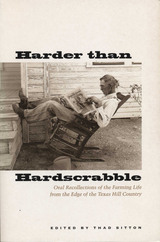 Harder than Hardscrabble: Oral Recollections of the Farming Life from the Edge of the Texas Hill Country
Edited by Thad Sitton
University of Texas Press, 2004 Winner, San Antonio Conservation Society Citation, 2005
Runner-up, Carr P. Collins Award, Best Book of Nonfiction, Texas Institute of Letters, 2005 Until the U.S. Army claimed 300-plus square miles of hardscrabble land to build Fort Hood in 1942, small communities like Antelope, Pidcoke, Stampede, and Okay scratched out a living by growing cotton and ranching goats on the less fertile edges of the Texas Hill Country. While a few farmers took jobs with construction crews at Fort Hood to remain in the area, almost the entire population—and with it, an entire segment of rural culture—disappeared into the rest of the state. In Harder than Hardscrabble, oral historian Thad Sitton collects the colorful and frequently touching stories of the pre-Fort Hood residents to give a firsthand view of Texas farming life before World War II. Accessible to the general reader and historian alike, the stories recount in vivid detail the hardships and satisfactions of daily life in the Texas countryside. They describe agricultural practices and livestock handling as well as life beyond work: traveling peddlers, visits to towns, country schools, medical practices, and fox hunting. The anecdotes capture a fast-disappearing rural society—a world very different from today's urban Texas.
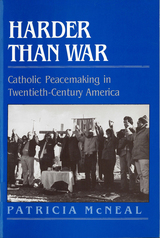 Harder than War: Catholic Peacemaking in Twentieth-Century America
McNeal, Patricia F.
Rutgers University Press, 1992 Patricia McNeal's comprehensive study of American Catholic peacemaking in the twentieth century documents the growth of pacifism and nonviolence within the American Catholic community, and assesses its impact on the church and the nation. McNeal begins with the first official Catholic peace organization in the United States, the Catholic Association for International Peace, founded in 1927. An elitist lay organization supported by the church hierarchy, the CAIP based their opposition to war on the "just war" doctrine. With the emergence of pacifism among American Catholics in 1930s, Dorothy Day, co-founder of the Catholic Peace movement, added to the Catholic theological agenda the concepts of pacifism, conscientious objection, and nuclear pacifism. Dorothy Day and the Catholic Worker movement became the midwife in the formation of other Catholic peace organizations such as PAX, the Catholic Peace Fellowship, and PAX Christi-USA during the Vietnam War. Members of these groups cooperated with the broader peace movement in the United States. Their main focus became opposition to nuclear warfare and nuclear weapons.
During the Viet Nam War, Catholic Workers burned their draft cards and turned from nonviolence to resistance by practicing civil disobedience. Daniel and Philip Berrigan escalated that resistance when they destroyed draft files, and symbolically poured blood over and hammered nuclear weapons to awaken the national conscience to the life-ending effects of nuclear warfare.
McNeal concludes that Catholic peacemakers had the greatest impact not on the government but on the institutional church. In 1971 the American hierarchy judged that the Vietnam War was not a "just war." For the first time in the United States, and possibly in history, a national hierarchy announced as unjust a war being waged by its own nation.
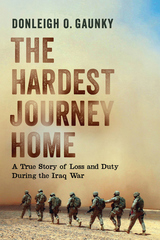 The Hardest Journey Home: A True Story of Loss and Duty during the Iraq War
Donleigh O. Gaunky
Westholme Publishing, 2017 Pulled Out of a Combat Deployment, the Author Escorted His Younger Brother's Body Home from War
“Sergeant Donleigh Gaunky’s moving memoir speaks to everyone who has lost a loved one in defense of our great nation. It serves as a reminder that freedom is not free, and it is our responsibility to continue to care for our service members, veterans, and their families. I am touched that Fisher House provided a refuge for Sergeant Gaunky during such a difficult journey.”—Ken Fisher, Chairman and CEO, Fisher House Foundation
“Fewer and fewer Americans have any close association with anyone serving in the Armed Forces. Donleigh Gaunky offers a heart-rending glimpse into his family as he, and they, grapple with the loss of Donleigh’s brother on a battlefield in Iraq. Every American should read this and, in so doing, learn what “Thank You for Your Service” really means.”
—Gen. Carter F. Ham, USA, Ret., President and CEO, Association of the United States Army
In November 2005, while analyzing live action reports at his base in Baghdad, Iraq, Donleigh O. Gaunky froze. His younger brother Alex’s unit had been hit by the enemy. Almost immediately, arrangements were made for Donleigh to meet his wounded brother in Germany, but Alex succumbed to his injuries before he arrived. Instead, Donleigh was asked to assume the role of remains escort. Most of the time a remains escort is picked at random from the appropriate branch of service or is someone with a relationship to the deceased, most often from the soldier’s own unit. Rarely—if ever in modern times—is the escort a family member. In The Hardest Journey Home: A True Story of Loss and Duty During the Iraq War, Donleigh O. Gaunky describes the events that unfolded over the course of a few days, from the front line in Iraq to the Landstuhl military hospital in Germany to their small town in Wisconsin, where he arrived with his brother’s body on Thanksgiving Day. In an effort to keep his mind off the tragedy and remain focused on his task, the author describes the protocol for escorting a body home—paperwork, appropriate attire, the proper use of the flag, when and where to salute—as well as how his divorced parents coped with the loss of one of their four sons serving in the military. Relying on commercial flights to bring Alex home, there was no military reception when they first landed in the United States and the author learned how little his brother’s sacrifice meant on a national level. But he was uplifted by his town’s response to his family’s loss when they unexpectedly lined the streets to pay their respects to one of their own. An important and moving story, The Hardest Journey Home reveals the human cost of a long, seemingly invisible war.
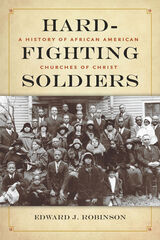 Hard-Fighting Soldiers: A History of African American Churches of Christ
Edward J. Robinson
University of Tennessee Press, 2019 In the first full-length scholarly synthesis of the African American Churches of Christ, Edward J. Robinson provides a comprehensive look at the church’s improbable development against a backdrop of African American oppression. The journey begins with a lesser known preacher, F. F. Carson, in many ways a forerunner in the struggles and triumphs awaiting the preachers and lay people in the congregations to come. Robinson then builds on scholarship treating well-known figures, including Marshall Keeble and G. P. Bowser, to present a wide-ranging history of African American Churches of Christ from their beginnings—when enslaved people embraced the nascent Stone-Campbell Christian Movement even though founder Alexander Campbell himself favored slavery. The author moves on to examine how the churches grew under the leadership of S. R. Cassius, even as Jim Crow restrictions put extreme pressure on organizations of any kind among African Americans.
Robinson’s well-researched narrative treats not only the black male leaders of the church, but also women leaders, such as Annie C. Tuggle, as well as notable activities of the church, including music, education, and global evangelism, thus painting a complete picture of African American Churches of Christ. Through scholarship and compelling storytelling, Robinson tells the two-hundred-year tale of how “black believers survived and thrived on the discarded ‘scraps’ of America, forging their own identity, fashioning their own lofty ecclesiology and ‘hard’ theology, and creating their own papers, lectureships, liturgy, and congregations.” A groundbreaking exploration by a seasoned scholar in American religion, Hard-Fighting Soldiers is sure to become the standard text for anyone researching the African American Churches of Christ.
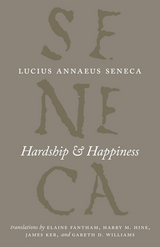 Hardship and Happiness
Lucius Annaeus Seneca
University of Chicago Press, 2014 Lucius Annaeus Seneca (4 BCE–65 CE) was a Roman Stoic philosopher, dramatist, statesman, and advisor to the emperor Nero, all during the Silver Age of Latin literature. The Complete Works of Lucius Annaeus Seneca is a fresh and compelling series of new English-language translations of his works in seven accessible volumes. Edited by Elizabeth Asmis, Shadi Bartsch, and Martha C. Nussbaum, this engaging collection helps restore Seneca—whose works have been highly praised by modern authors from Desiderius Erasmus to Ralph Waldo Emerson—to his rightful place among the classical writers most widely studied in the humanities.
Hardship and Happiness collects a range of essays intended to instruct, from consolations—works that offer comfort to someone who has suffered a personal loss—to pieces on how to achieve happiness or tranquility in the face of a difficult world. Expertly translated, the essays will be read and used by undergraduate philosophy students and experienced scholars alike.
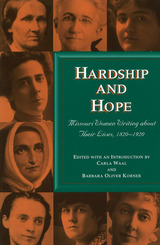 Hardship and Hope: Missouri Women Writing about Their Lives, 1820-1920
Carla Waal and Barbara Oliver Korner, eds.
University of Missouri Press, 1997 Over the years Missouri women have endured many hardships: Civil War troops in their homes, the harshness of westward travel, the loneliness of the Gold Rush, and slavery. They have also greatly influenced the state's history. Marie Watkins Oliver made the state flag; Margaret Nelson Stephens was a gifted politician; Carry A. Nation fought for prohibition; and Mary Ezit Bulkley was active in the woman suffrage movement. Hardship and Hope brings to life these and other known and unknown Missouri women through their own writings in journals, letters, diaries, and memoirs. Most of these pieces have never been published or have long been out of print. Carla Waal and Barbara Oliver Korner have skillfully crafted this anthology to represent myriad Missouri women. There are pieces representing the experiences of Jewish, Irish, and German immigrants, African Americans, well-educated women, and deeply religious women. Preceding each entry is a useful introduction that provides history and background on the woman and her work. Readers will meet women like Phoebe Wilson Couzins, who was the first woman law graduate in Missouri. She went on to work with Susan B. Anthony for the suffrage movement but died in poverty, physically handicapped and emotionally unstable. Emma J. Ray was born a slave just before the Civil War. She and her husband did missionary work in jails and on the streets of Kansas City. Other women represented are Laura Ingalls Wilder, Kate Chopin, Fannie Hurst, and Henriette Geisberg Bruns. Hardship and Hope began as a series of performances around the state of Missouri through which the book's editors demonstrated the roles women played in that state's past. Because of the enthusiastic response to their performances, Waal and Korner continued searching for documents by Missouri women and now share their discoveries in book form. Covering a little more than a century, from just before Missouri's admission to the Union in 1821 to the ratification of the Nineteenth Amendment that gave women the right to vote in 1920, the excerpts here both captivate and inform. This anthology will appeal to those interested in women's studies, Missouri and midwestern history, and oral interpretation.
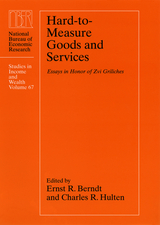 Hard-to-Measure Goods and Services: Essays in Honor of Zvi Griliches
Edited by Ernst E. Berndt and Charles R. Hulten
University of Chicago Press, 2007 The celebrated economist Zvi Griliches’s entire career can be viewed as an attempt to advance the cause of accuracy in economic measurement. His interest in the causes and consequences of technical progress led to his pathbreaking work on price hedonics, now the principal analytical technique available to account for changes in product quality.
Hard-to-Measure Goods and Services, a collection of papers from an NBER conference held in Griliches’s honor, is a tribute to his many contributions to current economic thought. Here, leading scholars of economic measurement address issues in the areas of productivity, price hedonics, capital measurement, diffusion of new technologies, and output and price measurement in “hard-to-measure” sectors of the economy. Furthering Griliches’s vital work that changed the way economists think about the U.S. National Income and Product Accounts, this volume is essential for all those interested in the labor market, economic growth, production, and real output.
Hardware Architectures for Deep Learning
Masoud Daneshtalab
The Institution of Engineering and Technology, 2020 This book presents and discusses innovative ideas in the design, modelling, implementation, and optimization of hardware platforms for neural networks.
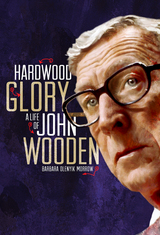 Hardwood Glory: A Life of John Wooden
Barbara Olenyik Morrow
Indiana Historical Society Press, 2014 The tenth volume in the Indiana Historical Society Press’s celebrated Youth Biography Series examines the life of a man who helped define college basketball in the twentieth century and became an icon of American sports—John Wooden. He was born in the small Indiana town of Martinsville near the start of the last century. His claim to fame came first as an accomplished athlete, helping his high school basketball team compete in three state championship games, then earning All-American honors three times in his home state as a starting guard at Purdue University. After briefly teaching high school English and coaching several sports in Dayton, Kentucky, Wooden returned to Indiana, where he launched a successful career coaching basketball at South Bend Central High School and later at Indiana State Teachers College (now Indiana State University) in Terre Haute.
In 1948, at age thirty-seven, Wooden moved west, as did many Americans in the post-World War II era. He took over the head basketball job at the University of California at Los Angeles, a school with virtually no basketball tradition. He took his family and his coaching skills with him. He also took his midwestern values. For the next six decades he remained in Southern California, creating a basketball dynasty at UCLA and solidifying his place as one of the sporting world’s greats. When he died on June 4, 2010, at the Ronald Reagan UCLA Medical Center, he was four months shy of his hundredth birthday.
Wooden’s success as a college coach was unprecedented and, in pure numbers, staggering. From 1964 to 1975, he led the UCLA Bruins men’s basketball team to ten National Collegiate Athletic Association national basketball championships, including seven in a row—a feat that may never be matched. During that string of championships, he coached the Bruins to four perfect 30–0 seasons, an NCAA men’s record that still stands. He also coached UCLA to an eighty-eight-game winning streak, yet another unrivaled men’s record. Over the course of his twenty-seven seasons at UCLA, he mentored All-Americans such as Kareem Abdul-Jabbar and Bill Walton, earned the respect of legions of players, and inspired countless would-be roundballers and coaches alike.
These achievements put Wooden in the company of legendary coaches throughout the field of sports. Even in that elite company, he fared especially well. In 2009 Sporting News magazine asked more than one hundred coaches and sports experts to name the greatest coach of all time in any sport. Not surprisingly, coaching giants such as the Green Bay Packers’s Vince Lombardi, Notre Dame’s Knute Rockne, the Boston Celtics’s Red Auerbach, and New York Yankees’s Casey Stengel ranked in the top ten; Wooden stood at number one the list.
Long before that ranking, however, awards and honors flowed Wooden’s way. In 1973 he was inducted into the Naismith Basketball Hall of Fame as coach, making him the first to be honored as both a player and a coach. (He received the honor as a player in 1960.) In 1977 college basketball’s annual player-of-the-year award was named for him. The NCAA bestowed its highest honor, the Theodore Roosevelt award, on Wooden in 1995. And in 2006 the National Collegiate Basketball Hall of Fame in Kansas City, Missouri, honored him as a member of the founding class, along with basketball inventor Doctor James Naismith.
Accolades also poured in from outside the sports world. In 2003 President George W. Bush awarded Wooden the Presidential Medal of Freedom, American’s highest civilian honor. Two years later, Indiana bestowed on him its highest honor, the Sachem, an award recognizing a lifetime of excellence and virtue. In earlier decades, entities ranging from service clubs to faith-based organizations to universities rushed to salute not only his accomplishments but also his character.
Hardy Cypripedium: Species, Hybrids and Cultivation
Werner Frosch, Phillip Cribb
Royal Botanic Gardens, Kew, 2012 With a name that references Aphrodite and colors that range from muted to majestic, it is easy to see why the Cypripedium, commonly known as the slipper orchid, is one of the most loved orchids. Now readers can learn what it takes to fully appreciate and care for this genus.
Hardy Cypripedium presents the fifty species and one hundred hybrids of the slipper orchid through more than three hundred photos. It also provides plant descriptions, ecology, distribution, and cultivation methods. Sections on history, morphology, and conservation round out the guide. Professional and amateur growers, as well as fans of orchids of all types, will find a wealth of useful information in this beautiful book.
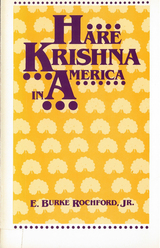 Hare Krishna In America
Rochford, E. Burke
Rutgers University Press, 1985 You have seen them dancing and chanting on street corners or soliciting donations in airports. Their shaven heads, long robes, and sense for the dramatic set them apart from others around them and generate curiosity, sometimes mistrust, wherever they appear.
Sociologist E. Burke Rochford, Jr., began his study of the Hare Krishna movement in America in the mid-1970s, only to find himself increasingly drawn into the movement even as he struggled to maintain a critical distance. Convinced to wear beads, chant, and take part in religious ceremonies, as well as to move in for occasional stays, Rochford found his new form of devotion a cause of concern for his family, friends, and colleagues. Participation in the movement's activities, however, enabled him to experience from within the forces at play between a society often intolerant of religious deviation and a religion dedicated to the continual recruitment of new followers.
Rochford uses several different sociological approaches--the life history of a single devotee, analysis of male-female recruitment patterns, surveys of members, and extensive field notes--to present he reader with a vivid portrait of the Hare Krishna movement as it has developed and changed in the first twenty years of its existence.
 Hare Krishna In America
Rochford, E. Burke
Rutgers University Press, 1985 You have seen them dancing and chanting on street corners or soliciting donations in airports. Their shaven heads, long robes, and sense for the dramatic set them apart from others around them and generate curiosity, sometimes mistrust, wherever they appear. Sociologist E. Burke Rochford, Jr., began his study of the Hare Krishna movement in America in the mid-1970's, only to find himself increasingly drawn to the movement even as he struggled to maintain a critical distance. Convinced to wear beads, chant, and take part in religious ceremonies, as well as to move in for occasional stays, Rochford found his new form of devotion a cause of concern for his family, friends, and colleagues. Participation in the movement's activities, however, enabled him to experience from within the forces at play between a society often intolerant of religious deviation and a religion dedicated to the continual recruitment of new followers. Rochford uses several different sociological approaches--the life history of a single devotee, analysis of male-female recruitment patterns, surveys of members, and extensive field notes--to present the reader with a vivid portrait of the Hare Krishna movement as it has developed and changed in the first twenty years of its existence.
Hare Krishna: (Studies in Contemporary Religion)
Federico Squarcini
Signature Books, 2004 The founder of the Hare Krishna movement (or International Society for Krishna Consciousness / ISKCON) was the Indian guru, Swami Bhaktivedanta, who during the last years of his life brought a Hindu denomination to the West. He represented the Bengali (Gaudiya) school of Vaisnavism—devotion to Vishnu and Krishna—which he molded somewhat to the times when he arrived in New York in the 1960s. Since then, ISKCON has evolved along more conventional—by Western standards—denominational lines with a largely middle-class, lay membership.
When Bhaktivedanta arrived in America, it was a bold step because historically a guru who ventured outside of India was stripped of his Brahman status. However, the effort bore fruit—not the least of which was the type of intercultural understanding promoted by the current authors through their study of ISKCON’s place within the religion and culture of India.
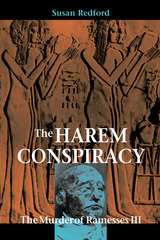 The Harem Conspiracy: The Murder of Ramesses III
Susan Redford
Northern Illinois University Press, 2008
For more than three thousand years, the mysterious events surrounding the death of Ramesses III have puzzled historians and students of ancient Egypt. Now, archaeologist Susan Redford investigates the circumstances of the ancient pharaoh's death and discovers among the women of his harem the threads of a murder conspiracy.
From new translations of ancient papyri and careful readings of temple carvings, Redford identifies the suspects in the assassination—wives, concubines, and attendants. She evaluates the evidence against them and outlines a possible murder plot that turns upon a shocking revelation about the pharaoh's immediate family. On the basis of new discoveries relating to the identity of Ramesses III's queens and their sons, she uncovers a primary motive for regicide and presents persuasive evidence of a palace revolt. Divisions between clans and rival lineages, she argues, gave rise to a plot to murder the king.
Richly illustrated with thirty photos and diagrams, Redford's groundbreaking investigation of the plot to murder "the last of the great pharaohs" offers an extraordinary vision of the ancient Egyptian world.
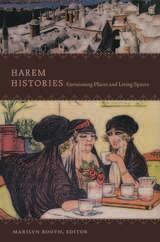 Harem Histories: Envisioning Places and Living Spaces
Marilyn Booth, ed.
Duke University Press, 2010 Harem Histories is an interdisciplinary collection of essays exploring the harem as it was imagined, represented, and experienced in Middle Eastern and North African societies, and by visitors to those societies. One theme that threads through the collection is the intimate interrelatedness of West and East evident in encounters within and around the harem, whether in the elite socializing of precolonial Tunis or the popular historical novels published in Istanbul and Cairo from the late nineteenth century onward. Several of the contributors focus on European culture as a repository of harem representations, but most of them tackle indigenous representations of home spaces and their significance for how the bodies of men and women, and girls and boys, were distributed in social space, from early Islamic Mecca to early-twentieth-century Cairo. Contributors. Asma Afsaruddin, Orit Bashkin, Marilyn Booth, Nadia Maria El Cheikh, Julia Clancy-Smith, Joan DelPlato, Jateen Lad, Nancy Micklewright, Yaseen Noorani, Leslie Peirce, Irvin Cemil Schick, A. Holly Schissler, Heghnar Zeitlian Watenpaugh
 Harker's Barns: Visions of an American Icon
Michael Harker
University of Iowa Press, 2003 Michael Harker drove past old barns on gravel roads and blacktop highways for years. He generally dismissed them as obsolete outbuildings until November 1993, when he felt compelled to photograph a windmill in Clutier, Iowa. This single photograph launched him on a seven-and-a-half-year mission to document Iowa's barns and all they represent. The result is Harker's Barns: Visions of an American Icon. Each of the seventy-five black-and-white images featured in Harker's Barns beautifully and heartbreakingly captures the glory and ultimate demise of one of rural America's most enduring icons. From square to round, wood to brick, Dutch to Swedish, occupied or abandoned, the barns documented in this stunning collection are a testament to a passing way of life that was once the lifeblood of Iowa and the Midwest. Complementing Harker's photographs are vignettes by poet and writer Jim Heynen. Both whimsical and endearing, each vignette treats barns as organic and intelligent entities, reflecting the living history that can be found inside each rural structure.
Iowa's barns are disappearing and with them a way of life; Harker's Barns brilliantly documents their heritage for future generations. As Jim Heynen says, “A good photograph can maintain an old barn through blizzards and hail storms and tornadoes. It is the best support beam and wood preservative an old barn can have.”
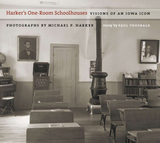 Harker's One-Room Schoolhouses: Visions of an Iowa Icon
Paul Theobald
University of Iowa Press, 2008 In Harker’s Barns documentary photographer Michael Harker captured the glory and the decay of one of rural America’s most elemental icons. Now in Harker’s One-Room Schoolhouses he brings another rural American icon back to life. His stark and stunning photographs of these small, neat buildings—once the social and educational center of rural life, now either abandoned or restored to an artificial quaintness—encapsulate the dramatic transformations that have overtaken the Iowa countryside.
Michael Harker’s goal is to record Iowa’s historically significant architecture before it disappears forever. From Coon Center School no. 5 in Albert City to Pleasant Valley School in Kalona, North River School in Winterset to Douglas Center School in Sioux Rapids, and Iowa’s first school to Grant Wood’s first school, he has achieved this goal on a grand scale in Harker’s One-Room Schoolhouses.
Educational historian Paul Theobald tells the story of the rise and fall of Iowa’s one-room schools, whose numbers fell from close to 15,000 in 1918 to only 1,100 in 1960, all of which had ceased to function as schools by 1980. Moving from the state-wide story to the personal, he introduces us to George Coleman, son of a local farmer and school board director, who kept a sparse diary between December 1869 and June 1870. Young George’s words reveal the intimate way in which one-room schools interacted with the local community, including the local economic scene. Theobald ends by suggesting that these one-room relics of the past may again prove useful.
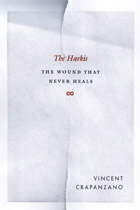 The Harkis: The Wound That Never Heals
Vincent Crapanzano
University of Chicago Press, 2011 In this haunting chronicle of betrayal and abandonment, ostracism and exile, racism and humiliation, Vincent Crapanzano examines the story of the Harkis, the quarter of a million Algerian auxiliary troops who fought for the French in Algeria’s war of independence. After tens of thousands of Harkis were massacred by other Algerians at the end of the war, the survivors fled to France where they were placed in camps, some for as long as sixteen years. Condemned as traitors by other Algerians and scorned by the French, the Harkis became a population apart, and their children still suffer from their parents’ wounds. Many have become activists, lobbying for recognition of their parents’ sacrifices, compensation, and an apology.
More than just a retelling of the Harkis’ grim past and troubling present, The Harkis is a resonant reflection on how children bear responsibility for the choices their parents make, how personal identity is shaped by the impersonal forces of history, and how violence insinuates itself into every facet of human life.
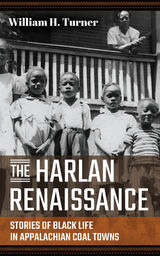 The Harlan Renaissance: Stories of Black Life in Appalachian Coal Towns
William H. Turner
West Virginia University Press, 2021 Weatherford Award Winner, Nonfiction
A personal remembrance from the preeminent chronicler of Black life in Appalachia.
The Harlan Renaissance is an intimate remembrance of kinship and community in eastern Kentucky’s coal towns written by one of the luminaries of Appalachian studies, William Turner. Turner reconstructs Black life in the company towns in and around Harlan County during coal’s final postwar boom years, which built toward an enduring bust as the children of Black miners, like the author, left the region in search of better opportunities.
The Harlan Renaissance invites readers into what might be an unfamiliar Appalachia: one studded by large and vibrant Black communities, where families took the pulse of the nation through magazines like Jet and Ebony and through the news that traveled within Black churches, schools, and restaurants. Difficult choices for the future were made as parents considered the unpredictable nature of Appalachia’s economic realities alongside the unpredictable nature of a national movement toward civil rights.
Unfolding through layers of sociological insight and oral history, The Harlan Renaissance centers the sympathetic perspectives and critical eye of a master narrator of Black life.
 Harlem Between Heaven And Hell
Monique M. Taylor
University of Minnesota Press, 2002 A hard-hitting look at race, class, and black gentrification in this emblematic community. Harlem brings to mind a kaleidoscope of images-the jazz clubs and cultural ferment of the 1920s and 1930s, the urban decay of the 1960s and 1970s, and the revitalization of the past twenty years, with artists, writers, professionals, and even an ex-president moving to a community often seen as the capital of black America. Integral to the ongoing transformation of Harlem has been the return of the African-American middle class to what had become an overwhelmingly poor area. In this lively book, Monique M. Taylor explores the stresses created by this influx, the surprising ways class differences manifest themselves and are managed, and what we can learn from examining a community in which race and class are so closely intertwined. Harlem between Heaven and Hell is told through a look at history, literature, redevelopment strategies, community activism, and extensive interviews with black professionals-married and single, with children and without, long-term residents and recent arrivals. In their voices we hear of the cultural legacy, political commitments, economic considerations, and desire for community that drew them to Harlem. They tell us of the complexities of gentrification and their own role in it: the trepidation and distrust that often greeted their arrival, the challenges of renovating Harlem’s historic brownstones in the face of entrenched neighborhood decay, learning and shaping the social mores of the area. Two key questions underlie these accounts: What does it mean when blacks move in alongside blacks of a different social class? How can a neighborhood successfully balance racial and class diversity in the face of rapid change? Taylor places this intraracial class conflict within the context of America’s changing race relations, showing how the feelings and issues that have arisen-to oppose, embrace, or participate in gentrification-reveal unsettled questions surrounding race, racism, class, and culture in a changing urban landscape. Through her incisive description of the everyday ways race and class are experienced, she has created a vivid exploration of black middle-class identity in the post-civil rights era.
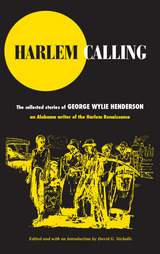 Harlem Calling: The Collected Stories of George Wylie Henderson
George Wylie Henderson
University of Michigan Press, 2005
"A very interesting collection . . . both for the way that Henderson's work links the literature of the Harlem Renaissance with the black protest literature of Richard Wright and others, and for Henderson's subject matter and the places that he chose to publish."
--Nellie McKay, University of Wisconsin-Madison
"There is really no other black fiction quite like this that I know of, from the 1920s through the 1930s . . . That Henderson was publishing stories in a newspaper and magazine for the mass market after the period when 'the vogue of the Negro' had allegedly ended is significant in itself. The stories are interesting in relation to both the Negro renaissance and the turn to proletarian fiction."
--George Hutchinson, Indiana University
Harlem Calling collects carefully crafted short stories about life in Alabama, Memphis, and New York City that dramatize the profound ambivalence many blacks felt about their participation in the Great Migration. George Wylie Henderson's tales of the rural South are sometimes nostalgic but also present the hard work and violence of everyday life there, and his stories set in Harlem present the glamour of urban life, while they also are concerned with poverty and social mores.
Henderson enjoyed a widespread popular audience for his periodical fiction in the 1930s and '40s and was a regular contributor to the New York Daily News and Redbook magazine, where the seventeen stories in Harlem Calling were originally published. Until the publication of Harlem Calling, Henderson had been chiefly known for his critically acclaimed 1935 novel about an Alabama farmhand, Ollie Miss, and the 1946 sequel narrating her son's migration to Harlem, Jule. Contemporary critics have favorably compared Henderson's writing to that of Zora Neale Hurston and Langston Hughes, as it captures the life of the black migrant with a style that embraces simplicity and honesty.
Collected here by literary scholar and editor David G. Nicholls, and contextualized with an informative and insightful introduction, Harlem Calling provides a unique perspective on the Harlem Renaissance and on the African American literary tradition.
George Wylie Henderson (1904-65) was born in Alabama, worked in the printing trade, and began writing fiction shortly after graduating from the Tuskegee Institute. He migrated to Harlem with his wife in the late 1920s and published his first story in the New York Daily News in 1932. He also published two novels, Ollie Miss (1935) and Jule (1946). David G. Nicholls is the Director of Book Publications for the Modern Language Association and holds a Ph.D. in English from the University of Chicago. He is author of Conjuring the Folk: Forms of Modernity in African America.
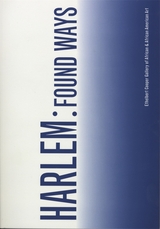 Harlem: Found Ways
Vera Ingrid Grant
Harvard University Press The art and artists of Harlem: Found Ways represent the place and its people, burnishing Harlem’s luster but never attempting to smooth its rough edges. The works in the exhibition span a variety of media to explore the invention of Harlem and, at the same time, reinvent it. Artists in the exhibition Harlem: Found Ways, at the Ethelbert Cooper Gallery of African & African American Art in Cambridge, MA, from 24 May to 15 July, 2017, included Dawoud Bey, Abigail DeVille, Glenn Ligon, Howard Tangye, Nari Ward, and Kehinde Wiley. The exhibition also included items from the Harlem Postcards project at The Studio Museum in Harlem.
This catalog features essays, including a foreword by Henry Louis Gates, Jr., that contemplate the uniquely layered urban landscape of Harlem, a city within a city. Vibrantly illustrated with objects from the exhibition, the catalog itself is an important resource for students of contemporary African American art and of the city.
 Harlem Renaissance and Beyond: Literary Biographies of One Hundred Black Women Writers, 1900-1945
Lorraine E. Roses
Harvard University Press In this ground-breaking collection of literary biographies, many with pictures, authors Lorraine Elena Roses and Ruth Elizabeth Randolph chronicle the lives and works of 100 black women novelists, short-story writers, playwrights, poets, essayists, critics, historians, journalists, and editors writing in the United States between 1900 and 1945.
Here are insightful portraits of famous black women, among them Zora Neale Hurston, Katherine Dunham, Angelina Weld Grimké, Mary Eliza Church Terrell, and Ida Bell Wells-Barnett. Here, too, are many thoughtful profiles of neglected writers--their works deserving to be rescued from obscurity. Drawing on extensive archival research and interviews with the writers and their families, The Harlem Renaissance and Beyond traces its subjects' contributions to literature, their concerns about race and gender, their common themes, their relationships with artistic contemporaries, and the influence of these early writers on their modern-day counterparts in American literature.
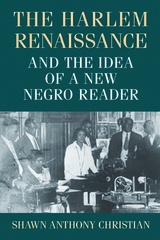 The Harlem Renaissance and the Idea of a New Negro Reader
Shawn Anthony Christian
University of Massachusetts Press, 2016 Many scholars have written about the white readers and patrons of the Harlem Renaissance, but during the period many black writers, publishers, and editors worked to foster a cadre of African American readers, or in the poet Sterling Brown's words, a "reading folk." Black newspapers featured columns that reviewed the latest African American fiction. Magazines held writing contests to urge black readers to participate in the literary culture. Through newspapers, journals, and anthologies, writers such as James Weldon Johnson, Jessie Fauset, and Gwendolyn Bennett spoke directly to their fellow African Americans to cultivate interest in literature and the intellectual tools for reading it.
In The Harlem Renaissance and the Idea of a New Negro Reader, Shawn Anthony Christian argues that print-based addresses to African Americans are a defining but understudied component of the Harlem Renaissance. Especially between 1919 and 1930, these writers promoted diverse racial representation as a characteristic of "good literature" both to exhibit black literacy and to foster black readership. Drawing on research from print culture studies, histories of racial uplift, and studies of modernism, Christian demonstrates the importance of this focus on the African American reader in influential periodicals such as The Crisis and celebrated anthologies such as The New Negro. Christian illustrates that the drive to develop and support black readers was central in the poetry, fiction, and drama of the era.
 The Harlem Renaissance in Black and White
George Hutchinson
Harvard University Press, 1995 It wasn’t all black or white. It wasn’t a vogue. It wasn’t a failure. By restoring interracial dimensions left out of accounts of the Harlem Renaissance—or blamed for corrupting it—George Hutchinson transforms our understanding of black (and white) literary modernism, interracial literary relations, and twentieth-century cultural nationalism in the United States.
What has been missing from literary histories of the time is a broader sense of the intellectual context of the Harlem Renaissance, and Hutchinson supplies that here: Boas’s anthropology, Park’s sociology, various strands of pragmatism and cultural nationalism—ideas that shaped the New Negro movement and the literary field, where the movement flourished. Hutchinson tracks the resulting transformation of literary institutions and organizations in the 1920s, offering a detailed account of the journals and presses, black and white, that published the work of the “New Negroes.” This cultural excavation discredits bedrock assumptions about the motives of white interest in the renaissance, and about black relationships to white intellectuals of the period. It also allows a more careful investigation than ever before of the tensions among black intellectuals of the 1920s. Hutchinson’s analysis shows that the general expansion of literature and the vogue of writing cannot be divorced from the explosion of black literature often attributed to the vogue of the New Negro—any more than the growing sense of “Negro” national consciousness can be divorced from expanding articulations and permutations of American nationality. The book concludes with the first full-scale interpretation of the landmark anthology The New Negro.
A courageous work that exposes the oversimplifications and misrepresentations of popular readings of the Harlem Renaissance, this book reveals the truly composite nature of American literary culture.
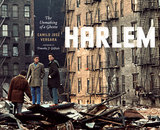 Harlem: The Unmaking of a Ghetto
Camilo José Vergara
University of Chicago Press, 2013 For more than a century, Harlem has been the epicenter of black America, the celebrated heart of African American life and culture—but it has also been a byword for the problems that have long plagued inner-city neighborhoods: poverty, crime, violence, disinvestment, and decay.
Photographer Camilo José Vergara has been chronicling the neighborhood for forty-three years, and Harlem: The Unmaking of a Ghetto is an unprecedented record of urban change. Vergara began his documentation of Harlem in the tradition of such masters as Helen Levitt and Aaron Siskind, and he later turned his focus on the neighborhood’s urban fabric, both the buildings that compose it and the life and culture embedded in them. By repeatedly returning to the same locations over the course of decades, Vergara is able to show us a community that is constantly changing—some areas declining, as longtime businesses give way to empty storefronts, graffiti, and garbage, while other areas gentrify, with corporate chain stores coming in to compete with the mom-and-pops. He also captures the ever-present street life of this densely populated neighborhood, from stoop gatherings to graffiti murals memorializing dead rappers to impersonators honoring Michael Jackson in front of the Apollo, as well as the growth of tourism and racial integration.
Woven throughout the images is Vergara’s own account of his project and his experience of living and working in Harlem. Taken together, his unforgettable words and images tell the story of how Harlem and its residents navigated the segregation, dereliction and slow recovery of the closing years of the twentieth century and the boom and racial integration of the twenty-first century. A deeply personal investigation, Harlem will take its place with the best portrayals of urban life.
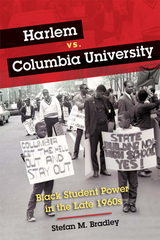 Harlem vs. Columbia University: Black Student Power in the Late 1960s
Stefan M. Bradley
University of Illinois Press, 2012 In 1968–69, Columbia University became the site for a collision of American social movements. Black Power, student power, antiwar, New Left, and Civil Rights movements all clashed with local and state politics when an alliance of black students and residents of Harlem and Morningside Heights openly protested the school's ill-conceived plan to build a large, private gymnasium in the small green park that separates the elite university from Harlem. Railing against the university's expansion policy, protesters occupied administration buildings and met violent opposition from both fellow students and the police. In this dynamic book, Stefan M. Bradley describes the impact of Black Power ideology on the Students' Afro-American Society (SAS) at Columbia. While white students--led by Mark Rudd and Students for a Democratic Society (SDS)--sought to radicalize the student body and restructure the university, black students focused on stopping the construction of the gym in Morningside Park. Through separate, militant action, black students and the black community stood up to the power of an Ivy League institution and stopped it from trampling over its relatively poor and powerless neighbors. Comparing the events at Columbia with similar events at Harvard, Cornell, Yale, and the University of Pennsylvania, Bradley locates this dramatic story within the context of the Black Power movement and the heightened youth activism of the 1960s. Harnessing the Civil Rights movement's spirit of civil disobedience and the Black Power movement's rhetoric and methodology, African American students were able to establish an identity for themselves on campus while representing the surrounding black community of Harlem. In doing so, Columbia's black students influenced their white peers on campus, re-energized the community's protest efforts, and eventually forced the university to share its power.
 Harlem's Glory: Black Women Writing, 1900-1950
Lorraine E. Roses
Harvard University Press, 1996 In poems, stories, memoirs, and essays about color and culture, prejudice and love, and feminine trials, dozens of African-American women writers--some famous, many just discovered--give us a sense of a distinct inner voice and an engagement with their larger double culture. Harlem's Glory unfolds a rich tradition of writing by African-American women, hitherto mostly hidden, in the first half of the twentieth century. In historical context, with special emphasis on matters of race and gender, are the words of luminaries like Zora Neale Hurston and Georgia Douglas Johnson as well as rare, previously unpublished writings by figures like Angelina Weld Grimké, Elise Johnson McDougald, and Regina Andrews, all culled from archives and arcane magazines.
Editors Lorraine Elena Roses and Ruth Elizabeth Randolph arrange their selections to reveal not just the little-suspected extent of black women's writing, but its prodigious existence beyond the cultural confines of New York City. Harlem's Glory also shows how literary creativity often coexisted with social activism in the works of African-American women.
This volume is full of surprises about the power and diversity of the writers and genres. The depth, the wit, and the reach of the selections are astonishing. With its wealth of discoveries and rediscoveries, and its new slant on the familiar, all elegantly presented and deftly edited, the book will compel a reassessment of writing by African-American women and its place in twentieth-century American literary and historical culture.
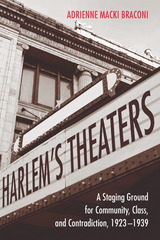 Harlem's Theaters: A Staging Ground for Community, Class, and Contradiction, 1923-1939
Adrienne Macki Braconi
Northwestern University Press, 2015 Honorable Mention, 2016 Errol Hill Book Award for Outstanding Scholarship in African American Theater, Drama and/or Performance
Based on a vast amount of archival research, Adrienne Macki Braconi’s illuminating study of three important community-based theaters in Harlem shows how their work was essential to the formation of a public identity for African Americans and the articulation of their goals, laying the groundwork for the emergence of the Civil Rights movement. Macki Braconi uses textual analysis, performance reconstruction, and audience reception to examine the complex dynamics of productions by the Krigwa Players, the Harlem Experimental Theatre, and the Negro Theatre of the Federal Theatre Project. Even as these theaters demonstrated the extraordinary power of activist art, they also revealed its limits. The stage was a site in which ideological and class differences played out, theater being both a force for change and a collision of contradictory agendas. Macki Braconi’s book alters our understanding of the Harlem Renaissance, the roots of the Civil Rights movement, and the history of community theater in America.
Harlemworld: Doing Race and Class in Contemporary Black America
John L. Jackson Jr.
University of Chicago Press, 2001 Harlem is one of the most famous neighborhoods in the world—a historic symbol of both black cultural achievement and of the rigid boundaries separating the rich from the poor. But as this book shows us, Harlem is far more culturally and economically diverse than its caricature suggests: through extensive fieldwork and interviews, John L. Jackson reveals a variety of social networks and class stratifications, and explores how African Americans interpret and perform different class identities in their everyday behavior.
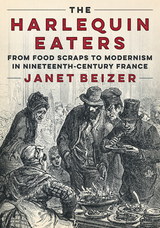 The Harlequin Eaters: From Food Scraps to Modernism in Nineteenth-Century France
Janet Beizer
University of Minnesota Press, 2024 How representations of the preparation, sale, and consumption of leftovers in nineteenth-century urban France link socioeconomic and aesthetic history
The concept of the “harlequin” refers to the practice of reassembling dinner scraps cleared from the plates of the wealthy to sell, replated, to the poor in nineteenth-century Paris. In The Harlequin Eaters, Janet Beizer investigates how the alimentary harlequin evolved in the nineteenth and early twentieth centuries from the earlier, similarly patchworked Commedia dell’arte Harlequin character and can be used to rethink the entangled place of class, race, and food in the longer history of modernism. By superimposing figurations of the edible harlequin taken from a broad array of popular and canonical novels, newspaper articles, postcard photographs, and lithographs, Beizer shows that what is at stake in nineteenth-century discourses surrounding this mixed meal are representations not only of food but also of the marginalized people—the “harlequin eaters”—who consume it at this time when a global society is emerging. She reveals the imbrication of kitchen narratives and intellectual–aesthetic practices of thought and art, presenting a way to integrate socioeconomic history with the history of literature and the visual arts. The Harlequin Eaters also offers fascinating background to today’s problems of food inequity as it unpacks stories of the for-profit recycling of excess food across class and race divisions.
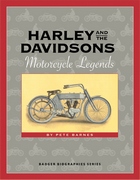 Harley and the Davidsons: Motorcycle Legends
Pete Barnes
Wisconsin Historical Society Press, 2007 This addition to the Badger Biographies series tells the story of four young inventors who shared a dream: to create the best motorized bicycle in America. Their turn of the century aspirations took them from a backyard machine shop to a highly successful business empire - and all in the span of just a few years. With grit, determination, and not a little elbow grease, Bill Harley and the Davidson brothers - Arthur, William, and Walter - used their engineering and machine-shop expertise to continually perfect their designs and present the best possible products to the American public. Along the way they made their mark on the racing circuit and introduced safety measures that continue to this day. After their deaths, their sons and daughters continued this legacy, buying back the company after it changed hands and re-establishing Harley-Davidson as the king of the motorcycle world. From the old Knucklehead, Panhead and Shovelhead motors to the Evolution, Revolution and Twin Cam engines that followed, the story of Harley and the Davidsons remains one of the great success stories of the 20th century.
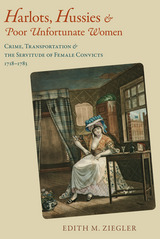 Harlots, Hussies, and Poor Unfortunate Women: Crime, Transportation, and the Servitude of Female Convicts, 1718-1783
Edith M. Ziegler
University of Alabama Press, 2014 In Harlots, Hussies, and Poor Unfortunate Women, Edith M. Ziegler recounts the history of British convict women involuntarily transported to Maryland in the eighteenth century.
Great Britain’s forced transportation of convicts to colonial Australia is well known. Less widely known is Britain’s earlier program of sending convicts—including women—to North America. Many of these women were assigned as servants in Maryland. Titled using epithets that their colonial masters applied to the convicts, Edith M. Ziegler’s Harlots, Hussies, and Poor Unfortunate Women examines the lives of this intriguing subset of American immigrants.
Basing much of her powerful narrative on the experiences of actual women, Ziegler restores individual faces to women stripped of their basic freedoms. She begins by vividly invoking the social conditions of eighteenth-century Britain, which suffered high levels of criminal activity, frequently petty thievery. Contemporary readers and scholars will be fascinated by Ziegler’s explanation of how gender-influenced punishments were meted out to women and often ensnared them in Britain’s system of convict labor.
Ziegler depicts the methods and operation of the convict trade and sale procedures in colonial markets. She describes the places where convict servants were deployed and highlights the roles these women played in colonial Maryland and their contributions to the region’s society and economy. Ziegler’s research also sheds light on escape attempts and the lives that awaited those who survived servitude.
Mostly illiterate, convict women left few primary sources such as diaries or letters in their own words. Ziegler has masterfully researched the penumbra of associated documents and accounts to reconstruct the worlds of eighteenth-century Britain and colonial Maryland and the lives of these unwilling American settlers. In illuminating this little-known episode in American history, Ziegler also discusses not just the fact that these women have been largely forgotten, but why. Harlots, Hussies, and Poor Unfortunate Women makes a valuable contribution to American history, women’s studies, and labor history.
Harm
Hillary Gravendyk
Omnidawn, 2012 Offering a new narrative of physical body constituted in perilous scenes of contact, Harm performs the loss of that fictive division between a unified body and its surrounding world. Terrifying and unlooked- for harmonies emerge in these poems, which dwell in a medicalized landscape where both the body and the land are monitored and laid bare. Troubling the idea of cure by recasting it in the terms of harm, Harm shifts between warning and error, nature and the body. In the sense of Baudelaire’s “correspondences,” bloodclots externalize into “sunclots” and the air is “rusty with blood.” The book troubles the idea of cure by casting it also as a form of harm itself. Moving amid the prose poem and the lyric, Harm navigates a landscape of extremity both frightening and filled with wonders.
 The Harm in Hate Speech
Jeremy Waldron
Harvard University Press, 2012 Every liberal democracy has laws or codes against hate speech—except the United States. For constitutionalists, regulation of hate speech violates the First Amendment and damages a free society. Against this absolutist view, Jeremy Waldron argues powerfully that hate speech should be regulated as part of our commitment to human dignity and to inclusion and respect for members of vulnerable minorities.
Causing offense—by depicting a religious leader as a terrorist in a newspaper cartoon, for example—is not the same as launching a libelous attack on a group’s dignity, according to Waldron, and it lies outside the reach of law. But defamation of a minority group, through hate speech, undermines a public good that can and should be protected: the basic assurance of inclusion in society for all members. A social environment polluted by anti-gay leaflets, Nazi banners, and burning crosses sends an implicit message to the targets of such hatred: your security is uncertain and you can expect to face humiliation and discrimination when you leave your home.
Free-speech advocates boast of despising what racists say but defending to the death their right to say it. Waldron finds this emphasis on intellectual resilience misguided and points instead to the threat hate speech poses to the lives, dignity, and reputations of minority members. Finding support for his view among philosophers of the Enlightenment, Waldron asks us to move beyond knee-jerk American exceptionalism in our debates over the serious consequences of hateful speech.
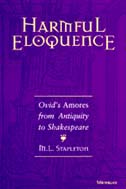 Harmful Eloquence: Ovid's Amores from Antiquity to Shakespeare
M. L. Stapleton
University of Michigan Press, 1996 M. L . Stapleton's Harmful Eloquence: Ovid's "Amores" from Antiquity to Shakespeare traces the influence of the early elegiac poetry of Ovid (43 b.c.e.-17 c.e.) on European literature from 500-1600 c.e. The Amores served as a classical model for love poetry in the Middle Ages and the Renaissance and were essential to the formation of fin' Amors, or "courtly love." Medieval Latin poets, the troubadours, Dante, Petrarch, and Shakespeare were all familiar with Ovid in his various forms, and all depended greatly upon his Amores in composing their cansos, canzoniere, and sonnets.
Harmful Eloquence begins with a detailed analysis of the Amores themselves and their artistic unity. It moves on to explain the fragmentary transmission of the Amores in the "Latin Anthology" and the cohesion of the fragments into the conventions of Medieval Latin and troubadour "courtly love" poetry. Two subsequent chapters explain the use of the Amores, their narrator, and the conventions of "courtly love" in the poetry of both Dante and Petrarch. The final chapter concentrates on Shakespeare's reprocessing and parody of this material in his sonnets.
Harmful Eloquence analyzes the intertextual transmission of the Amores in major medieval and Renaissance love poetry for the first time. No previous study has devoted itself exclusively to this Ovidian text in this particular way. The premise that Ovid consciously used the device of persona from the very beginning of his writing career is fully explored, as is the "Ovidian hypothesis" of Wilibald Schroetter. Connections between Dante's La vita nuova and the Amores are newly discovered; significant for Shakespeare studies, the use of Christopher Marlowe's translation of the Amores by Shakespeare in his "dark lady" sonnets is also carefully analyzed for the first time.
Medievalists, classicists, and scholars of Renaissance studies will find Harmful Eloquence particularly engaging and useful, as will all those interested in the process and methods of literary transmission.
M. L. Stapleton is Associate Professor of English, Stephen F. Austin University.
Harmful Societies: Understanding Social Harm
Simon A. Pemberton
Bristol University Press, 2015 The notion of social harm is currently being explored as an alternative field of study within criminology, but the definition of social harm, the question of responsibility, and the methodologies for studying harm remain undeveloped. In the first book to theorize and define the social harm concept beyond criminology, Simon Pemberton addresses these omissions and, in doing so, provides a platform for future debates. Using case studies of various international regimes, he analyzes policy responses to different forms of social harm and provides a new typology of countries according to their harm prevention policies.
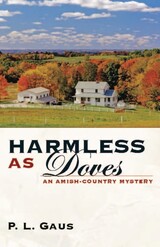 Harmless as Doves: An Amish–Country Mystery
P. L. Gaus
Ohio University Press, 2011 As he goes about his milking chores on a cold October morning, Bishop Leon Shetler daydreams of escaping the Ohio winter and taking a bus to the Pinecraft Amish community in Florida for a vacation. His reverie is suddenly interrupted when young Crist Burkholder enters the barn, head down, hat in hand, to make a confession. ”I just killed Glenn Spiegle.” “An Amish murderer?” Sheriff Robertson asks when he arrives on the scene. “Who will believe that?” But Burkholder is adamant about his guilt, fueled by the passion of his love for Vesta Miller, the young woman both he and Spiegle so desperately wanted to marry. No sooner does the sheriff start his investigation than he learns of two more murders in the Pinecraft community, and a startling connection is made. There’s no way around it — Professor Mike Branden will have to put his research trip on hold and, along with detective Ricky Niell, travel south to investigate. There they discover the disturbing truth about Spiegle’s conversion to the Amish faith and the reason for the long–smoldering hatred that has reached into the secluded pastoral valleys of Holmes County. In Harmless as Doves, P. L. Gaus takes the action to Florida in one of the most exciting mysteries in this series. This is Gaus at his best.
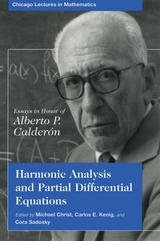 Harmonic Analysis and Partial Differential Equations: Essays in Honor of Alberto P. Calderon
Edited by Michael Christ, Carlos E. Kenig, and Cora Sadosky
University of Chicago Press, 1999 Alberto P. Calderón (1920-1998) was one of this century's leading mathematical analysts. His contributions, characterized by great originality and depth, have changed the way researchers approach and think about everything from harmonic analysis to partial differential equations and from signal processing to tomography. In addition, he helped define the "Chicago school" of analysis, which remains influential to this day.
In 1996, more than 300 mathematicians from around the world gathered in Chicago for a conference on harmonic analysis and partial differential equations held in Calderón's honor. This volume originated in papers given there and presents timely syntheses of several major fields of mathematics as well as original research articles contributed by some of the finest scholars working in these areas. An important addition to the literature, this book is essential reading for researchers in these and other related fields.
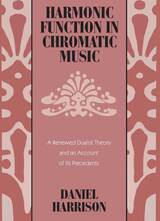 Harmonic Function in Chromatic Music: A Renewed Dualist Theory and an Account of Its Precedents
Daniel Harrison
University of Chicago Press, 1994 The highly chromatic music of the late 1800s and early 1900s includes some of the best-known works by Gustav Mahler, Richard Strauss, Cesar Franck, and Hugo Wolf. Yet until now, the harmonic complexity of this repertory has resisted the analytic techniques available to music theorists and historians. In this book, Daniel Harrison builds on nineteenth-century music theory to provide an original and illuminating method for analyzing chromatic music.
One of Harrison's central innovations is his reconstruction of the notion of harmony. Harrison understands harmonic power to flow not from chords as such but from the constituents of chords, reckoned for the most part as scale degrees of a key. This insight proves especially useful in analyzing the unusual progressions and key relations that characterize chromatic music.
Complementing the theoretical ideas is a critical history of nineteenth-century German harmonic theory in which Harrison traces the development of Hugo Riemann's ideas on dualism and harmonic function and examines aspects of Riemannian theory in the work of later theorists. Combining theoretical innovations with a sound historical understanding of those innovations, Harmonic Function in Chromatic Music will aid anyone studying this pivotal period of Western music history.
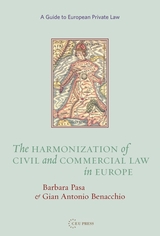 The Harmonization of Civil and Commercial Law in Europe
Gian Antonio Benacchio
Central European University Press, 2005 The "Europeanization" of European private law has recently received much scrutiny and attention. Harmonizing European systems of law represents one of the greatest challenges of the 21st century. In effect, it is the adaptation of national laws into a new supra-national law, a process that signifies the beginning of a new age in Europe. This volume seeks to frame the creation of a new European Common Law in the context of recent events in European integration.Engaged in timely and cutting edge research, the authors cast into fine relief the building of a European Common Law. The work is envisioned as a guide and written in a research friendly style that includes text inserts and an extensive bibliography. In particular, this book seeks to orient lawmakers, as well as those individuals interested in EU law, in the intricacies of consumer protection, contractual law, timesharing, and other important aspects in the harmonization of domestic and EU law books. The detailed analysis and research this volume accomplishes is invaluable to those scholars and lawmakers who are the next generation of European leaders.
Harmony
Heinrich Schenker
University of Chicago Press, 1954 Harmony, Heinrich Schenker's first published work, originally appeared in German in 1906 as "New Musical Theories and Phantasies, by an Artist." Its unusual title indicates what was to be the rationale of Schenker's lifework, that artistic problems call for artistic solutions. Schenker's dedication to the formulation of a complete musical theory above the commonplace theoretical discussions was, in essence, his quest for a pattern in nature for music as art. Schenker's theory draws upon a profound understanding of the works of the masters and every proposition is illustrated by a living musical example.
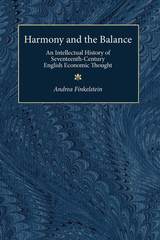 Harmony and the Balance: An Intellectual History of Seventeenth-Century English Economic Thought
Andrea Finkelstein
University of Michigan Press, 2000 Frequently the achievements of pioneering economic writers are assessed by imposing contemporary theories of markets, economics, politics, and history. At last, here is a book that appraises the work of the leading English economic writers of the seventeenth century using intellectual concepts of the time, rather than present-day analytical models, in order to place their economic theories in context. In an analysis that tracks the Stuart century, Andrea Finkelstein traces the progress of such figures as Gerard de Malynes, William Petty, John Locke, and Charles Davenant by inviting us into the great trading companies and halls of parliament where we relive the debates over the coinage, the interest rate, and the nature of money. Furthermore, we see them model their works on the latest developments in physiology, borrow ideas from bookkeeping, and argue over the nature of numbers in an effort to construct a market theory grounded in objective moral value. This comprehensive approach clarifies the relationship between the century's economic ideas and its intellectual thought so that, in the end, readers will be able to judge for themselves whether this really was the age of the Capitalist Geist.
Finkelstein has crafted her book to be both inclusive and interdisciplinary by skillfully integrating biography, political history, economic history, and intellectual theory as well as the economic heritage of its subjects. While the concepts are far from simple, Finkelstein's adroit style presents her analysis in an extremely accessible manner.
Andrea Finkelstein is Assistant Professor of History, City University of New York.
The Harmony of Reason: A Study of Kant’s Aesthetics
Francis X. J. Coleman
University of Pittsburgh Press, 1974 The Harmony of Reason is the first book-length critical study of Kant's Critique of Judgement, shedding new light on this often-overlooked work and Kant's other writings on aesthetics. Francis X. J. Coleman's deep analysis of Kant is intended for readers interested in philosophy, fine arts and literary criticism.
 Harm's Way: Poems
Eric Leigh
University of Arkansas Press, 2010 Finalist, Miller Williams Poetry Prize “The past is a flame you must learn to hold / your hand above,” Eric Leigh writes in this stunning first volume of poems, a poignant meditation on the harm that we can and cannot keep from those we love, and the harm that cannot be kept from us. Taking place in both the rural and the urban, in fields and on sidewalks, in gay bars and in laboratories, with topics as diverse and powerful as a father’s suicide, a mother’s resilience, coming out, lost love, and the continuing plight of HIV, Leigh’s poems locate the heartbreaking music in these struggles. At the center of this profound book about loss—of family, of love, of immunity—lies the spirit’s ability to persevere. “My worst fear has come true, / and I am still here walking,” Leigh writes. Indeed, these poems are as assured and brave as those steps toward an unknown future. At turns beautiful, disturbing, mournful, and redemptive, Harm’s Way is an accomplished debut. Harm’s Way is part of the University of Arkansas Press Poetry Series, edited by Enid Shomer.
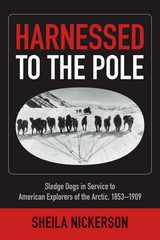 Harnessed to the Pole: Sledge Dogs in Service to American Explorers of the Arctic 1853-1909
Sheila Nickerson
University of Alaska Press, 2014 In the second half of the nineteenth century, an epic race was underway in some of the most brutal stretches on the planet. Explorers from around the world hoped to stake their claim on the Arctic, with the North Pole being the ultimate prize. Those with the greatest success found that the fastest way to travel was on four legs—using a team of hardworking sledge dogs.
Harnessed to the Pole follows the adventures of eight American explorers and their dog teams, starting with Elisha Kent Kane and ending with Robert Peary, controversial claimant of the title of first to reach the North Pole. While history has long forgotten these “little camels of the north,” Sheila Nickerson reveals how critical dogs were to the Arctic conquest. Besides providing transportation in extreme conditions, sledge dogs protected against wolves and polar bears, helped in hunting, found their way through storms, and provided warmth in extreme cold. They also faced rough handling, starvation, and the possibility of being left behind as expeditions plunged ahead. Harnessed to the Pole is an extraordinary—and unflinching—look at the dogs that raced to the top of the world.
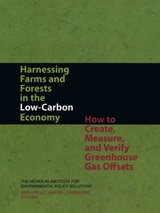 Harnessing Farms and Forests in the Low-Carbon Economy: How to Create, Measure, and Verify Greenhouse Gas Offsets
Nicholas Institute for Environmental Policy Solutions and Zach Willey and Bill Chameides, editors, eds.
Duke University Press, 2007 As the United States moves to a low-carbon economy in order to combat global warming, credits for reducing carbon dioxide emissions will increasingly become a commodity that is bought and sold on the open market. Farmers and other landowners can benefit from this new economy by conducting land management practices that help sequester carbon dioxide, creating credits they can sell to industry to “offset” industrial emissions of greenhouse gases. This guide is the first comprehensive technical publication providing direction to landowners for sequestering carbon and information for traders and others who will need to verify the sequestration. It will provide invaluable direction to farmers, foresters, land managers, consultants, brokers, investors, regulators, and others interested in creating consistent, credible greenhouse gas offsets as a tradable commodity in the United States. The guide contains a non-technical section detailing methodologies for scoping of the costs and benefits of a proposed project, quantifying offsets of various sorts under a range of situations and conditions, and verifying and registering the offsets. The technical section provides specific information for quantifying, verifying, and regulating offsets from agricultural and forestry practices. Visit the Nicholas Institute for Environmental Policy Solutions website for audio from the press conference announcing the book.
Read the press release announcing the book.
 Harnessing the State: Oppressed Groups and the Pursuit of Radical Democracy
Hari Ramesh
Harvard University Press Building on the work of key twentieth-century US and Indian thinkers, a bold argument that oppressed groups can—and should—make use of state power to create truly democratic societies.
Group-based social oppression, along lines such as caste in India and race in the United States, is a persistent problem in nominally democratic countries. Unsurprisingly, many citizens are skeptical that the state can effectively address the problem. Pro-democracy scholars and activists often argue that the state is just a tool of society’s most powerful interests, who will stifle any attempted reform.
Yet some of the twentieth century’s most significant political thinkers offer a more hopeful and fruitful perspective. Foregrounding previously neglected connections between Indian and American sources, Hari Ramesh draws on insights from John Dewey, B. R. Ambedkar, W. E. B. Du Bois, and a key brief from Brown v. Board of Education to argue that oppressed groups can in fact wield the tools of the state to claim agency and dismantle the sources of their oppression. In this alternative vision, state action fosters a radical vision of democracy, with citizens coming together as equals to formulate and pursue their political aims.
Group-based social oppression is not only unjust: by selectively preventing citizens from participating fully and equally in the project of self-government, oppression undermines the possibility of democracy itself. Harnessing the State shows a way forward.
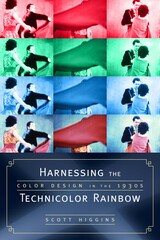 Harnessing the Technicolor Rainbow: Color Design in the 1930s
By Scott Higgins
University of Texas Press, 2007 Like Dorothy waking up over the rainbow in the Land of Oz, Hollywood discovered a vivid new world of color in the 1930s. The introduction of three-color Technicolor technology in 1932 gave filmmakers a powerful tool with which to guide viewers' attention, punctuate turning points, and express emotional subtext. Although many producers and filmmakers initially resisted the use of color, Technicolor designers, led by the legendary Natalie Kalmus, developed an aesthetic that complemented the classical Hollywood filmmaking style while still offering innovative novelty. By the end of the 1930s, color in film was thoroughly harnessed to narrative, and it became elegantly expressive without threatening the coherence of the film's imaginary world. Harnessing the Technicolor Rainbow is the first scholarly history of Technicolor aesthetics and technology, as well as a thoroughgoing analysis of how color works in film. Scott Higgins draws on extensive primary research and close analysis of well-known movies, including Becky Sharp, A Star Is Born, Adventures of Robin Hood, and Gone with the Wind, to show how the Technicolor films of the 1930s forged enduring conventions for handling color in popular cinema. He argues that filmmakers and designers rapidly worked through a series of stylistic modes based on the demonstration, restraint, and integration of color—and shows how the color conventions developed in the 1930s have continued to influence filmmaking to the present day. Higgins also formulates a new vocabulary and a method of analysis for capturing the often-elusive functions and effects of color that, in turn, open new avenues for the study of film form and lay a foundation for new work on color in cinema.
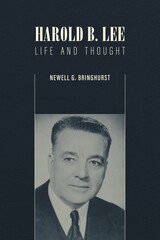 Harold B. Lee: Life and Thought
Newell G. Bringhurst
Signature Books, 2021 While Harold B. Lee served as president of the Church of Jesus Christ of Latter-day Saints for a mere one and half-years—among the shortest tenure of any church leader—his impact on the modern LDS Church remains among the most profound. Lee implemented the Church Welfare Program, which provided relief to suffering church members during the 1930s Great Depression and continues to impact the lives of church members today. As a high-ranking general authority from 1941 to 1973, he championed other innovations, the most important being Correlation. Lee acted in response to the church’s record growth and increased diversity to consolidate and streamline churchwide instruction and administration. As a teacher/mentor, he promoted conservative church doctrine and practice, which influenced a generation of church leaders, including future presidents Spencer W. Kimball, Ezra Taft Benson, Howard W. Hunter, Gordon B. Hinckley, and Thomas S. Monson. Noted historian Newell G. Bringhurst succinctly narrates the major, defining events in Lee’s remarkable life, while highlighting Lee’s important, lasting contributions. This is the first volume in Signature’s new Brief Mormon Lives series.
Harold D. Lasswell on Political Sociology
Harold D. Lasswell
University of Chicago Press, 1977 Harold D. Lasswell's pioneering work in the field of political sociology is distinguished by his insistence on studying major contemporary problems, his willingness to try new methods of inquiry, and—above all—his conviction that, to understand events on the political stage, one must also analyze the social and historical context. From the huge corpus of Lasswell's work, Dwaine Marvick has chosen representative selections that demonstrate the wide range of his interests, the intellectual framework of this thought, the characteristics of his style, and the diversity of his methods. The volume is organized around the five fields of central interest to Lasswell: elite analysis in an contextual perspective, developmental constructs, political communications research, the use of psychoanalysis to explain political behavior, and the role of intellectuals in policy-making processes.
 Harold Ickes of the New Deal: His Private Life and Public Career
Graham White and John Maze
Harvard University Press, 1985 Very little has been written about Harold Ickes, one of the most important, complex, and colorful figures of the New Deal. By any standards his public career was remarkable. For thirteen turbulent years as Interior Secretary and as head of the Public Works Administration he was an uncommonly effective official and a widely acknowledged leader of liberal reform. As the foremost conservationist of his time, he saved millions of acres of land from decimation. He was matchless, too, as a fighter for just causes, and used his formidable talent for invective and his inexhaustible supply of moral fervor to flay representatives of prejudice and self-interest, whether in the cause of Negro rights or that of the common man against economic royalists.
Despite a long and distinguished public life, Ickes is an enigma because of his inability to control his rage, to temper his public criticism, to respond objectively to situations. At the heart of his public and private life was constant moral outrage. This astute study by a historian and a psychologist probes the sources and consequences of Ickes' abnormal combativeness.
White and Maze uncover the psychological imperatives and conscious ideals of Ickes' unknown private life that illuminate his public career. Some of the episodes include sadistic attacks by an elder brother; young Harold contemplating shooting his father; bitter and physical brawls with his imperious, wealthy, and previously married socialite wife, Anna Wilmarth Thompson of Chicago; and thoughts of suicide.
Richard Polenberg calls this book "Superb [and] one of the most informative and interesting I have read on the New Deal. The story shows Ickes' weaknesses and flaws, but it puts them in context. The authors have not tried to explain everything Ickes ever did wholly in psychological terms, but the particular insights they bring to bear help present a rounded view of the man. The book is beautifully written."
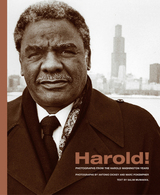 Harold!: Photographs from the Harold Washington Years
Photographs by Antonio Dickey and Marc PoKempner, text by Salim Muwakkil
Northwestern University Press, 2007 This handsome book captures in words and pictures the powerful emotions that circled around one man in Chicago in the early 1980’s: Harold Washington. More than one hundred pictures, from candid shots on the campaign trail to triumphant public appearances, give readers a window onto a man who won over an entire city. Washington’s mayoral win represented a faltering of the previously all-powerful Chicago Machine, and his campaign was a part of a larger civil rights crusade that forged unity in the black community in Chicago.
Antonio Dickey and Marc PoKempner were there with Washington throughout 1982-87, Dickey as his campaign and personal photographer and PoKempner on assignment for the New York Times, People, and Time, capturing the force of his personality and the inspiration he brought to Chicago. Their photographs have become the definitive documentation of the Harold years and were featured in the Chicago Historical Society’s 2003–2004 exhibit “Harold Washington: The Man and the Movement.” They were there for his underdog rise, his win, his first term, and his untimely death just seven months into his second term. The year 2007 marks the twentieth anniversary of Washington’s death, and this loving tribute in words and pictures will keep his message alive for future generations.
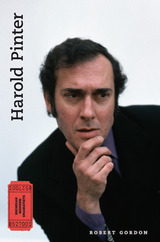 Harold Pinter: The Theatre of Power
Robert Gordon
University of Michigan Press, 2013 The latest volume in the Michigan Modern Dramatists series offers an authoritative but accessible look at Harold Pinter, one of the greatest and most influential postwar British playwrights and author of classic works such as The Birthday Party and The Homecoming. Pinter was awarded the Nobel Prize for Literature in 2005 for his remarkable body of work and plays that "uncover the precipice under everyday prattle and force entry into oppression's closed rooms." Harold Pinter: The Theatre of Power focuses on the playwright's continuously innovative experiments in theatrical form while tracing the recurrence of a consistent set of ethical and epistemological concerns. Exploring important plays from across this prolific writer’s career, author Robert Gordon argues that the motivating force in almost all of Pinter's drama is the ceaseless desire for power, represented in his work as a compulsive drive to achieve or maintain dominance—whether it be the struggle to defend one's own territory from intruders, the father's battle with his sons to assert his patriarchal position in the family, the manipulation of erotic feelings in the gender warfare that motivates sexual relationships, the abuse of brute force by dictatorships and democracies, or simply the masculine obsession to dominate. Gordon demonstrates the adventurousness of Pinter's experimentation with form while at the same time exposing the ethical, epistemological, and aesthetic preoccupations that have persisted with remarkable consistency throughout his career.
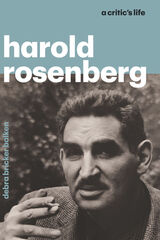 Harold Rosenberg: A Critic‘s Life
Debra Bricker Balken
University of Chicago Press, 2021 Despite being one of the foremost American intellectuals of the mid-twentieth century, Harold Rosenberg (1906–1978) was utterly incapable of fitting in—and he liked it that way. Signature cane in one hand and a cigarette in the other, he cut a distinctive figure on the New York City culture scene, with his radiant dark eyes and black bushy brows. A gangly giant at six foot four, he would tower over others as he forcefully expounded on his latest obsession in an oddly high-pitched, nasal voice. And people would listen, captivated by his ideas.
With Harold Rosenberg: A Critic’s Life, Debra Bricker Balken offers the first-ever complete biography of this great and eccentric man. Although he is now known mainly for his role as an art critic at the New Yorker from 1962 to 1978, Balken weaves together a complete tapestry of Rosenberg’s life and literary production, cast against the dynamic intellectual and social ferment of his time. She explores his role in some of the most contentious cultural debates of the Cold War period, including those over the commodification of art and the erosion of individuality in favor of celebrity, demonstrated in his famous essay “The Herd of Independent Minds.” An outspoken socialist and advocate for the political agency of art, he formed deep alliances with figures such as Hannah Arendt, Saul Bellow, Paul Goodman, Mary McCarthy, Jean-Paul Sartre, Willem de Kooning, and Jackson Pollock, all of whom Balken portrays with vivid accounts from Rosenberg’s life.
Thoroughly researched and captivatingly written, this book tells in full Rosenberg’s brilliant, fiercely independent life and the five decades in which he played a leading role in US cultural, intellectual, and political history.
 The Harp of Prophecy: Early Christian Interpretation of the Psalms
Brian E. Daley, S.J.
University of Notre Dame Press, 2015 The Psalms generated more biblical commentary from early Christians than any other book of the Hebrew and Christian canon. While advances have been made in our understanding of the early Christian preoccupation with this book and the traditions employed to interpret it, no study on the Psalms traditions exists that can serve as a solid academic point of entry into the field. This collection of essays by distinguished patristic and biblical scholars fills this lacuna. It not only introduces readers to the main primary sources but also addresses the unavoidable interpretive issues present in the secondary literature.
The essays in The Harp of Prophecy represent some of the very best scholarly approaches to the study of early Christian exegesis, bringing new interpretations to bear on the work of influential early Christian authorities such as Athanasius, Augustine, and Basil of Caesarea. Subjects that receive detailed study include the dynamics of early Christian political power, gender expressions, and the ancient conversation between Christian, Jewish, and Greek philosophical traditions. The essays and bibliographic materials enable readers to locate and read the early Christian sources for themselves and also serve to introduce the various interdisciplinary methods and perspectives that are currently brought to bear on early Christian psalm exegesis. Students and scholars of theology and biblical studies will be led in new directions of thought and interpretation by these innovative studies.
"This wonderful volume shows us the Psalms as a living and sacred text, forming and nurturing the individual and communal lives of early Christians. Each essay sheds light of a distinct hue on this complex reality until the whole is seen with a clarity not previously apparent. These rich essays explore the techniques of ancient interpretation, the theological underpinnings that allowed the Psalms to be seen as a God-given language for those being incorporated into Christ, and the social contexts that shaped the use and interpretation of the Psalms. Each is excellent; as a whole the collection is a rare gift." —Lewis Ayres, Durham University
"The editors of this volume have engaged a stellar cast of thoughtful scholars to add to the burgeoning retrieval of Christianity’s faithful devotion to the Psalter. The essays herein attest to the Psalter’s infinite fecundity to offer personal emotional support under pressured circumstances, a program for progress in the spiritual life, a map for ecclesiastical authority to lead the church, an opportunity to experience 'the whole Christ,' and much more. Each essay will repay the reader’s effort tenfold." —Ellen T. Charry, Margaret W. Harmon Professor of Systematic Theology, Princeton Theological Seminary
"This exceptional collection of essays brings the book of Psalms and its transformative role in early Christian lives into new focus. The distinguished scholars gathered in this volume illustrate how the Psalms animated the liturgical, devotional, and scholarly habits of early Christians. This singular book bequeathed a rich vocabulary to its readers and hearers, new ways of thinking about God and themselves, and ultimately the words with which to address God. The Harp of Prophecy provides a splendid introduction to the ways in which early Christians re-imagined the Psalms." —Peter Martens, Saint Louis University
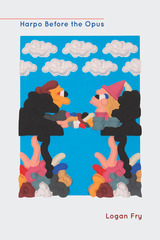 Harpo Before the Opus
Logan Fry
Omnidawn, 2019 The poems begin where language fails, where speech becomes disembodied, and syntax skids to a stop that dissolves into gesture. Where its form reaches an end, formlessness offers a space ripe with possibility. Here we find Harpo, reaching into the frustrated endpoint of language to find a method for its resurrection. Fry sees that language becomes a tool for alienation and uses the poems in Harpo Before the Opus to excavate paths back to tenderness. These are poems from the edge, pulling language out from its failure and into a fervent interrogation of its possibilities. What was once a tool of capitalistic alienation now serves as material for building connections.
In spiraling explorations of rhetoric, these poems allow language to break from its prescribed structures, and instead, it becomes a gestural embrace of feeling and being. Fry utilizes a Marxist lens to scrutinize and reinvent the use of language. In Fry’s hands, language is rendered a visceral and sensual material, forming poems that are both deeply felt philosophical inquiries and wildly playful exercises of wit.
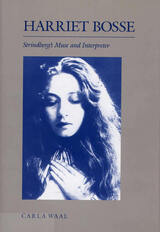 Harriet Bosse: Strindberg's Muse and Interpreter
Carla Waal
Southern Illinois University Press, 1990
Harriet Bosse, a delicate beauty with rich theatrical talent, wasan inspiration for the prominent and controversial playwright August Strindberg. After their three-year marriage collapsed, she became his interpreter to the world, guardian of the Strindberg legend. This first biography of Harriet Bosse in English explores her own important career as an actress on the Swedish stage, as well as her influence on Strindberg’s work. Waal has separated Harriet Bosse from her romanticized image in the shadow of August Strindberg and has shown her as a person, fascinating and self-sufficient. Her daughter-in-law Randi Wingård said: "Harriet was a great personality, and even if she was tiny, one could nothelp noticing her in any gathering. She attracted everyone’s attention." While tracing the development of Bosse’s career, her triumphs and disappointments, Waal chronicles the beginnings of Swedish filmmaking in early silent films as well as four decades of major developments in Swedish theatre. But Bosse’s marriage to Strindberg and her relationship to his writing are an integral part of her story, and Waal also details the couple’s stormy marriage, from 1901 to 1903, the reasons for its failure, and the personal and career influences they continued to exert on each other. As Strindberg’s inspiration for many literary works, Bosse was alternately vilified and idealized. Much of what Strindberg wrote after meeting Bosse reflects his adoration of her and his despair over the problems of their relationship. She inspired two of his major works of poetry, "The Golden Eagle" and "The Dutchman," in addition to the character of the virgin princess in Swan White. On stage she played eight minor and six major Strindberg roles, including Indra’s Daughter in A Dream Play and Christina in Queen Christina.
Much information for this book is drawn from previously inaccessible sources, including unpublished materials in libraries, archives, and private collections, mostly in Scandinavia. Waal interviewed Strindberg and Bosse’s daughter Anne Marie Wyller Hagelin (to whom the book is dedicated) as well as other members of Bosse’s family and a wide range of actors, critics, directors, and scholars. Forty-one photographs are included in the text.
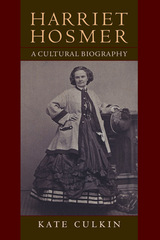 Harriet Hosmer: A Cultural Biography
Kate Culkin
University of Massachusetts Press, 2010 Harriet Hosmer (1830–1908) was celebrated as one of the country's most respected artists, credited with opening the field of sculpture to women and cited as a model of female ability and American refinement. In this biographical study, Kate Culkin explores Hosmer's life and work and places her in the context of a notable group of expatriate writers and artists who gathered in Rome in the mid-nineteenth century.
In 1852 Hosmer moved from Boston to Rome, where she shared a house with actress Charlotte Cushman and soon formed close friendships with such prominent expatriates as Robert and Elizabeth Barrett Browning and fellow sculptors John Gibson, Emma Stebbins, and William Wetmore Story. References to Hosmer or characters inspired by her appear in the work of Nathaniel Hawthorne, Louisa May Alcott, and Kate Field among others. Culkin argues that Hosmer's success was made possible by her extensive network of supporters, including her famous friends, boosters of American gentility, and women's rights advocates. This unlikely coalition, along with her talent, ambition, and careful maintenance of her public profile, ultimately brought her great acclaim. Culkin also addresses Hosmer's critique of women's position in nineteenth-century culture through her sculpture, women's rights advocates' use of high art to promote their cause, the role Hosmer's relationships with women played in her life and success, and the complex position a female artist occupied within a country increasingly interested in proving its gentility.
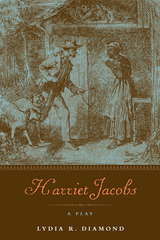 Harriet Jacobs: A Play
Lydia R. Diamond
Northwestern University Press, 2010 Throughout her meteoric rise into the upper ranks of young playwrights, Lydia R. Diamond has boldly challenged assumptions about African American culture. In Harriet Jacobs, she turns one of the greatest of American slave narratives, Jacobs’ Incidents in the Life of a Slave Girl, into a penetrating, rousing work of theater.
Jacobs’ book—which was published in 1861 and only partially serialized in Horace Greely’s New York Tribune before it was deemed too graphic—chillingly exposed the sexual harassment and abuse of slave girls and women at the hands of their masters. Harriet Jabobs: A Play organically incorporates theatrical elements that extend the book’s enormous power. Through active scenes, piercing direct address, and slave narratives, Diamond is able to give new expression to the horrors and legacies of slavery. Diamond presents African American culture in all its richness—with slavery as a part of it, but not its defining aspect. Though harrowing, Harriet Jacobs addresses the necessary task of reenvisioning a difficult chapter in American history.
Harriet Rubin's Mother's Wooden Hand
Susan Hahn
University of Chicago Press, 1991 Redolent of Chicago's ethnic culture, Susan Hahn's intensely personal lyrics emerge from the world of an extended Jewish family and its neighbors. The voices of these immigrants are imbued with the profound effects and memories of the journey "From a patrolled town in the Ukraine/to Baltimore on a boat, then a train to Chicago." Hahn's poetry is about love and the lack of love, about rejection, and about other forces—generational, political, social, and sexual—that overwhelm individuals and cause them to limit themselves both physically and psychologically.
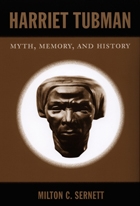 Harriet Tubman: Myth, Memory, and History
Milton C. Sernett
Duke University Press, 2007 Harriet Tubman is one of America’s most beloved historical figures, revered alongside luminaries including Abraham Lincoln and Frederick Douglass. Harriet Tubman: Myth, Memory, and History tells the fascinating story of Tubman’s life as an American icon. The distinguished historian Milton C. Sernett compares the larger-than-life symbolic Tubman with the actual “historical” Tubman. He does so not to diminish Tubman’s achievements but rather to explore the interplay of history and myth in our national consciousness. Analyzing how the Tubman icon has changed over time, Sernett shows that the various constructions of the “Black Moses” reveal as much about their creators as they do about Tubman herself. Three biographies of Harriet Tubman were published within months of each other in 2003–04; they were the first book-length studies of the “Queen of the Underground Railroad” to appear in almost sixty years. Sernett examines the accuracy and reception of these three books as well as two earlier biographies first published in 1869 and 1943. He finds that the three recent studies come closer to capturing the “real” Tubman than did the earlier two. Arguing that the mythical Tubman is most clearly enshrined in stories told to and written for children, Sernett scrutinizes visual and textual representations of “Aunt Harriet” in children’s literature. He looks at how Tubman has been portrayed in film, painting, music, and theater; in her Maryland birthplace; in Auburn, New York, where she lived out her final years; and in the naming of schools, streets, and other public venues. He also investigates how the legendary Tubman was embraced and represented by different groups during her lifetime and at her death in 1913. Ultimately, Sernett contends that Harriet Tubman may be America’s most malleable and resilient icon.
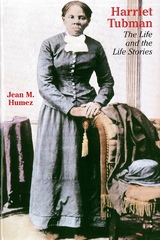 Harriet Tubman: The Life and the Life Stories
Jean M. Humez
University of Wisconsin Press, 2005 Harriet Tubman’s name is known world-wide and her exploits as a self-liberated Underground Railroad heroine are celebrated in children’s literature, film, and history books, yet no major biography of Tubman has appeared since 1943. Jean M. Humez’s comprehensive Harriet Tubman is both an important biographical overview based on extensive new research and a complete collection of the stories Tubman told about her life—a virtual autobiography culled by Humez from rare early publications and manuscript sources. This book will become a landmark resource for scholars, historians, and general readers interested in slavery, the Underground Railroad, the Civil War, and African American women.
Born in slavery in Maryland in or around 1820, Tubman drew upon deep spiritual resources and covert antislavery networks when she escaped to the north in 1849. Vowing to liberate her entire family, she made repeated trips south during the 1850s and successfully guided dozens of fugitives to freedom. During the Civil War she was recruited to act as spy and scout with the Union Army. After the war she settled in Auburn, New York, where she worked to support an extended family and in her later years founded a home for the indigent aged. Celebrated by her primarily white antislavery associates in a variety of private and public documents from the 1850s through the 1870s, she was rediscovered as a race heroine by woman suffragists and the African American women’s club movement in the early twentieth century. Her story was used as a key symbolic resource in education, institutional fundraising, and debates about the meaning of "race" throughout the twentieth century.
Humez includes an extended discussion of Tubman’s work as a public performer of her own life history during the nearly sixty years she lived in the north. Drawing upon historiographical and literary discussion of the complex hybrid authorship of slave narrative literature, Humez analyzes the interactive dynamic between Tubman and her interviewers. Humez illustrates how Tubman, though unable to write, made major unrecognized contributions to the shaping of her own heroic myth by early biographers like Sarah Bradford. Selections of key documents illustrate how Tubman appeared to her contemporaries, and a comprehensive list of primary sources represents an important resource for scholars.
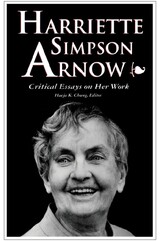 Harriette Simpson Arnow: Critical Essays on Her Work
Haeja K. Chung
Michigan State University Press, 1995 At her death in 1986, Harriette Simpson Arnow left a modest collection of published work: ten short stories, five novels, two non-fiction books, a short autobiography, and nineteen essays and book reviews. Although the sum is small, her writing has been examined from regionalist, Marxist, feminist, and other critical perspectives.
The 1970s saw the first serious attempts to revive interest in Arnow. In 1971, Tillie Olsen identified her as a writer whose "books of great worth suffer the death of being unknown, or at best, a peculiar eclipsing." Joyse Carol Oates wrote in The New York Times Book Review that Arnow's The Dollmaker is "our most unpretentious American masterpiece."
In the 1990s, it is appropriate to take stock of her earlier work and to prompt reexamination of this powerful yet poorly understood writer. This collection of critical essays examines traditional as well as new interpretations of Arnow and her work. It also suggests future directions for Arnow scholarship and includes studies of all of Arnow's writing, fiction and non-fiction, published and unpublished.
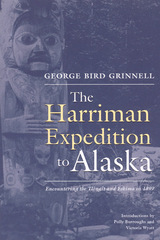 Harriman Expedition to Alaska: Encountering the Tlingit and Eskimo in 1899
George Grinnell
University of Alaska Press, 2007 In 1899, George Bird Grinnell journeyed to Alaska on the Harriman Expedition, a scientific cruise from Seattle to the North Pacific. Accompanied by explorer John Muir and photographer Edward S. Curtis, Grinnell spent two months chronicling the lives of the Natives of Alaska and Siberia.
A keen observer of his surroundings, Grinnell provides a unique perspective on northern life in the late nineteenth century. He documented hunting techniques and material culture of the Eskimo of Siberia, as well as the totem poles and architecture of the Tlingit of Southeast. As a pioneer conservationist, Grinnell was one of the first to express concern over the effects of trade and industry on Alaska's peoples and natural resources.
Illustrated with photos and drawings by Harriman Expedition members, including Edward S. Curtis, this volume makes the work of a passionate observer available to a new generation of readers.
 The Harrisburg 7 and the New Catholic Left: 40th Anniversary Edition
William O'Rourke
University of Notre Dame Press, 2012
“During the first three months of 1972 a trial took place in the middle district of Pennsylvania: THE UNITED STATES OF AMERICA versus Eqbal Ahmad, Philip Berrigan, Elizabeth McAlister, Neil McLaughlin, Anthony Scoblick, Mary Cain Scoblick, Joseph Wenderoth. The defendants stood accused of conspiring to raid federal offices, to bomb government property, and to kidnap presidential advisor Henry Kissinger. Six of those seven individuals are, or were, Roman Catholic clergy—priests and nuns. Members of the new ‘Catholic Left.’”—from the introduction
When The Harrisburg 7 and the New Catholic Left was originally published in 1972, it remained on The New York Times Book Review “New and Recommended” list for six weeks and was selected as one of the Notable Books of the Year. Now, forty years later, William O’Rourke’s book eloquently speaks to a new generation of readers interested in American history and the religious anti-war protest movements of the Vietnam era.
O’Rourke brings to life the seven anti-war activists, who were vigorously prosecuted for alleged criminal plots, filling in the drama of the case, the trial, the events, the demonstrations, the panels, and the people. O’Rourke includes a new afterword that presents a sketch of the evolution of protest groups from the 1960s and 1970s, including the history of the New Catholic Left for the past four decades, claiming that “[a]fter the Harrisburg trial, the New Catholic Left became the New Catholic Right.”
“O’Rourke’s book on the Harrisburg trial was a classic when it first appeared and remains a classic of trial reporting, an account even forty years later that is still pertinent to our contemporary situation. His new afterword is a gem of condensed history. It is a boon to journalists, historians, and political analysts, as well as the general reader, to have this book back in print.” —David Black, author of The King of Fifth Avenue and The Extinction Event
Reviews for the first edition:
“. . . a paean to the seven religious revolutionaries, a rueful but loving acknowledgment of their ‘brave and foolish letters,’ and a solemn threnody for the Catholic left, ‘broken by the mortar and pestle of this trial.'" —New Republic
“[The book is] in my opinion, a discovery, not so much about the facts of the trial but about what the antiwar priests and nuns of today mean to Catholic youth.”—Herbert Mitgang, The Progressive
"This is not only the best volume on any of the recent political trials. . . but a clinical x-ray of our society’s condition." — Garry Wills, The New York Times Book Review
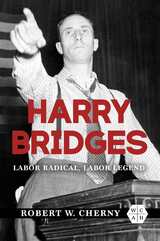 Harry Bridges: Labor Radical, Labor Legend
Robert W. Cherny
University of Illinois Press, 2023 The iconic leader of one of America’s most powerful unions, Harry Bridges put an indelible stamp on the twentieth century labor movement. Robert Cherny’s monumental biography tells the life story of the figure who built the International Longshore and Warehouse Union (ILWU) into a labor powerhouse that still represents almost 30,000 workers. An Australian immigrant, Bridges worked the Pacific Coast docks. His militant unionism placed him at the center of the 1934 West Coast Waterfront Strike and spurred him to expand his organizing activities to warehouse laborers and Hawaiian sugar and pineapple workers. Cherny examines the overall effectiveness of Bridges as a union leader and the decisions and traits that made him effective. Cherny also details the price paid by Bridges as the US government repeatedly prosecuted him for his left-wing politics. Drawing on personal interviews with Bridges and years of exhaustive research, Harry Bridges places an extraordinary individual and the ILWU within the epic history of twentieth-century labor radicalism.
 Harry Hopkins: Ally of the Poor and Defender of Democracy
George McJimsey
Harvard University Press, 1987 During America's longest crisis—the Great Depression and the Second World War—one man stood nearest to the president, almost as a partner: Harry Hopkins, trusted and loyal lieutenant and best friend of Franklin D. Roosevelt. From his work on the New Deal through his assignments during the war, Hopkins was the grand planner, expediter, adviser, and negotiator. Here is the first complete modern biography of this remarkable man, based on prodigious primary sources and written with the benefit of historical perspective.
George McJimsey fully records Hopkins's meteoric public career and probes the sources of his creativity and talent. Reared in Iowa with missionary values, he became a professional social worker in New York, pioneering strategies for several health and social service agencies. His special talent for persuasion and conciliation brought him into the New Deal, where as head of the Federal Emergency Relief Agency and the Public Works Administration he led Roosevelt's recovery programs—helping to pump billions of dollars into large projects and into tens of thousands of jobs without any political scandal or great conflict with conservative adversaries or competitors such as Harold Ickes. Later, as Secretary of Commerce, he continued to lead the country out of depression.
The coming of war tested Hopkins in new and unexpected ways. From being democracy's great bureaucrat he became the grand vizier of the arsenal of democracy. Living in the White House (in the Lincoln Room), Hopkins organized Lend-Lease, built the Anglo-American alliance, coordinated military supplies with strategic objectives, negotiated with Stalin, and helped to plan FDR's meetings with Churchill, Stalin, De Gaulle, and Chiang Kai-shek. Intelligent, humane, imaginative yet practical, always loyal to Roosevelt yet operating with his own creative independence, Hopkins played a role in winning the war and shaping the peace that provides an inspiring example of devoted public service. General readers and historians, journalists, and everyone interested in how government works will value and enjoy this book.
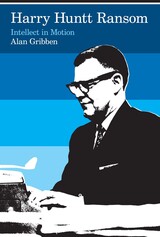 Harry Huntt Ransom: Intellect in Motion
By Alan Gribben
University of Texas Press, 2008 Both a life story and a portrait of public higher education during the twentieth century, Harry Huntt Ransom captures the spirit of a dynamic individual who dedicated his talents to nurturing intellectual life in Texas and beyond. Tracing the details of Ransom's youth in Galveston and Tennessee and his education at Yale, where he earned a doctorate, Alan Gribben provides new insight into the factors that shaped Ransom's future as a renowned administrator and defender of the humanities. Ransom's career at the University of Texas began in 1935, when he was hired as an instructor of English. He rose through the ranks to become chancellor, stepping down in 1971 during a volatile period when debates about the University's central mission raged—particularly over the question of commercializing higher education. The development of Ransom's lasting legacy, the Humanities Research Center bearing his name, is explored in depth as well. Bringing to life a legendary figure, Harry Huntt Ransom is a colorful testament to a singular man of letters who had the audacity to propose "that there be established somewhere in Texas—let's say in the capital city—a center of our cultural compass, a research center to be the Bibliothèque Nationale of the only state that started out as an independent nation."
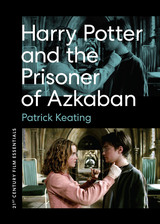 Harry Potter and the Prisoner of Azkaban
By Patrick Keating
University of Texas Press, 2021 An essential work of twenty-first-century cinema, Alfonso Cuarón’s 2004 film Harry Potter and the Prisoner of Azkaban is an elegant exemplar of contemporary cinematic trends, including serial storytelling, the rise of the fantasy genre, digital filmmaking, and collaborative authorship. With craft, wonder, and wit, the film captures the most engaging elements of the novel while artfully translating its literary point of view into cinematic terms that expand on the world established in the book series and previous films. In this book, Patrick Keating examines how Cuarón and his collaborators employ cinematography, production design, music, performance, costume, dialogue, and more to create the richly textured world of Harry Potter—a world filtered principally through Harry’s perspective, characterized by gaps, uncertainties, and surprises. Rather than upholding the vision of a single auteur, Keating celebrates Cuarón’s direction as a collaborative achievement that resulted in a family blockbuster layered with thematic insights.
|
|
